Starlink Satellite Constellation
Non-EO
Other
Operational (nominal)
Data collection
The Starlink satellite constellation has been developed by Starlink Services, LLC and SpaceX. The first satellite was launched in May 2019 and, since then, more than 7,000 other satellites have been deployed to provide internet coverage to over one hundred countries, with the aim to achieve global mobile broadband coverage.
Quick facts
Overview
| Mission type | Non-EO |
| Agency | SpaceX |
| Mission status | Operational (nominal) |
| Launch date | 24 May 2019 |
| Instrument type | Other, Data collection |
Starlink Satellite Constellation of SpaceX
Overview
Starlink is a satellite constellation development project underway by SpaceX, to develop a low-cost, high-performance satellite bus and requisite customer ground transceivers to implement a new spaceborne Internet communication system.
SpaceX has said it will offer speeds of up to 1 Gbit/s, with latencies between 25 ms and 35 ms. Those latencies would make SpaceX's service comparable to cable and fiber, while existing satellite broadband services have latencies of 600 ms or more, according to FCC measurements.
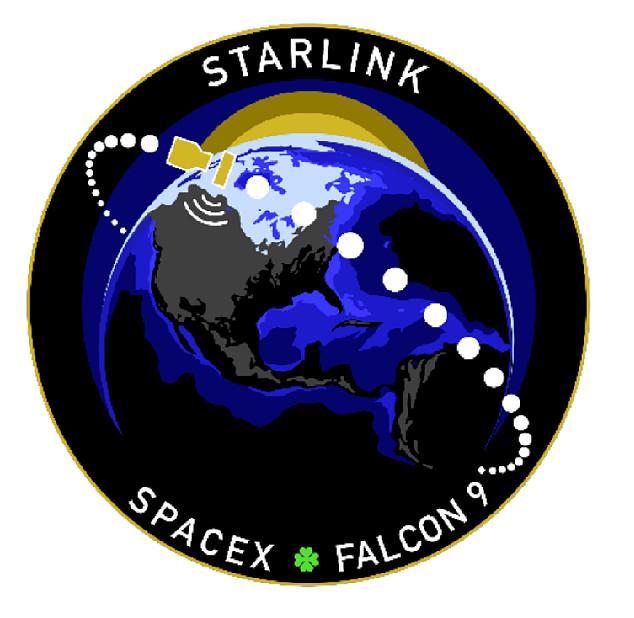
Figure 1: Starlink constellation logo (image credit: SpaceX)
Background
In November 2016, SpaceX filed an application with the FCC (Federal Communications Commission) for a license to operate a constellation of 4425 non-geostationary satellites (NGS) in orbits ranging from 1100 and 1300 km. However, when they issued their regulatory filings in 2017, the plan called for the deployment of nearly 12,000 satellites in Low Earth Orbit (LEO). 1)
However, competition from other satellite internet providers forced SpaceX to expedite their plans. By the Fall of 2018, the company announced a new plan to deploy their first batch of 1600 satellites to a lower altitude at 550 km. The development team also introduced a simplified design so that the first batch would be ready to go no later than the June of 2019.
Rather than broadcasting in two bands (“Ku” and “Ka”), the simplified design of the first batch will broadcast only in the “Ku” band. At present, SpaceX hopes to launch 2200 satellites in the next five years, which will act as a sort of prototype while the company develops an improved design for full-scale production.
Eventually, this will result in a constellation that offers the kinds of performance outlined in the company’s original plan. This presents numerous challenges, not the least of which is the fact that they will need to conduct launches every month for the next five years, averaging 44 satellites per launch.
Second, there’s the matter of attrition, as satellites will begin to deorbit after a few years and SpaceX will need to replace them regularly in order to maintain its constellation. In fact, Hugh Lewis – the UK Space Agency’s representative on the Inter-Agency Space Debris Coordination Committee – recently stated that in order to maintain a constellation of just 4425 satellites, SpaceX will have to launch that many every five years.
However, SpaceX intends to use this to their advantage by gradually replacing inactive satellites with ones that offer superior performance. In this way, the constellation will gradually be upgraded with the addition of heavier satellites that are capable of transmitting more information, and which are placed in longer-lasting, higher orbits.
SpaceX will also need a lot of production space if they are going to meet even the more modestly-sized constellation of 4425. While the company has commenced converting one of their Starlink buildings into a prototype production facility that will assemble the first few dozen satellites, this is merely a fraction of what they will need in the long run.
Starlink is also going to be seeing competition in the coming years thanks to companies like OneWeb and Telesat, which plans to create smaller constellations that will offer service by 2021. Tech giants like Amazon and Samsung have also announced plans to deploy their own constellations, which would consist of 3,236 to 4600 broadband satellites, respectively.
Another Spectrum Battlefront
Satellite broadcaster Dish Network had permission from the FCC to use 2 GHz and other spectrum bands for its U.S.-based terrestrial wireless network.
“While DISH Network is currently licensed to operate in the band, there is scant evidence that DISH is actually providing MSS service to anyone, anywhere,” Goldman told the FCC.
Starlink would also use the 2 GHz band to provide services in rural regions that Dish’s network would not cover, according to Goldman. He added that the MSS system would not interfere with other users of the band, including replacement satellites that Dish could order.
SpaceX and Dish, respectively controlled by billionaires Elon Musk and Charlie Ergen, have also been battling over spectrum in the 12 GHz band, which is part of the Ku-band that Starlink and other non-geostationary satellite operators use to connect user terminals. Dish is asking the FCC for permission to upgrade a license it has in the 12 GHz band to support its 5G network plans.
SpaceX told the FCC the plan would create interference that would make Starlink unusable for most Americans. British satellite operator OneWeb and U.S. satellite broadcaster DirecTV have also raised interference concerns about Dish’s proposal.
Conflicting Analysis
Both RS Access and Dish Network have licenses in the 12 GHz band that they are seeking to upgrade for high-speed terrestrial mobile services. The 12 GHz band is part of the Ku-band spectrum that Starlink, OneWeb and other satellite operators use to connect with user terminals.
RS Access told the FCC that 5G wireless broadband in the 12.2-12.7 GHz band “can readily coexist” with NGSO “fixed satellite service deployments, which use 10.7-12.7 GHz for downlink.” However, tests conducted showed how Starlink would become unusable for most Americans if the FCC allowed high-power mobile services in the 12 GHz band.
Starlink users would experience harmful interference 77% of the time, according to SpaceX’s study, and total outage of services 74% of the time.
The 5G for 12 GHz Coalition took issue with how SpaceX’s results were generated from the Las Vegas partial economic area (PEA), in “contrast to the nationwide simulation submitted by RKF.” But the 5G for 12 GHz Coalition said this PEA’s “unique topology and morphology” makes it ten times as unfavorable to assess 5G and satellite coexistence as the national average.
- It said: “If the assumptions SpaceX uses in Las Vegas are extrapolated nationwide, they would necessitate the deployment of over 600,000 macro 12 GHz sites across the country.”
The 5G for 12 GHz Coalition’s statement comes a week after the FCC gave Starlink permission to use part of the 12 GHz band to connect vehicles, boats and aircraft on the move — in addition to fixed locations — subject to various conditions.
Antenna Pain Point
The price of user terminals remains a challenge for SpaceX, which is heavily subsidizing them. Shotwell told the conference that SpaceX continues to lose money on user terminals with every customer it acquires, because their cost is higher than the average user can afford.
She said the company is on track to reduce the cost of its user terminals, which are priced to consumers at $499, by roughly half before the end of this year. However, she pointed to a global lack of semiconductors that has “delayed the new user terminals,” and a shortage of liquid oxygen that is posing other challenges for the launch side of its business.
Stopping on Environmental Grounds
Viasat headed to court on June 2, 2021 in an effort to stop SpaceX from launching more Starlink satellites on environmental grounds. The Carlsbad, California-based company recently gave the FCC until the end of June 1 to stay an April 27 license modification, which has been enabling SpaceX to continue building out the constellation at an altitude of around 550-kilometers.
That is the same court where Viasat intends to argue that the FCC was legally obligated to thoroughly assess Starlink’s environmental impact before approving the license modification.
That is the same court where Viasat intends to argue that the FCC was legally obligated to thoroughly assess Starlink’s environmental impact before approving the license modification.
Five days after Viasat called on the FCC May 21 to stay Starlink’s license modification, SpaceX launched another batch of 60 satellites to expand the constellation at 550-kilometers. Before the modification, SpaceX was only permitted to operate 1,584 satellites at 550-kilometers, with permission for 2,825 more in orbits of 1,100 to 1,300-kilometers. The modification reduces Starlink’s signal lag for video calls, gaming and other latency-critical applications because there is less distance between the satellites in space and antennas on the ground.
Reactions
Viasat, which strongly opposed the SpaceX modification request, had a mixed reaction to the FCC decision. “We are pleased the Commission confirmed that Starlink satellites must be reliable and safe, and also recognized the need to assess the cumulative (aggregate) collision risk presented by the entire Starlink constellation,” John Janka, chief officer for global regulatory and government affairs at Viasat, said in a statement to SpaceNews.
“We are disappointed that the Commission failed to fulfill its statutory obligations under NEPA and did not follow the Biden-Harris administration’s commitment to a science-based approach to protecting the atmosphere, the Earth’s climate, space, the well-being of U.S. citizens, and critical research that relies upon radio and optical astronomy,” he added.
“This is a positive outcome that places clear conditions on SpaceX, including requirements that it remain below 580 km and accept additional interference resulting from its redesign,” an Amazon spokesperson told SpaceNews. “These conditions address our primary concerns regarding space safety and interference, and we appreciate the Commission’s work to maintain a safe and competitive environment in low earth orbit.”
SpaceX did not issue a statement about the FCC’s decision, but in a tweet, SpaceX Chief Executive Elon Musk called the FCC “fair & sensible.”
Spacecraft
Designed and built upon the heritage of Dragon, each spacecraft is equipped with a Startracker navigation system that allows SpaceX to point the satellites with precision. Importantly, Starlink satellites are capable of tracking on-orbit debris and autonomously avoiding collision. Additionally, 95 percent of all components of this design will quickly burn in Earth’s atmosphere at the end of each satellite’s lifecycle—exceeding all current safety standards—with future iterative designs moving to complete disintegration. This mission will push the operational capabilities of the satellites to the limit. SpaceX expects to encounter issues along the way, but the lessons learned here are key to developing an affordable and reliable broadband service in the future (Ref. 102).
Some spacecraft parameters: 2)
• Flat-panel design with multiple high-throughput antennas and a single solar array
• Spacecraft mass: 227 kg
• Hall-effect thrusters using krypton as the reaction mass, for position adjustment on orbit, altitude maintenance and deorbit
• Star tracker navigation system for precision pointing
• Able to use Department of Defense provided debris data to autonomously avoid collision 3)
• 95 percent of "all components of this design will quickly burn in Earth’s atmosphere at the end of each satellite’s lifecycle"
The 60 Starlink V1.0 satellites, launched on 11 November 2019, have the additional following characteristics:
• 100% of "all components of this design will quickly burn in Earth's atmosphere at the end of each satellite's lifecycle."
• Ka-band added
• Spacecraft mass of 260 kg
• Albedo reduced.
The satellites are stacked for launch without the need for a dispenser. As a propulsion system for orbit adjustment and maintenance as well as deorbiting, they use krypton-fueled Hall thrusters. The startracker navigation system is based on the heritage of Dragon. The satellites are designed autonomously avoid collisions based on uplinked tracking data. At the end of life, the Starlink satellites are to be actively deorbited, leading to reentry.
Orbit: Circular orbit with an altitude of 550 km. The Starlink spacecraft constellation will be spread into 24 orbital planes with an inclination of 53º.
Starlink Premium
For the areas it is available, Starlink’s website says users “can expect to see download speeds” of 100-200 Mbit/s and “latency as low as” 20 milliseconds “in most locations.”
Users are charged $499 for hardware that includes an antenna and $99 per month for the service.
However, SpaceX CEO Elon Musk announced a more expensive service tier via Twitter Feb. 2 called Starlink Premium, which he said will include an antenna with “twice the area of our standard phased array with broader scan angle.”
According to Starlink Premium’s website, the new service is specifically designed for small offices, storefronts, and high-demand users who can expect download speeds of 150-500 Mbit/s. “Designed specifically for high demand users, Starlink Premium helps ensure bandwidth for critical operations even during times of peak network usage,” the website says. Starlink Premium users will be charged $2,500 for hardware and a $500 monthly fee for the service.
Launches
The first demonstation flight of SpaceX's Starlink satellite constellation launched on 24 May, 2019 at 02:30 UTC, with the twice-flown Falcon-9 rocket from SLC-40 (Space Launch Complex-40) at Cape Canaveral Air Force Station, Florida. 101) 102)
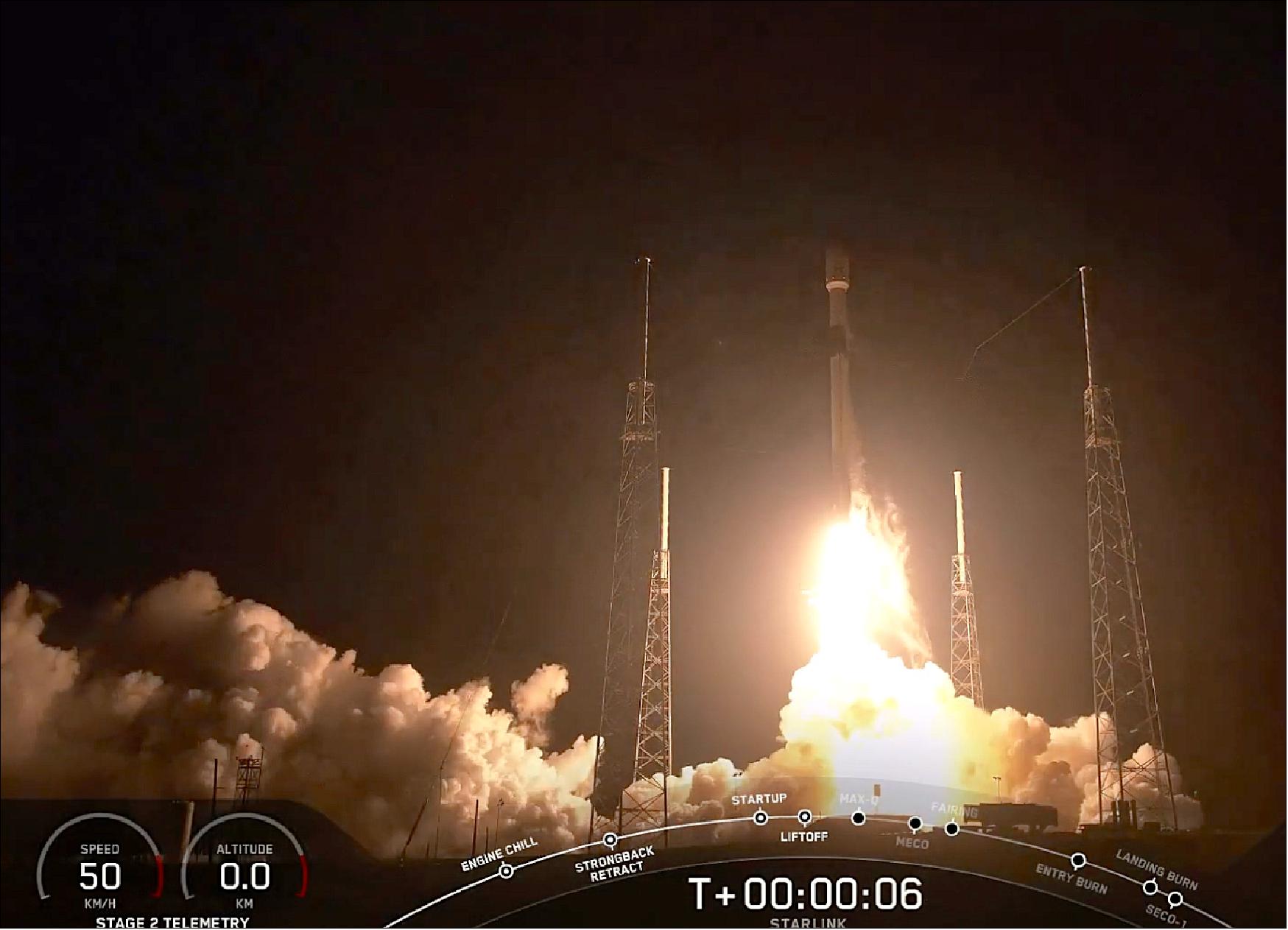
Figure 2: Image of the first launch of SpaceX's Starlink satellite constellation on 24 May 2019 at 2:30 UTC (image credit: Satnews Daily)
Eight minutes after the launch, the first stage of the rocket successfully landed on the drone ship Of Course I Still Love You (OCISLY) in the Atlantic Ocean. This was the third flight for the first stage booster, having flown on the Telstar 18 VANTAGE mission in September 2018, and the Iridium-8 mission in January 2019.
Several launches have followed the first one. Please see Table 1 for more details.
| Starlink Spacecraft Version | Launched between (UTC) |
|---|---|
| v2-Mini-D2C G9 | June 19, 2024 - September 25, 2024 |
| v2-Mini-D2C G8 | May 10, 2024 - September 5, 2024 |
| v2-Mini-D2C T2 | April 7, 2024 |
| v2-Mini-D2C T1 | January 3, 2024 |
| v2-Mini G11 | August 4, 2024 |
| v2-Mini G10 | June 8, 2024 - August 20, 2024 |
| v2-Mini G9 | June 19, 2024 - September 25, 2024 |
| v2-Mini G8 | April 7, 2024 - September 5, 2024 |
| v2-Mini G7 | August 22, 2023 - April 2, 2024 |
| v2-Mini G6 | February 27, 2023 - June 1, 2024 |
| v1.5 G5 | December 28, 2022 - July 16, 2023 |
| v1.5 G4 | November 13, 2021 - December 17, 2022 |
| v1.5 G3 | July 11, 2022 - April 27, 2023 |
| v1.5 R1 and G2 | June 30, 2021 - May 31, 2023 |
| v1.0 | November 11 2019 - May 26, 2021 |
| v0.9 | May 24, 2019 |
Orbit
The satellites vary in altitude between 207 km and 630 km, with the majority orbiting at 559 km, with inclinations between 43º and 97.6º.
Spaceport
All missions were launched on a Falcon 9 rocket from either:
Florida, USA: Space Launch Complex 40 (SLC-40) in the Cape Canaveral Air Force Base, and Launch Complex 39A (LC-39A) at NASA’s Kennedy Space Center.
California, USA: Space Launch Complex 4E (SLC-4E) at the Vandenberg Space Force Base (VSFB).
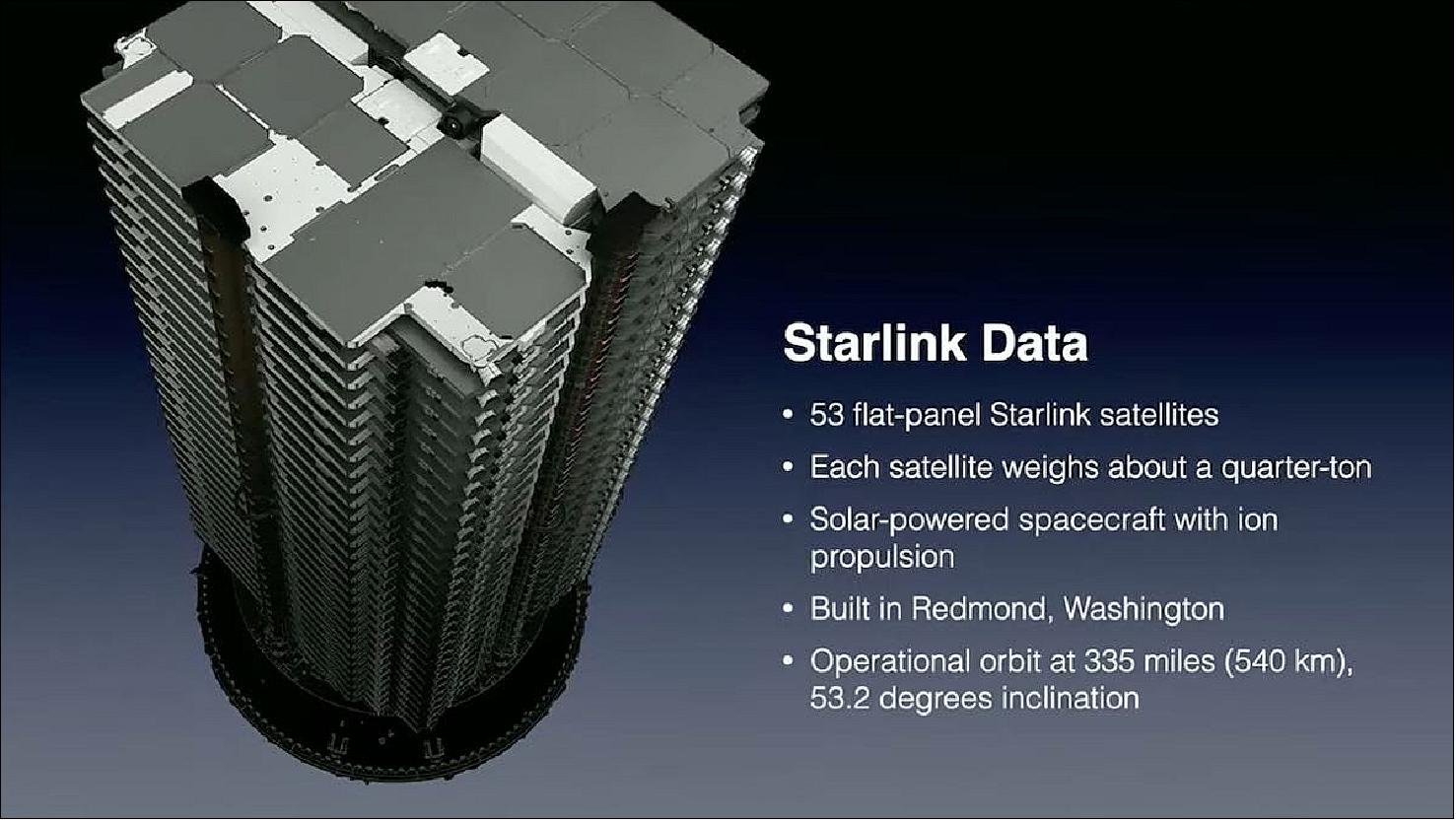
Figure 3: Illustration of a Starlink stack of 53 satellites (image credit: Spaceflight Now)
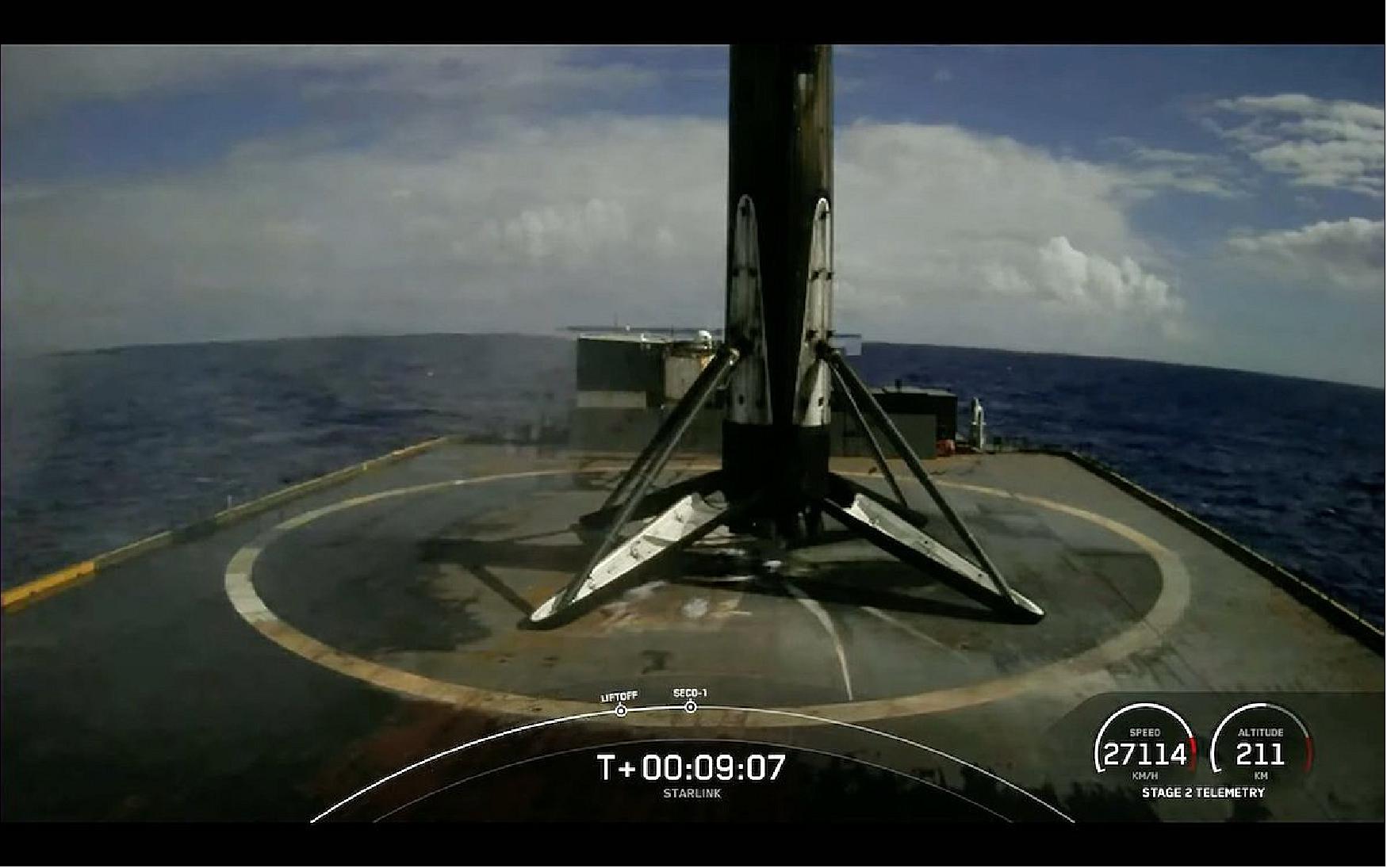
Figure 4: SpaceX’s first stage on the drone ship “Just Read the Instructions.”(image credit: SpaceX)
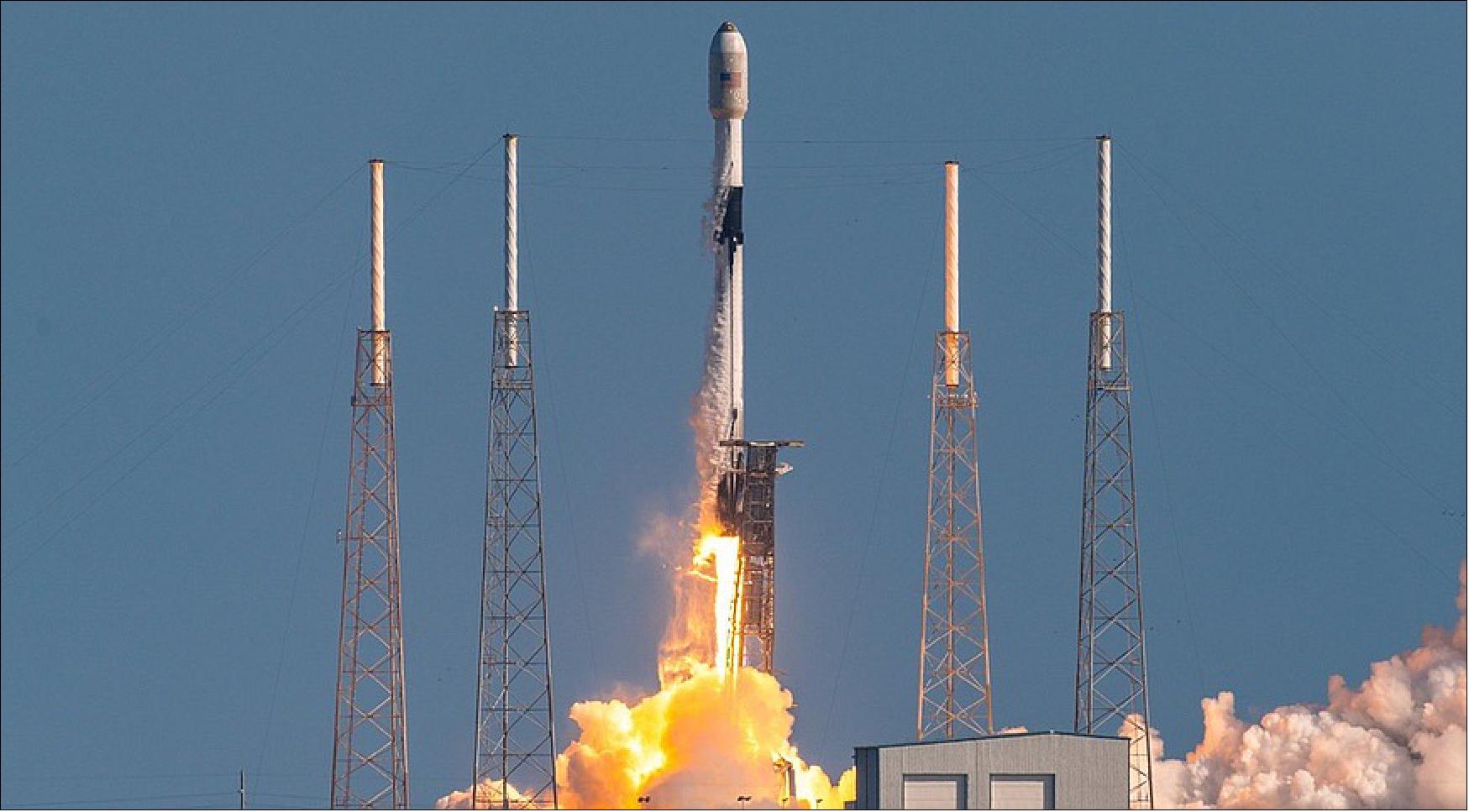
Figure 5: A SpaceX Falcon 9 lifts off February 21, 2022 carrying 46 Starlink satellites (image credit: Space Launch Delta 45)
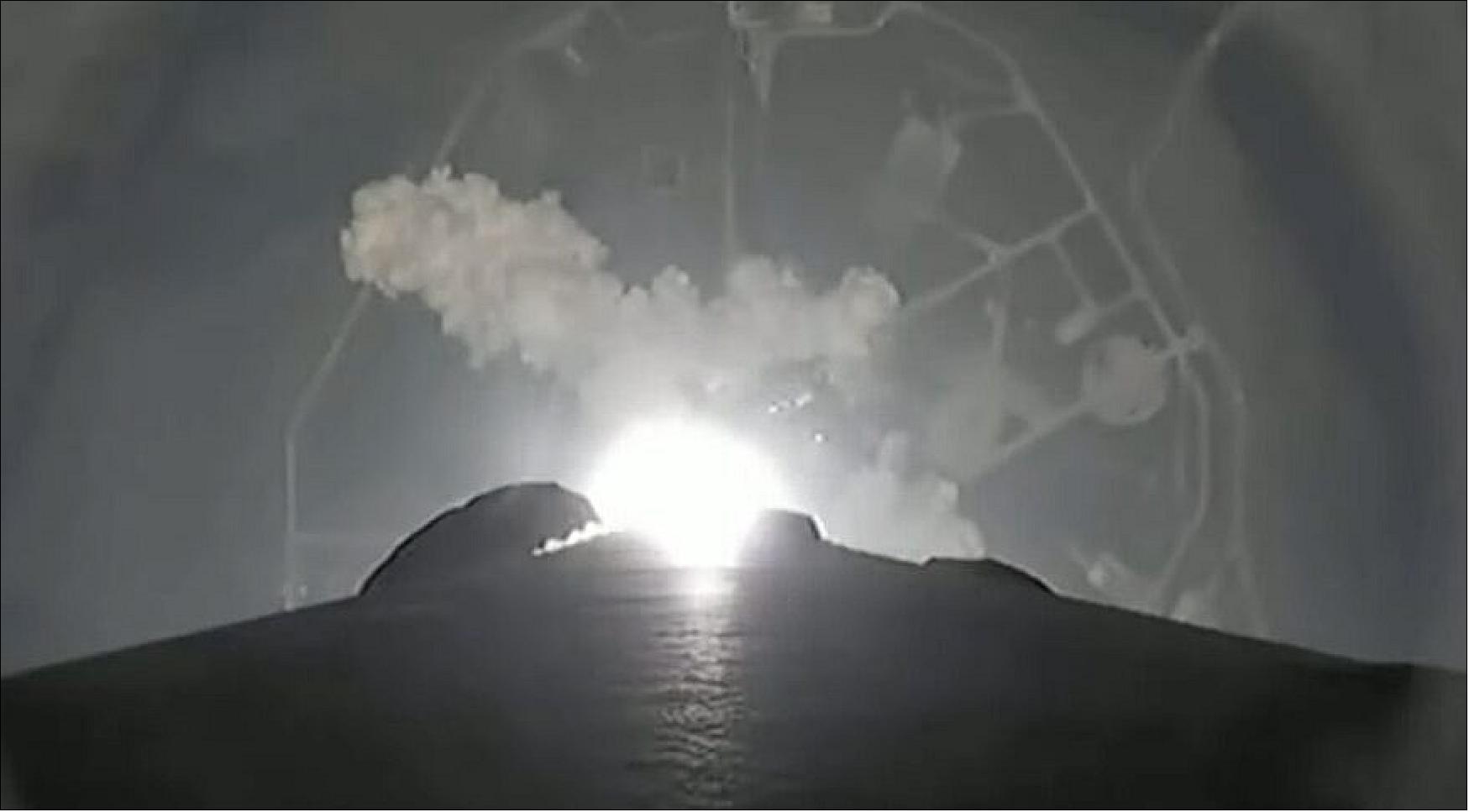
Figure 6: An ascending Falcon 9 rocket illuminates Kennedy Space Center’s Launch Complex 39A during an evening launch January 18, 2022. (Image credit: SpaceX webcast)
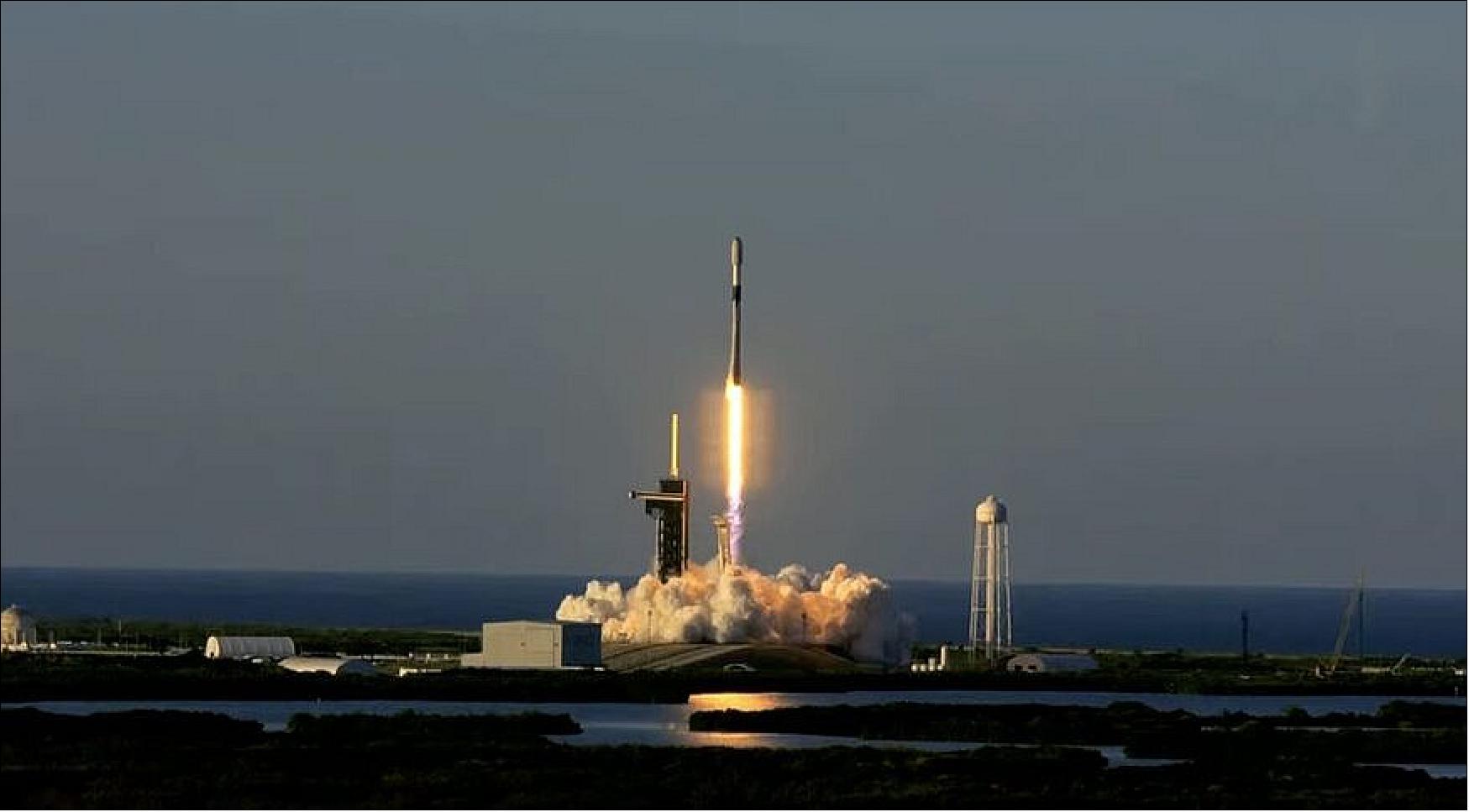
Figure 7: A SpaceX Falcon 9 lifts off January 6, 2022 carrying 49 Starlink satellites (image credit: SpaceX webcast)
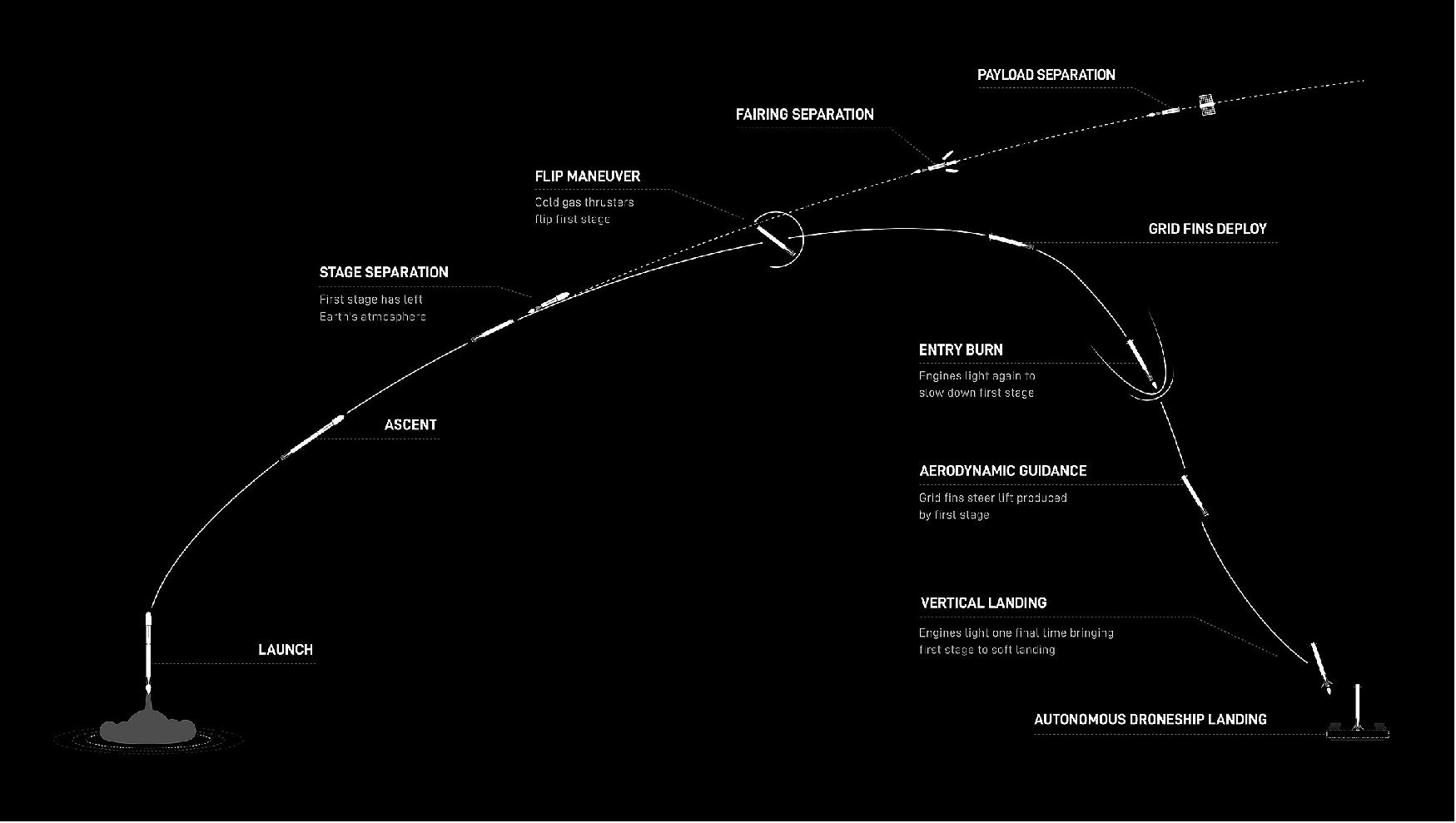
Figure 8: On Thursday, December 2, 2022 at 23:12 UTC, Falcon 9 launched 48 Starlink satellites and two BlackSky spacecraft to orbit from Space Launch Complex 40 (SLC-40) at Cape Canaveral Space Force Station in Florida. This was the ninth launch and landing of this Falcon 9 first stage booster, which previously launched GPS III-3, Turksat 5A, Transporter-2, and now six Starlink missions (image credit: SpaceX)
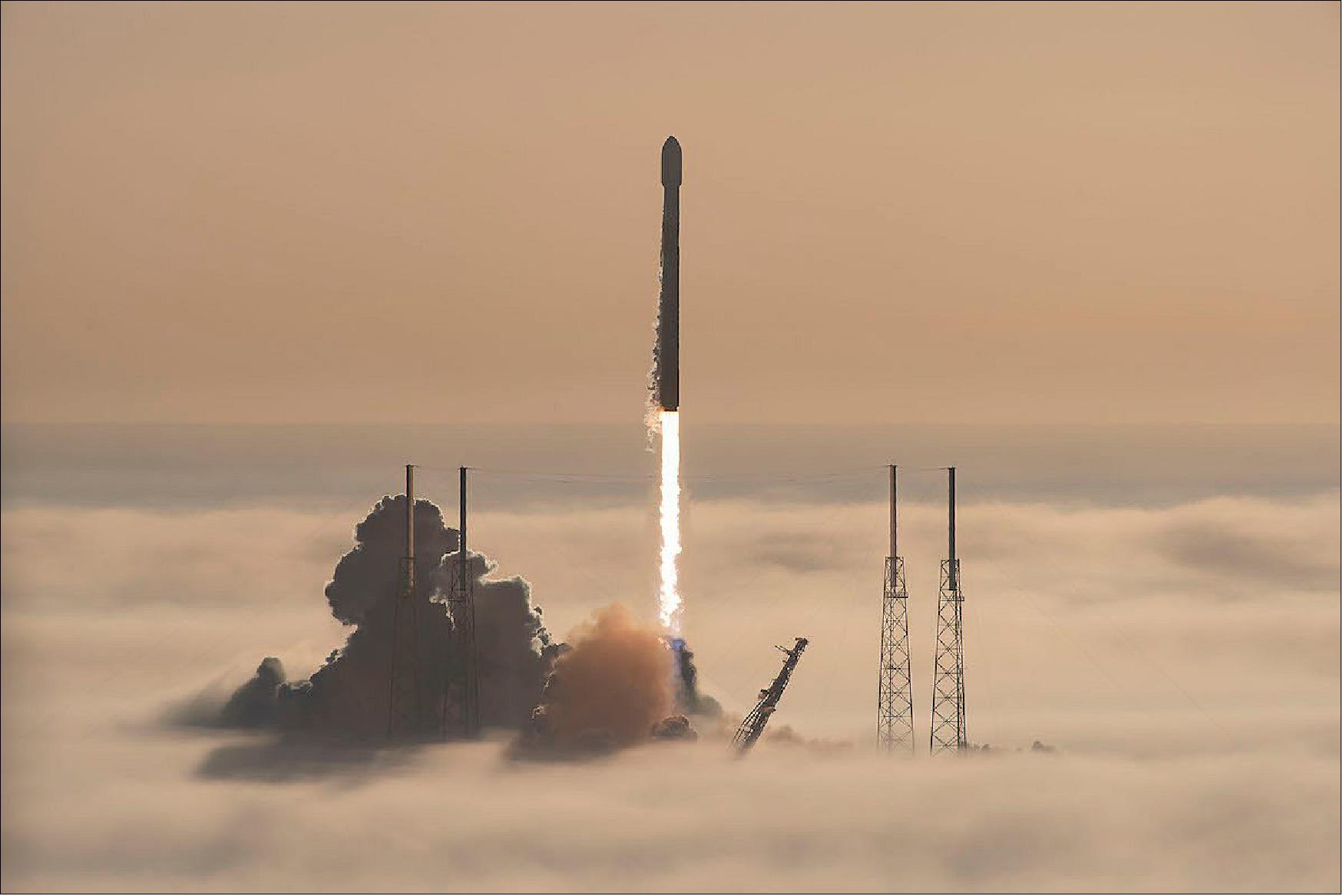
Figure 9: A Falcon 9 rocket climbs above a fog layer at Cape Canaveral Space Force Station with 53 Starlink internet satellites (image credit: SpaceX)
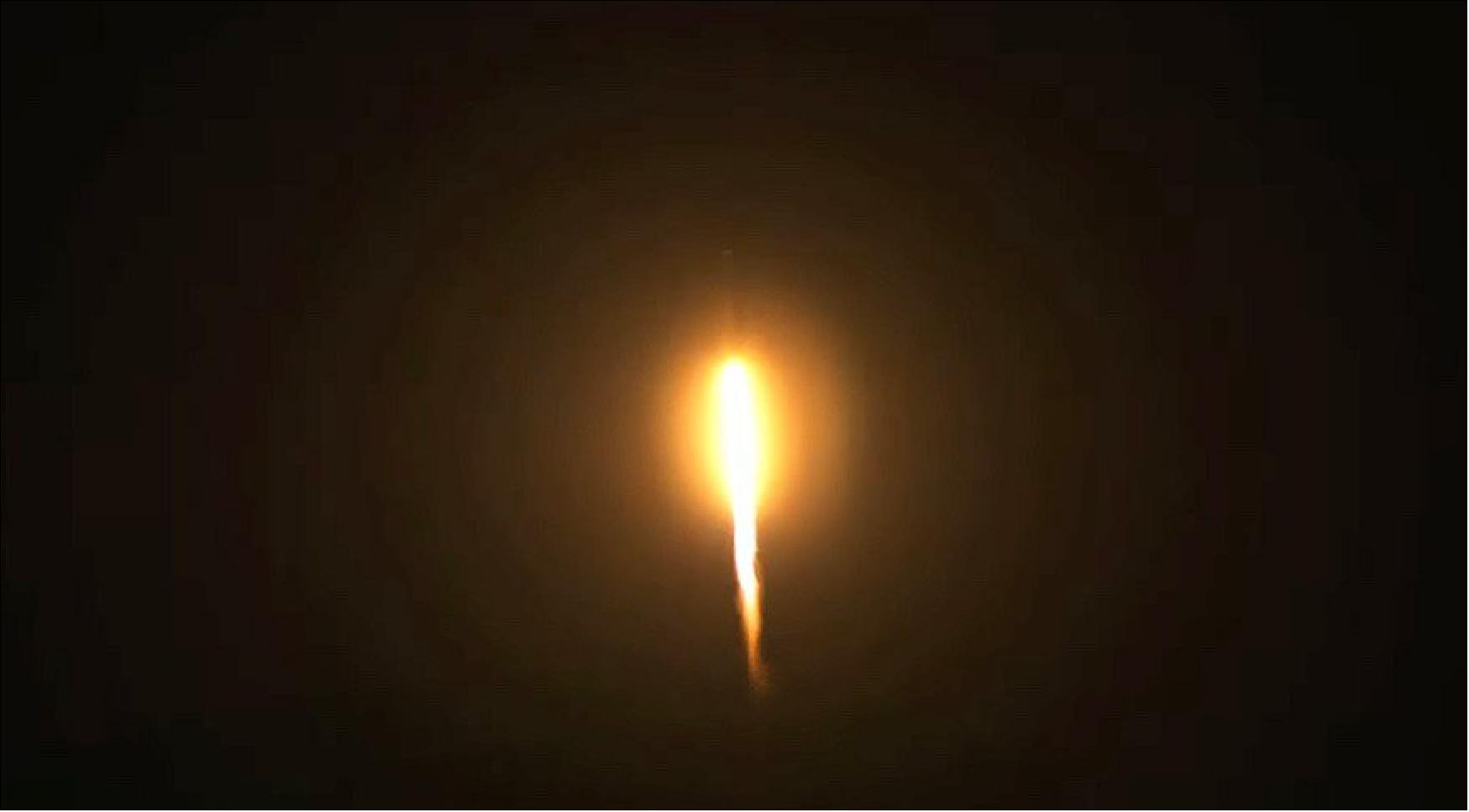
Figure 10: A SpaceX Falcon 9 ascends after liftoff from Vandenberg SFB, California, carrying a payload of Starlink satellites (image credit: SpaceX webcast)
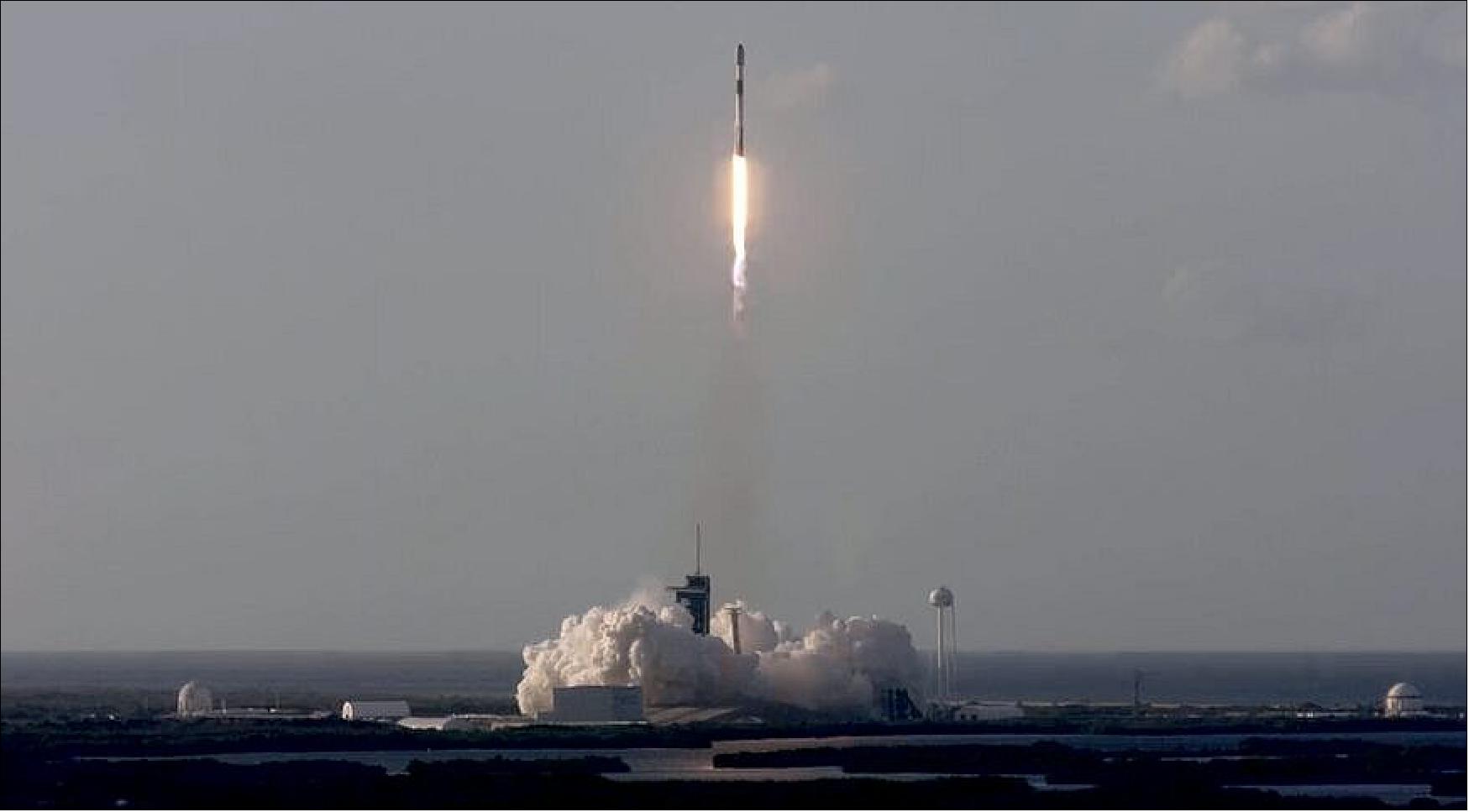
Figure 11: A Falcon 9 lifts off from the Kennedy Space Center May 15, 2021 carrying 52 Starlink satellites and two rideshare payloads (image credit: SpaceX webcast)
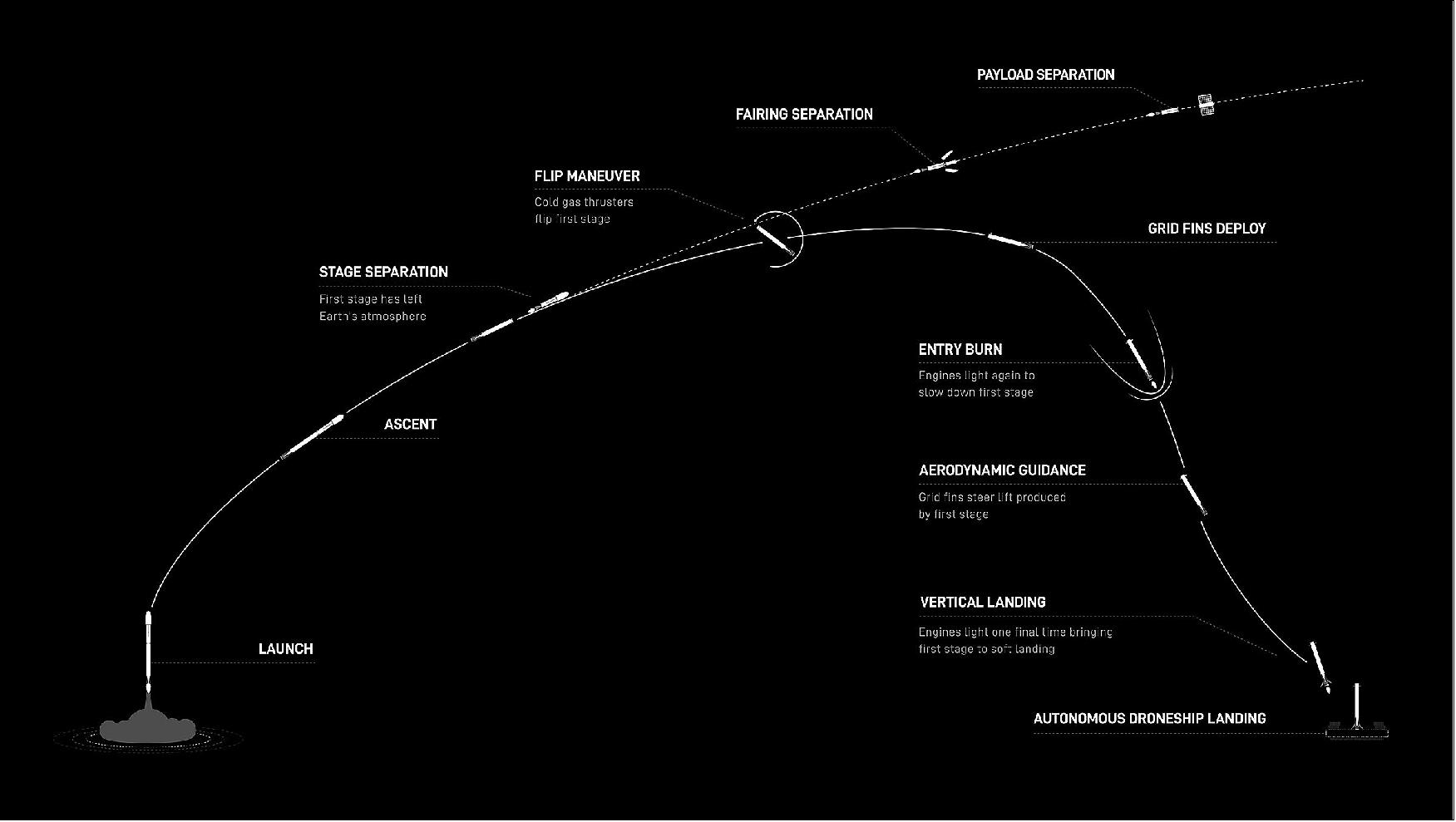
Figure 12: Schematic view of the Launch, first-stage Landing, and Deployment of the SpaceX mission phases (image credit: SpaceX)
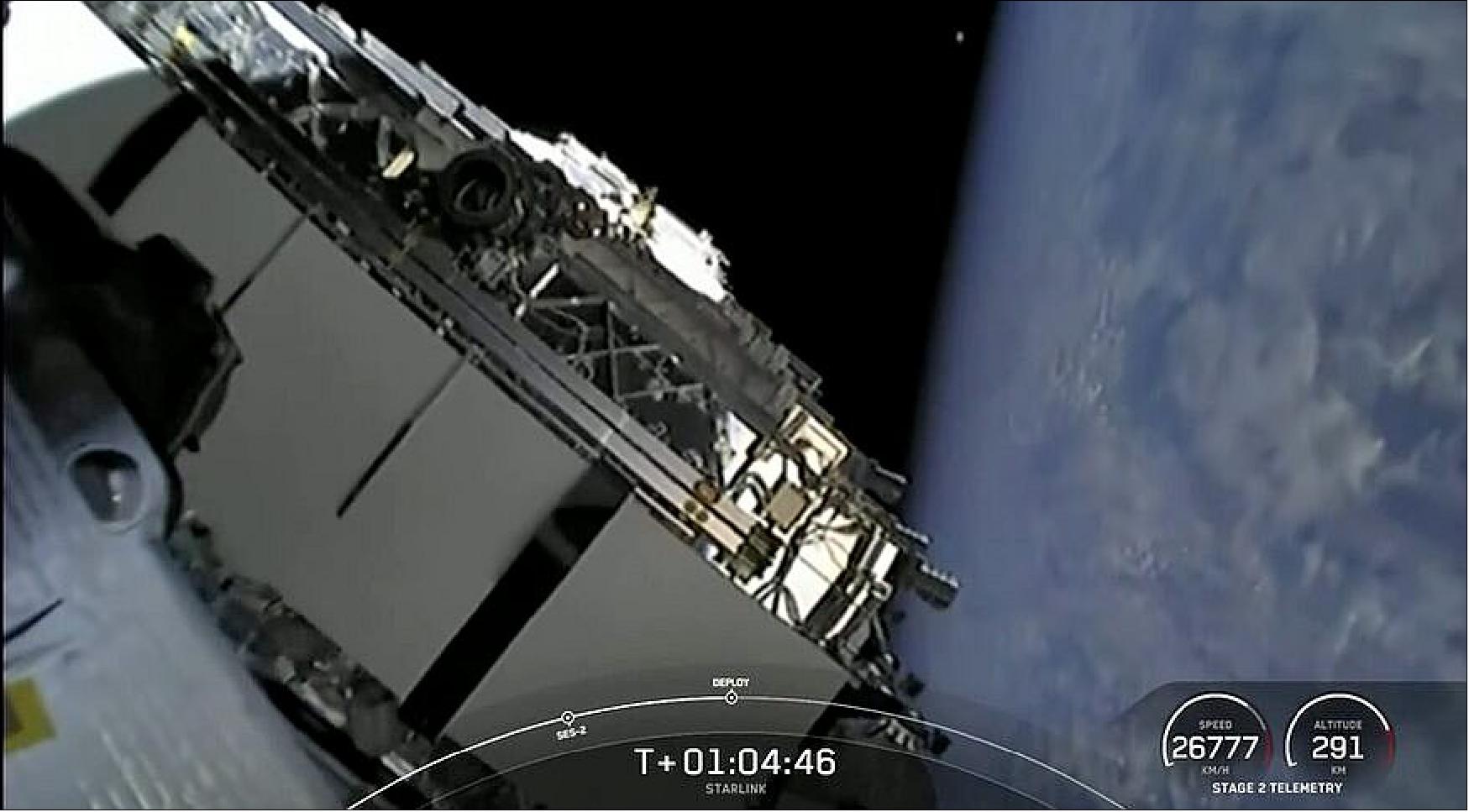
Figure 13: A set of Starlink satellites separates from the Falcon 9’s upper stage after its April 28, 2021 launch (image credit: SpaceX webcast)
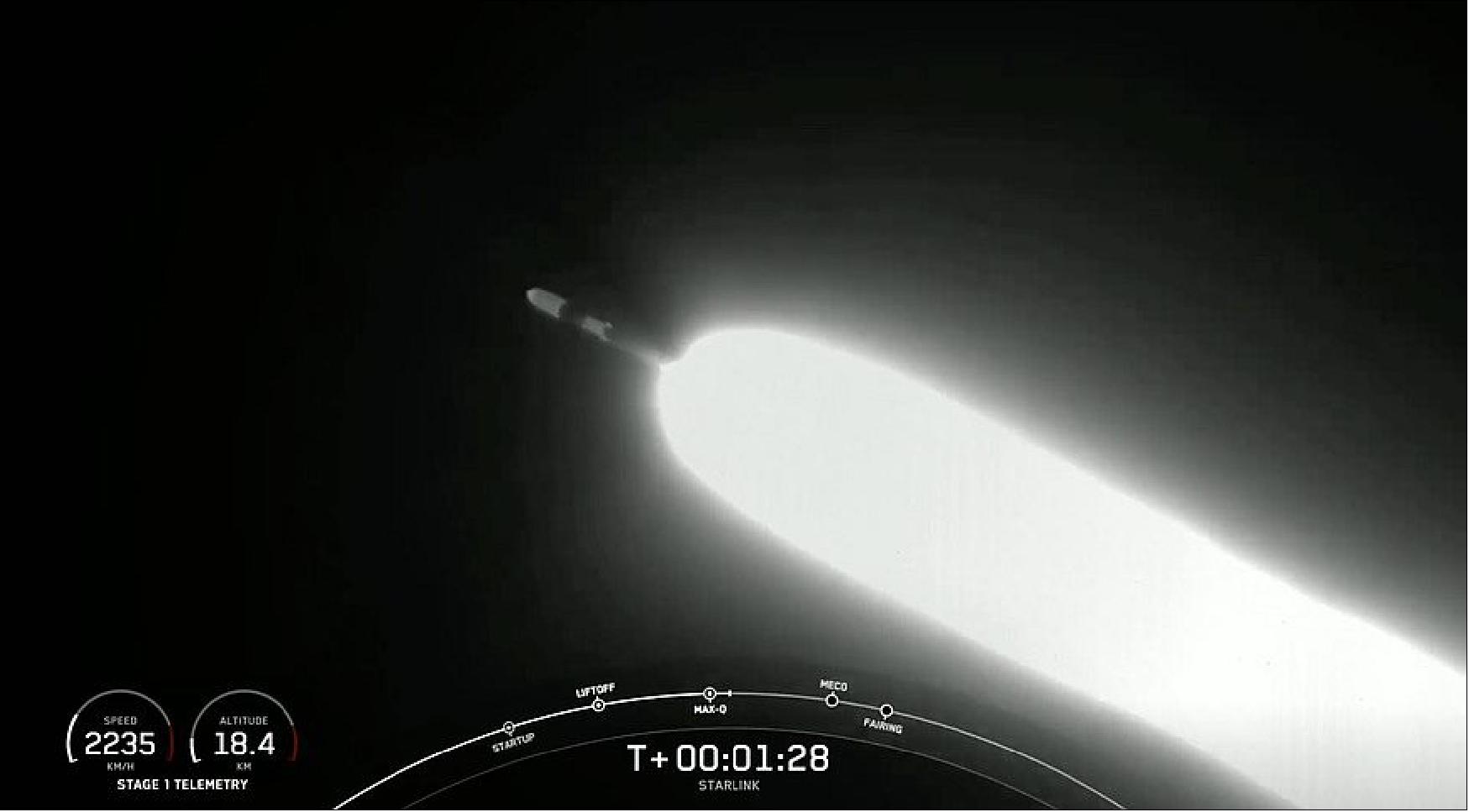
Figure 14: A Falcon 9 launch March 11, 2021 brought the total number of Starlink satellites in orbit to 1,200 (image credit: SpaceX webcast)
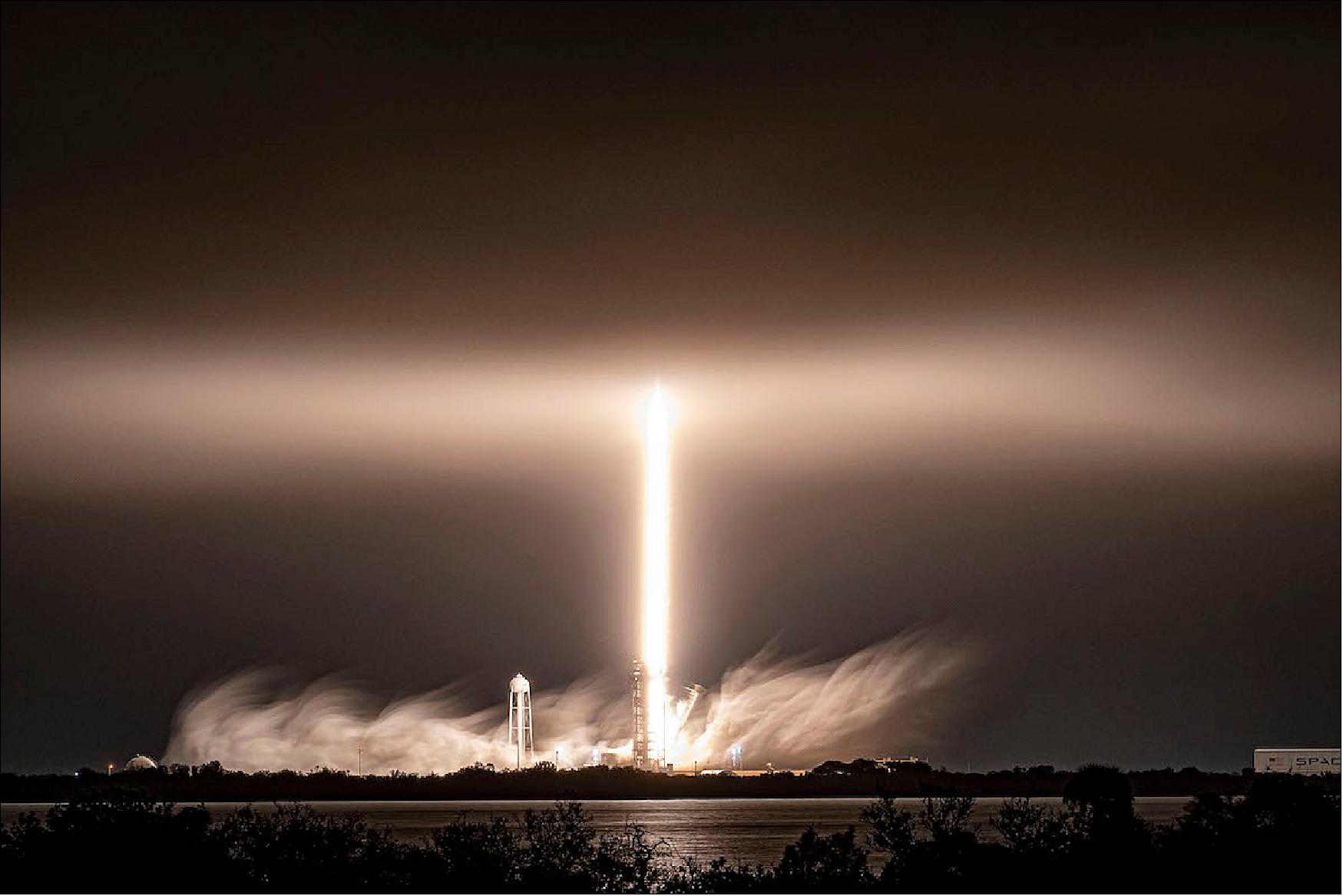
Figure 15: A Falcon 9 rocket disappears in a blanket of clouds shortly after launching from NASA’s Kennedy Space Center. (image credit: SpaceX)
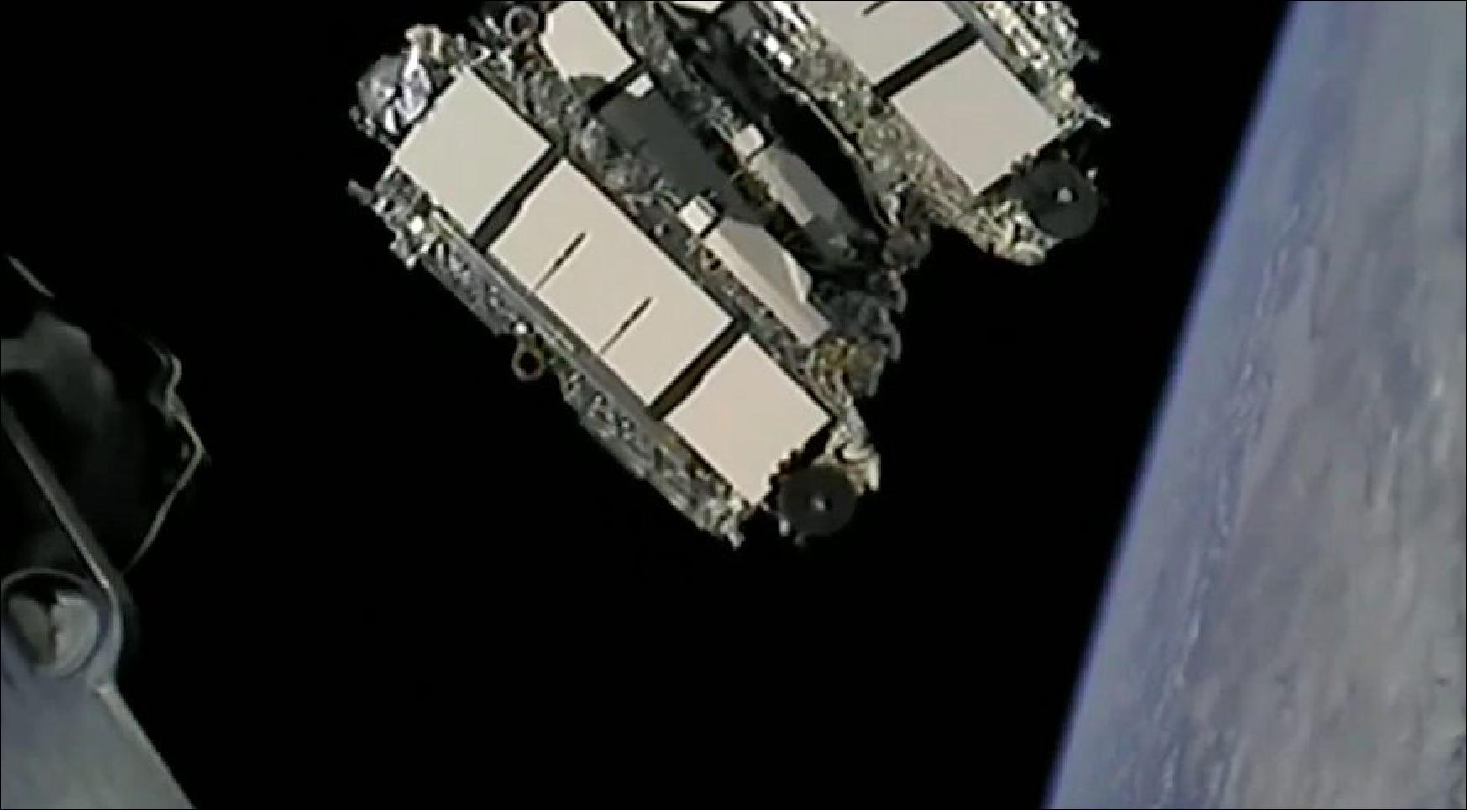
Figure 16: A set of 60 Starlink satellites deploys from the upper stage of its Falcon 9 rocket to conclude a February 15, 2021 launch (image credit: SpaceX webcast)
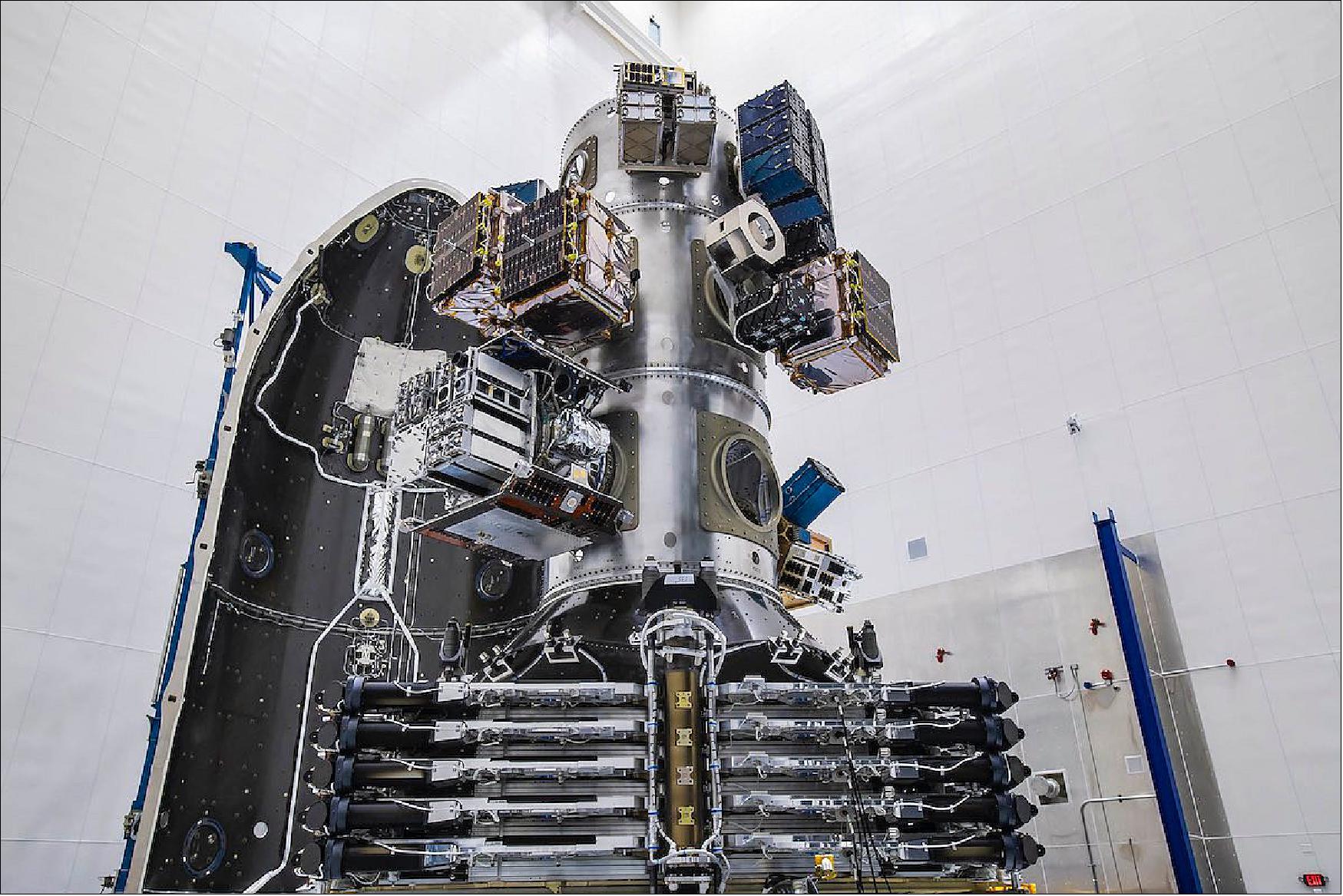
Figure 17: This photo shows the stack of 143 small satellites aboard SpaceX’s Transporter-1 mission before encapsulation inside the Falcon 9 rocket’s payload shroud (image credit: SpaceX)
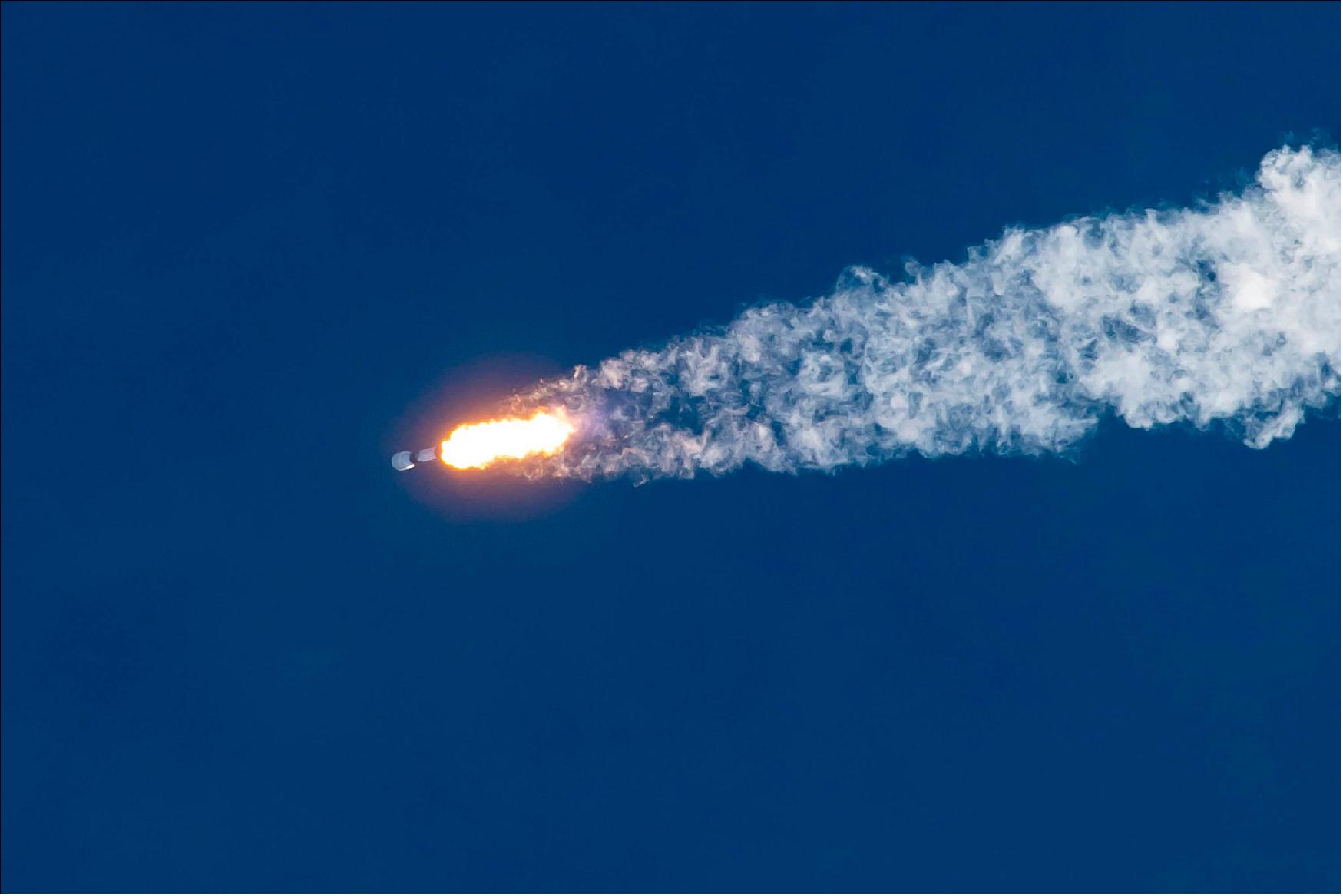
Figure 18: A Falcon 9 rocket, flying with a first stage flown on seven previous missions, climbs through the atmosphere Wednesday January 20, 2021 over Florida’s Space Coast (image credit: SpaceX)
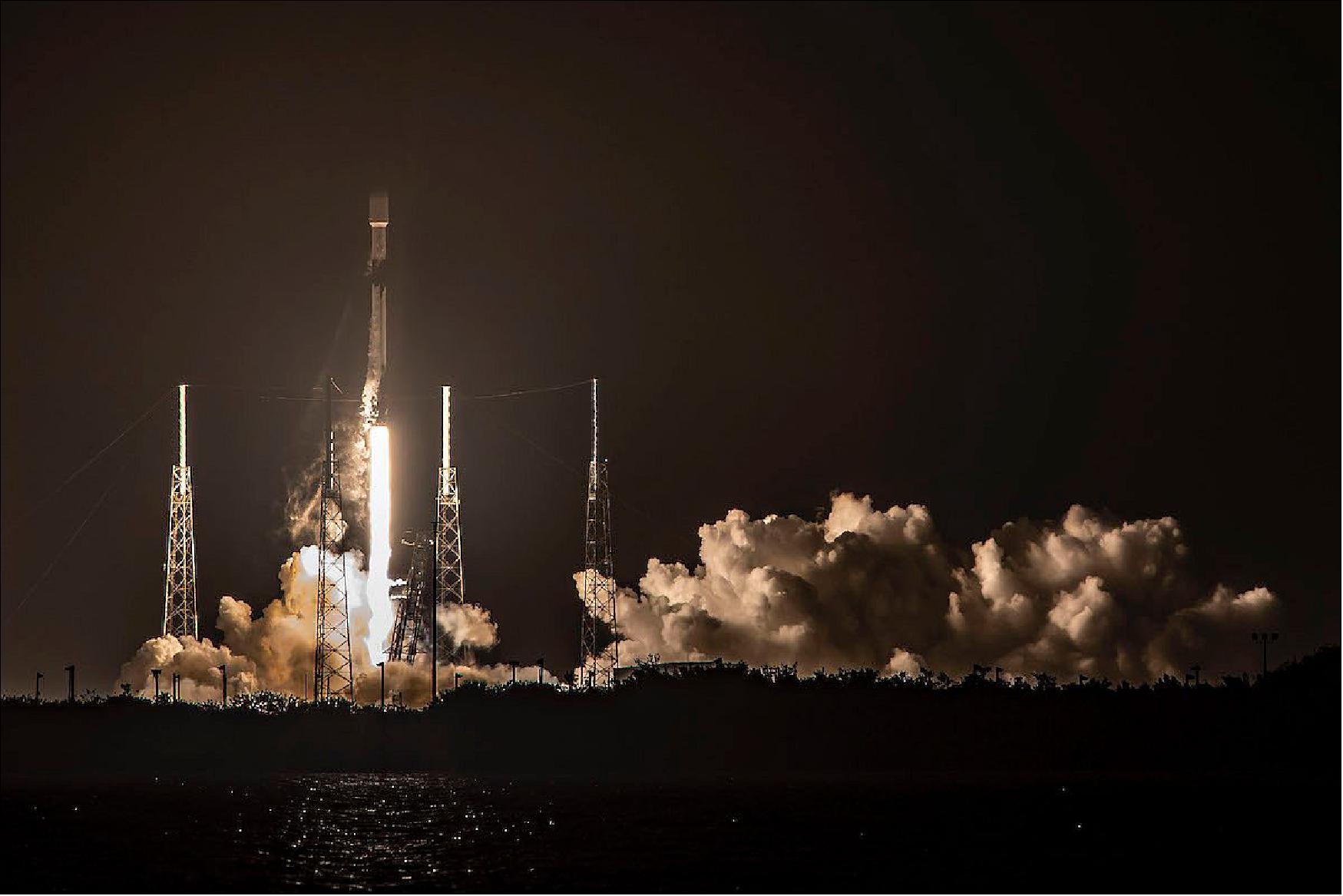
Figure 19: A Falcon 9 rocket climbs away from pad 40 at Cape Canaveral Air Force Station on 24 November 2020. (image credit: SpaceX)
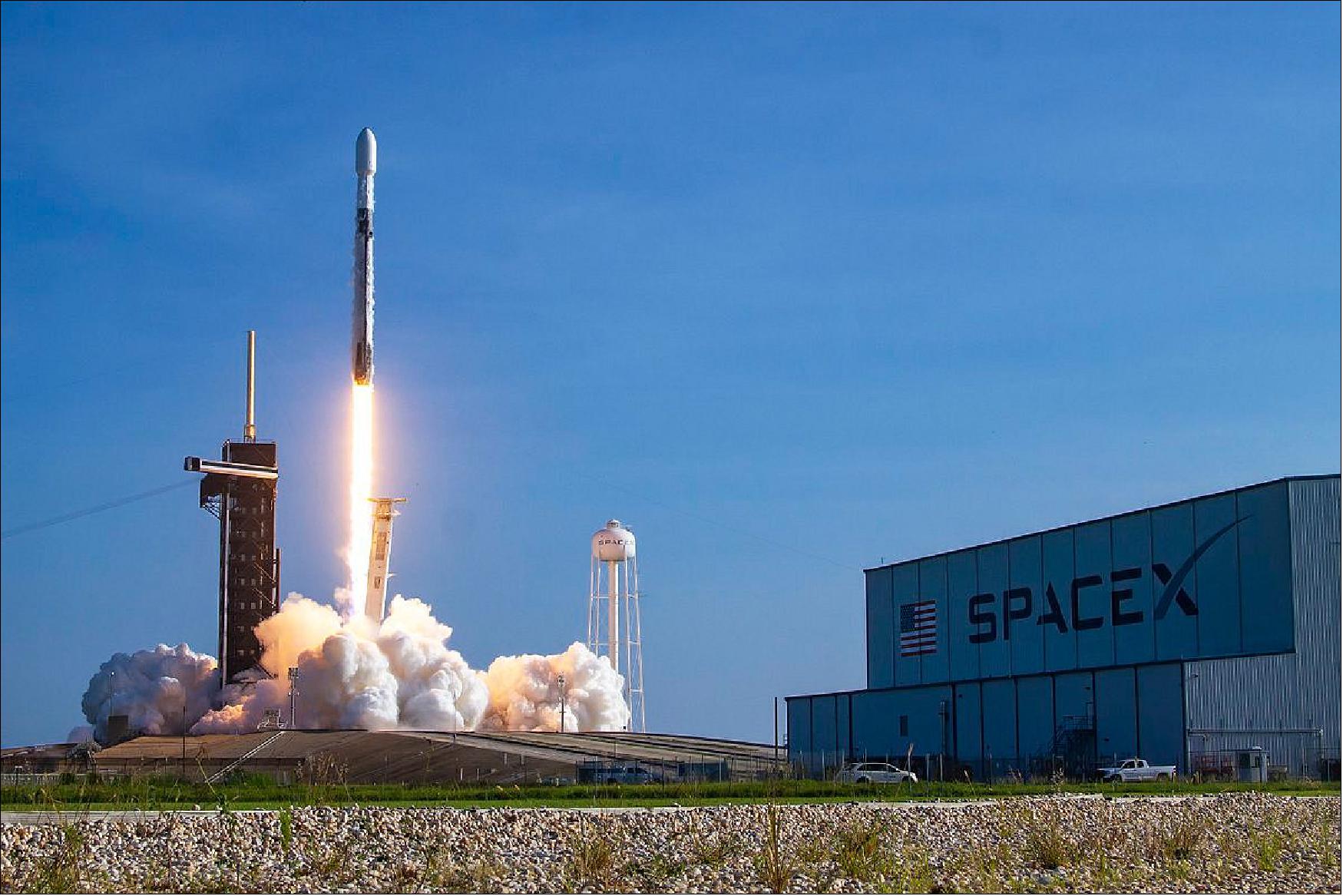
Figure 20: A Falcon 9 rocket lifts off from pad 39A of Cape Canaveral, Florida, with 60 more Starlink satellites (image credit: SpaceX)
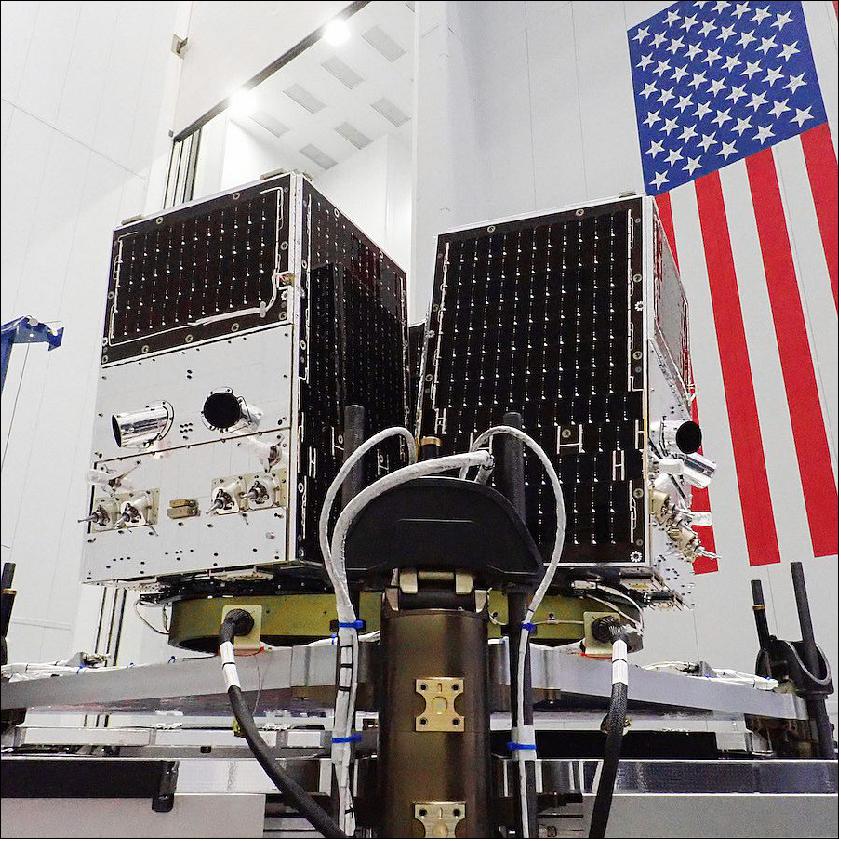
Figure 21: Three Planet SkySat Earth-imaging satellites (SkySat-19, -20 and -21) accompanied 58 SpaceX Starlink satellites on a Falcon-9 rocket. (image credit: SpaceX)
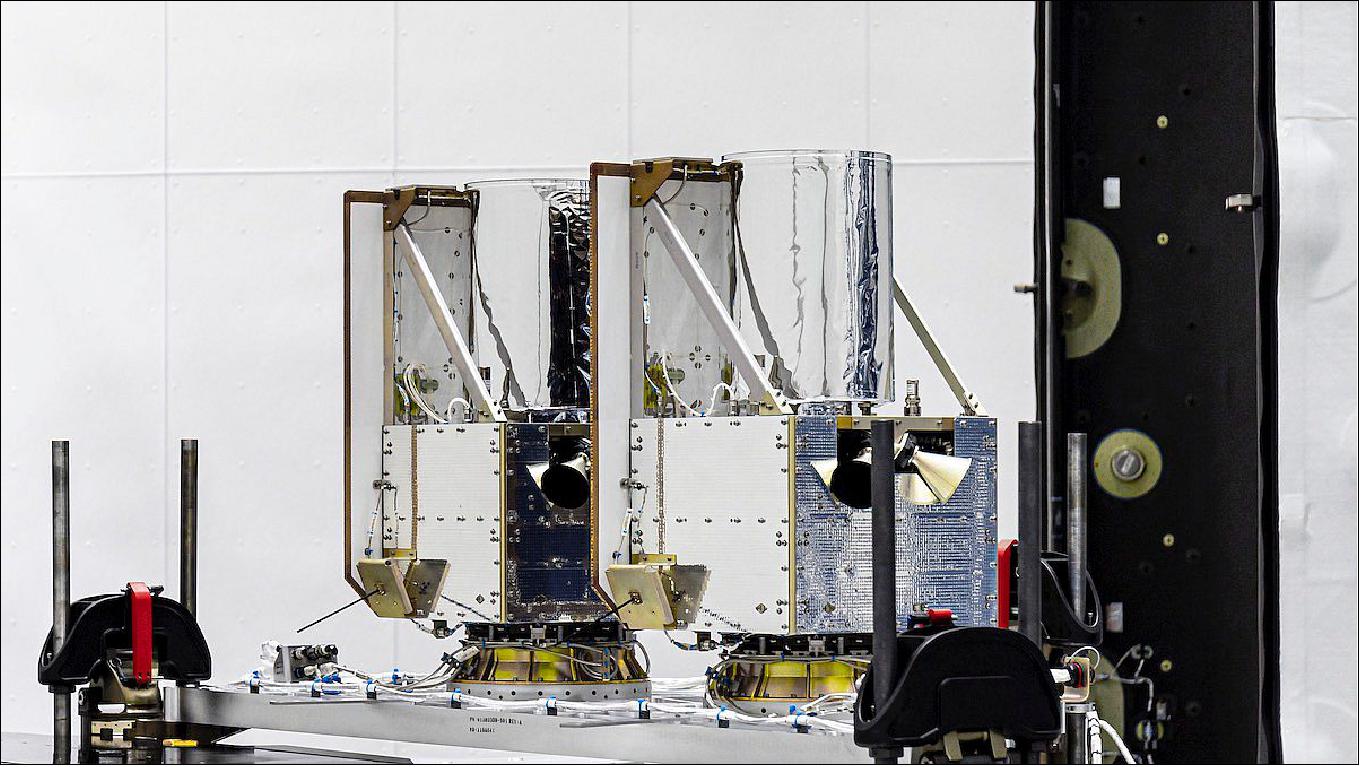
Figure 22: BlackSky’s fifth and sixth operational Earth-imaging satellites are pictured inside a SpaceX processing facility at Cape Canaveral (image credit: SpaceX)
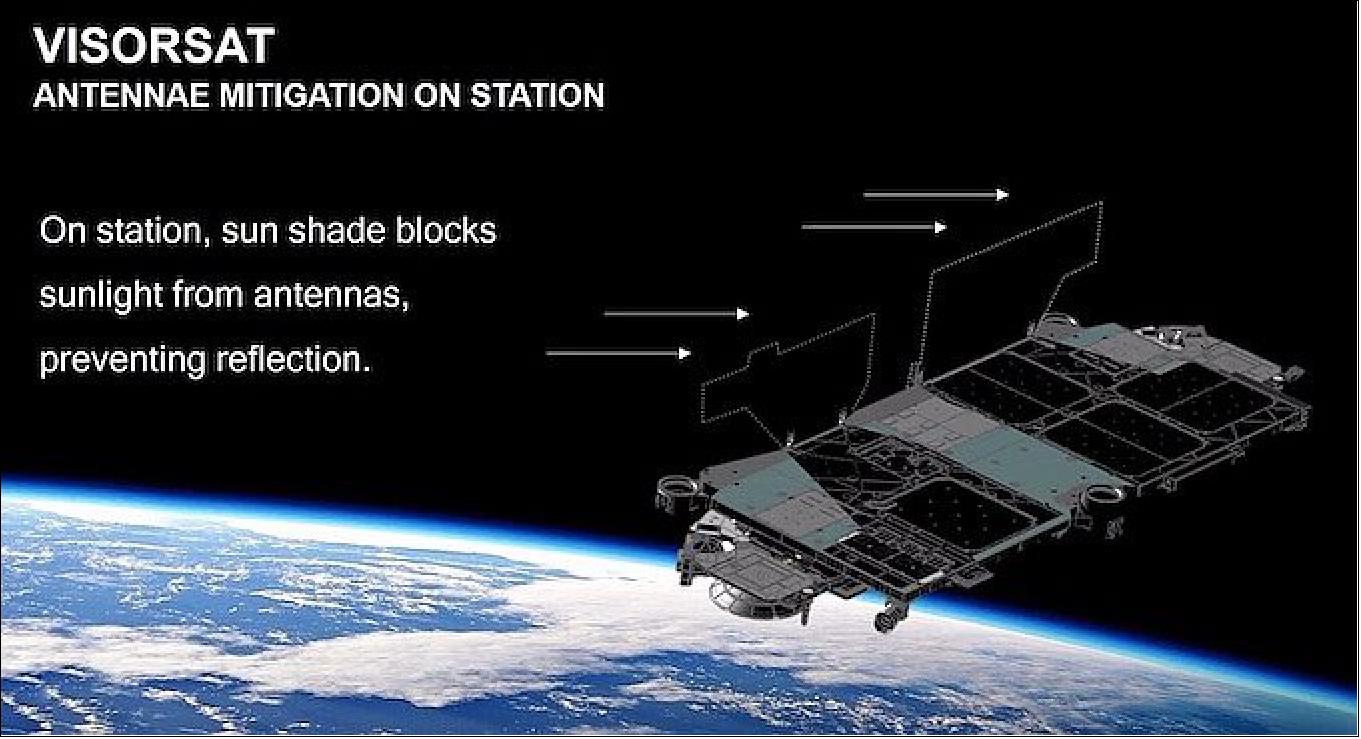
Figure 23: SpaceX plans to debut a new sunshade structure on its future Starlink satellites (image credit: SpaceX)
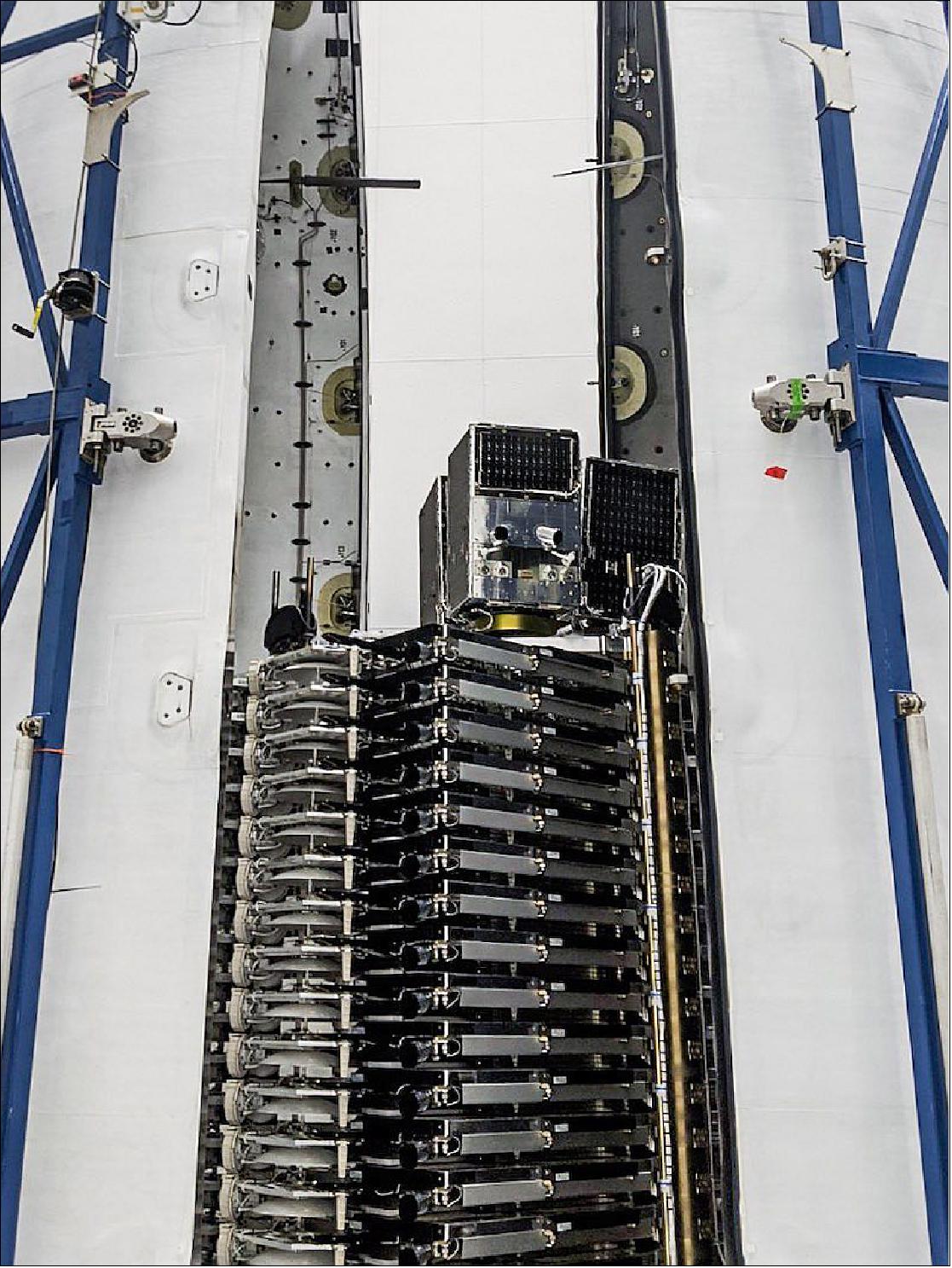
Figure 24: Three of Planet’s SkySat Earth-imaging microsatellites are mounted on top of 58 SpaceX Starlink Internet satellites for launch on 13 June 2020. (image credit: Planet / SpaceX)
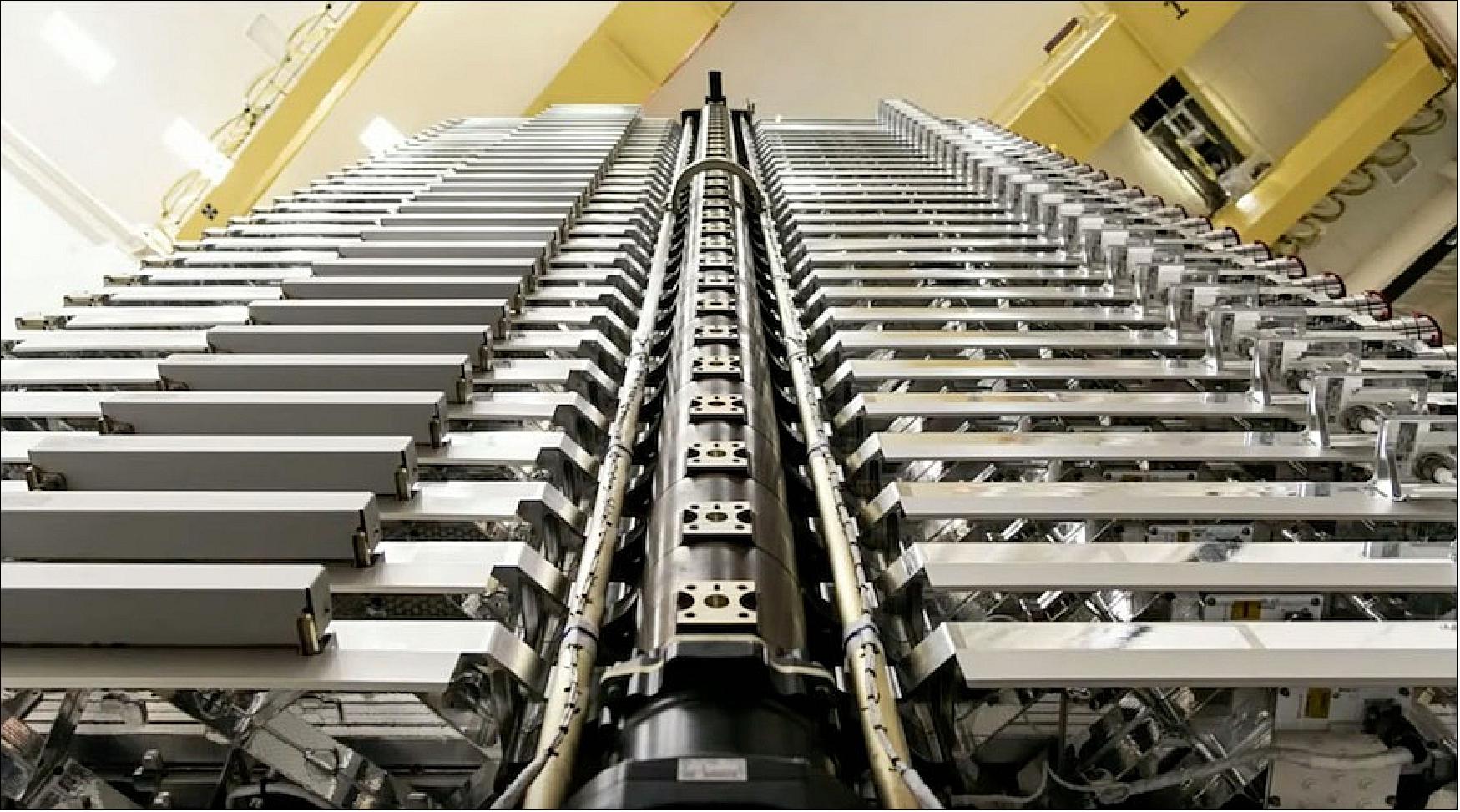
Figure 25: A view of the 60 Starlink satellites stacked before launch (image credit: SpaceX)
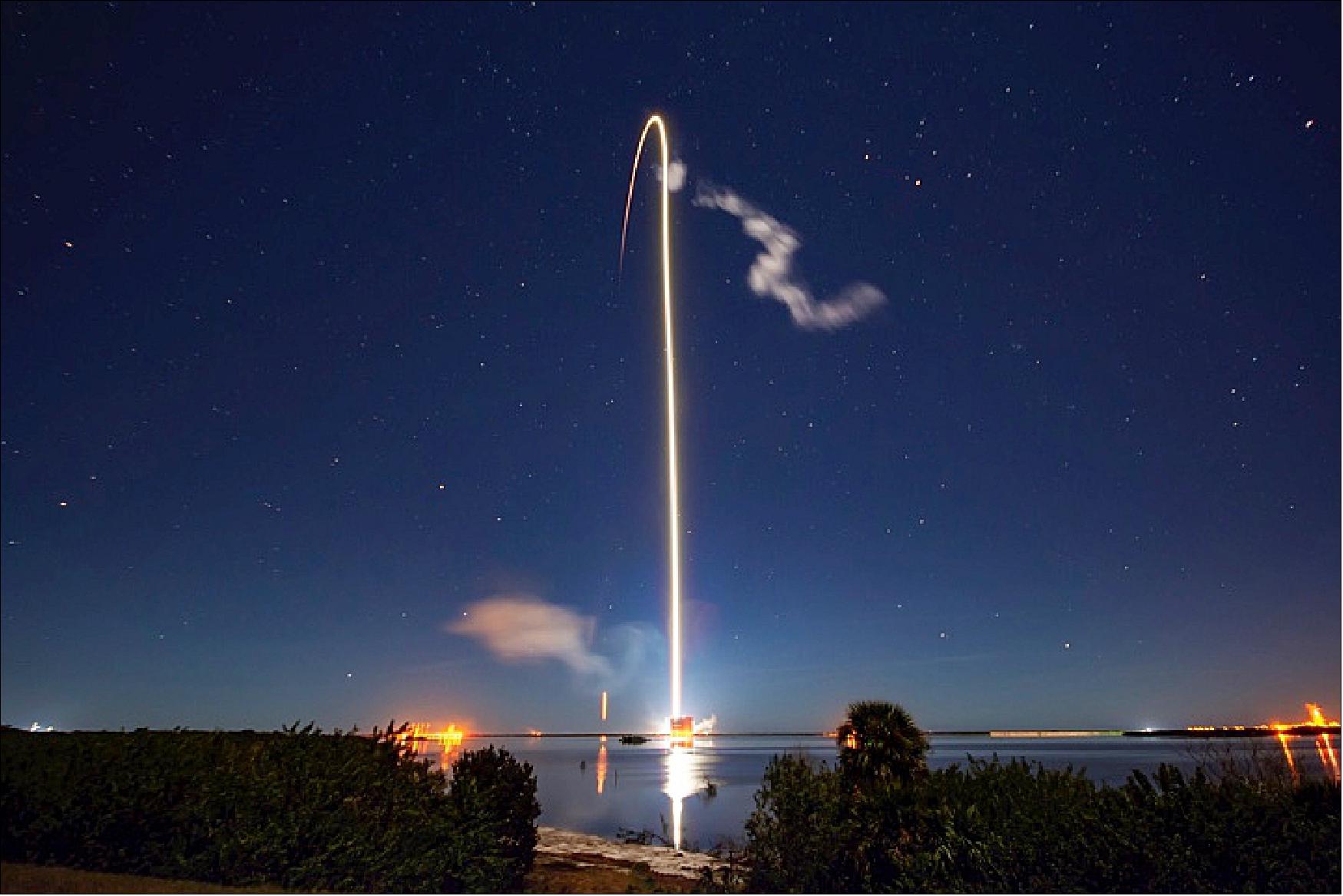
Figure 26: SpaceX’s Falcon 9 rocket streaks downrange to the northeast from Cape Canaveral with 60 Starlink satellites for the company’s planned global Internet network (image credit: SpaceX)
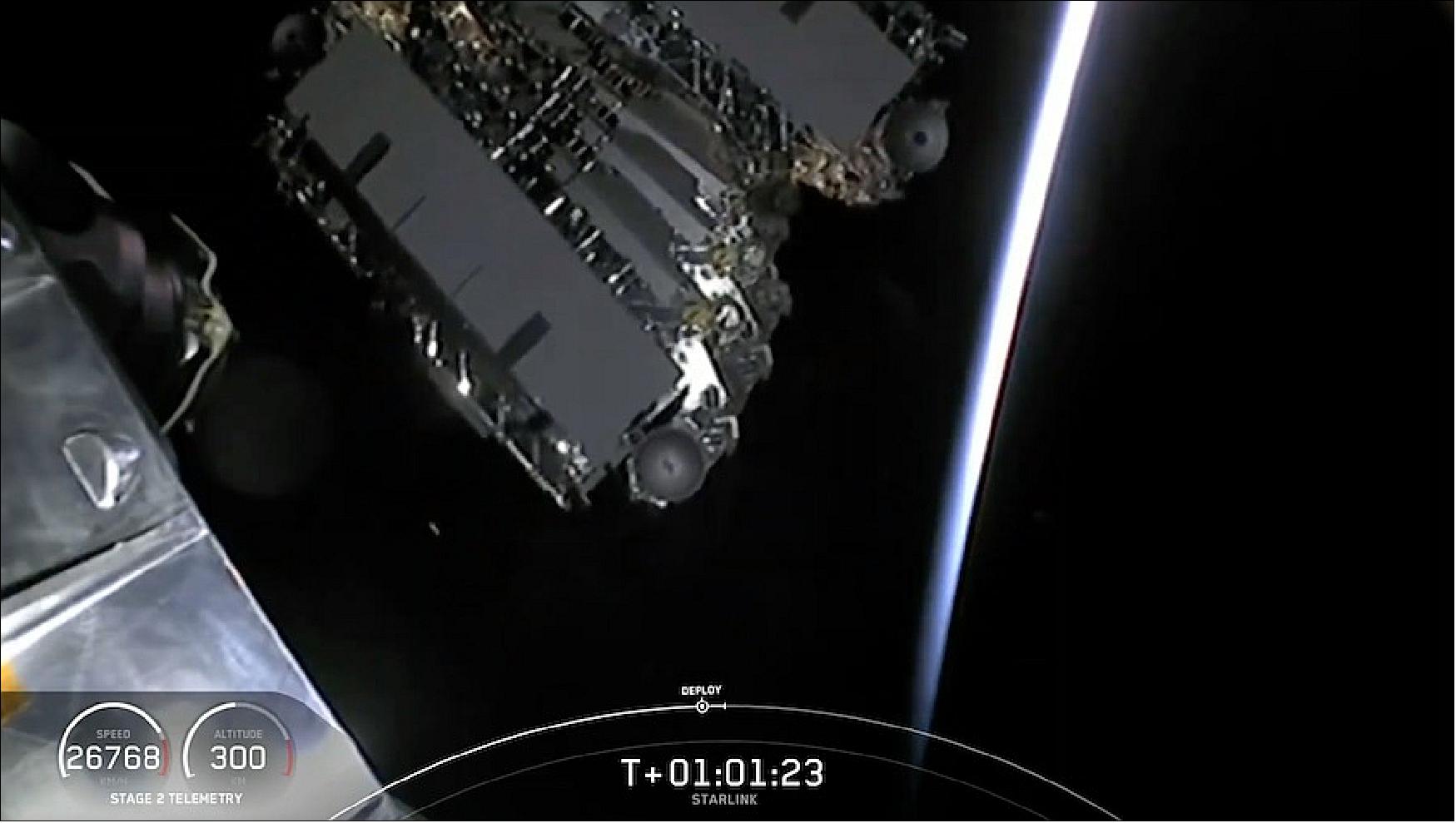
Figure 27: Sixty Starlink satellites separated from the Falcon 9 rocket about one hour after launch. The spacecraft deployed in one piece, then will disperse over the coming hours and days (image credit: SpaceX)
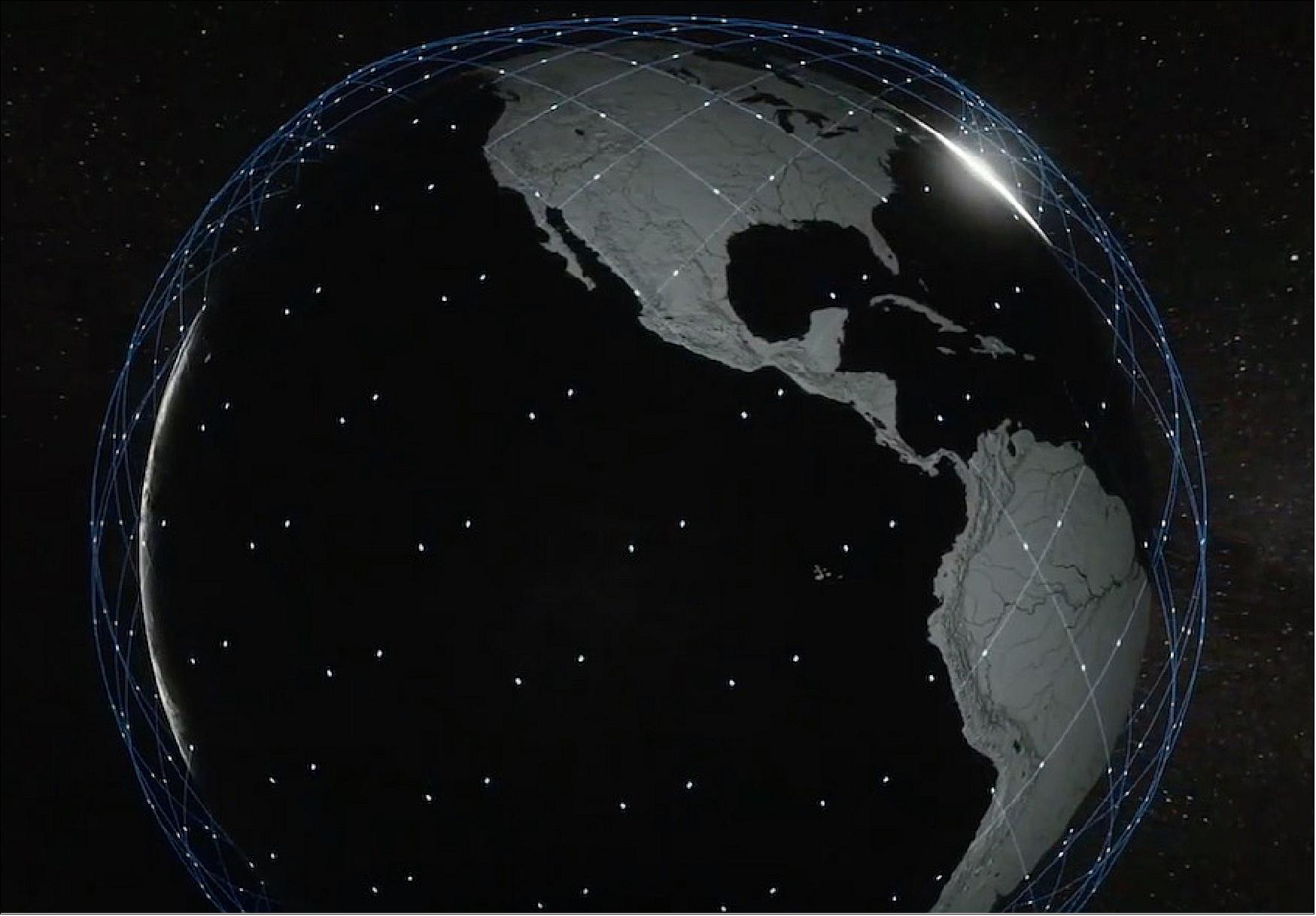
Figure 28: Artist’s illustration of the distribution of satellites in SpaceX’s Starlink network (image credit: SpaceX)
Mission Status
• 2024: About 100 launches took place throughout the year, so far. The launches took place from three different locations; the Space Launch Complex 4E at Vandenberg Space Force Base in California, the Space Launch Complex 40 (SLC-40) in Cape Canaveral Air Force, Florida and the Launch Complex 39A (LC-39A) at NASA’s Kennedy Space Center in Florida. The satellites launched include the following: Starlink v2-Mini G6, G7, G8, G9, G10, G11 series, and Starlink v2-Mini-D2C T1, T2, G8 and G9 series. For further details, please refer to Table 1. 129) 133)
• August 22, 2023: The first launch for the Starlink v2-Mini G7 took place today. Several more satellites were launched throughout the year, from three different locations; the Space Launch Complex 4E at Vandenberg Space Force Base in California, the Space Launch Complex 40 (SLC-40) in Cape Canaveral Air Force, Florida and the Launch Complex 39A (LC-39A) at NASA’s Kennedy Space Center in Florida.
• July 16, 2023: The last satellites for the Starlink v1.5 G5 series were launched today. Several more launches took place throughout the year, from three different locations; the Space Launch Complex 4E at Vandenberg Space Force Base in California, the Space Launch Complex 40 (SLC-40) in Cape Canaveral Air Force, Florida and the Launch Complex 39A (LC-39A) at NASA’s Kennedy Space Center in Florida.
• May 31, 2023: SpaceX launched the last satellites for the Starlink v1.5 R1 and G2 series. Several more launches took place throughout the year, from three different locations; the Space Launch Complex 4E at Vandenberg Space Force Base in California, the Space Launch Complex 40 (SLC-40) in Cape Canaveral Air Force, Florida and the Launch Complex 39A (LC-39A) at NASA’s Kennedy Space Center in Florida.
• April 27, 2023: The last satellites for the Starlink v1.5 G3 series were launched today. Several more launches took place throughout the year, from three different locations; the Space Launch Complex 4E at Vandenberg Space Force Base in California, the Space Launch Complex 40 (SLC-40) in Cape Canaveral Air Force, Florida and the Launch Complex 39A (LC-39A) at NASA’s Kennedy Space Center in Florida.
• February 27, 2023: The first satellites for the Starlink v2-Mini G6 were launched today. Several more launches took place throughout the year, from three different locations; the Space Launch Complex 4E at Vandenberg Space Force Base in California, the Space Launch Complex 40 (SLC-40) in Cape Canaveral Air Force, Florida and the Launch Complex 39A (LC-39A) at NASA’s Kennedy Space Center in Florida.
• December 28, 2022: The first launch for the Starlink v1.5 G5 series took place today. Several more launches took place throughout the year, from three different locations; the Space Launch Complex 4E at Vandenberg Space Force Base in California, the Space Launch Complex 40 (SLC-40) in Cape Canaveral Air Force, Florida and the Launch Complex 39A (LC-39A) at NASA’s Kennedy Space Center in Florida.
• December 17, 2022: The last launch for the Starlink v1.5 G4 series took place today. Several more launches took place throughout the year, from three different locations; the Space Launch Complex 4E at Vandenberg Space Force Base in California, the Space Launch Complex 40 (SLC-40) in Cape Canaveral Air Force, Florida and the Launch Complex 39A (LC-39A) at NASA’s Kennedy Space Center in Florida.
• July 27, 2022: SpaceX has applied for more spectrum to upgrade Starlink satellite broadband services for mobile users. 4)
The company asked the U.S. Federal Communications Commission July 25 for permission to use the 2 GHz spectrum band to “augment” its mobile satellite services (MSS). Specific details about the next-generation services Starlink plans to provide were not disclosed.

Figure 29: Starlink launched a maritime-focused service plan a week after getting FCC permission to connect aircraft, ships, and motor vehicles (image credit: Starlink)
• July 11, 2022: SpaceX launched the first satellites for the Starlink v1.5 G3 series. Several more launches took place throughout the year, from three different locations; the Space Launch Complex 4E at Vandenberg Space Force Base in California, the Space Launch Complex 40 (SLC-40) in Cape Canaveral Air Force, Florida and the Launch Complex 39A (LC-39A) at NASA’s Kennedy Space Center in Florida.
• July 7, 2022: Dish Network and others pushing for permission to use 12 GHz spectrum for 5G said July 7 that SpaceX’s study on how it would severely disrupt its broadband customers is “scientifically and logically flawed.” 5)
The Federal Communications Commission has received nearly 100,000 comments amid Starlink’s call to customers to urge the agency to reject Dish Network’s 12 GHz proposal.
“This tactic, which is commonly used by Elon Musk, is not only disingenuous, but it promulgates an anti-5G narrative that is harmful to American consumers who deserve greater competition, connectivity options and innovation,” the 5G for 12 GHz Coalition said a statement. The 5G for 12 GHz Coalition pointed to earlier interference studies commissioned by RS Access, a spectrum holding company that is one of the group’s members, which estimated a nationwide 5G network would cause interference to less than 1% of terminals used by non-geostationary orbit (NGSO) satellite operators.
• June 21, 2022: SpaceX warned that its Starlink broadband network would become unusable for most Americans if a proposal to use the 12 GHz band for terrestrial 5G is approved. 6)
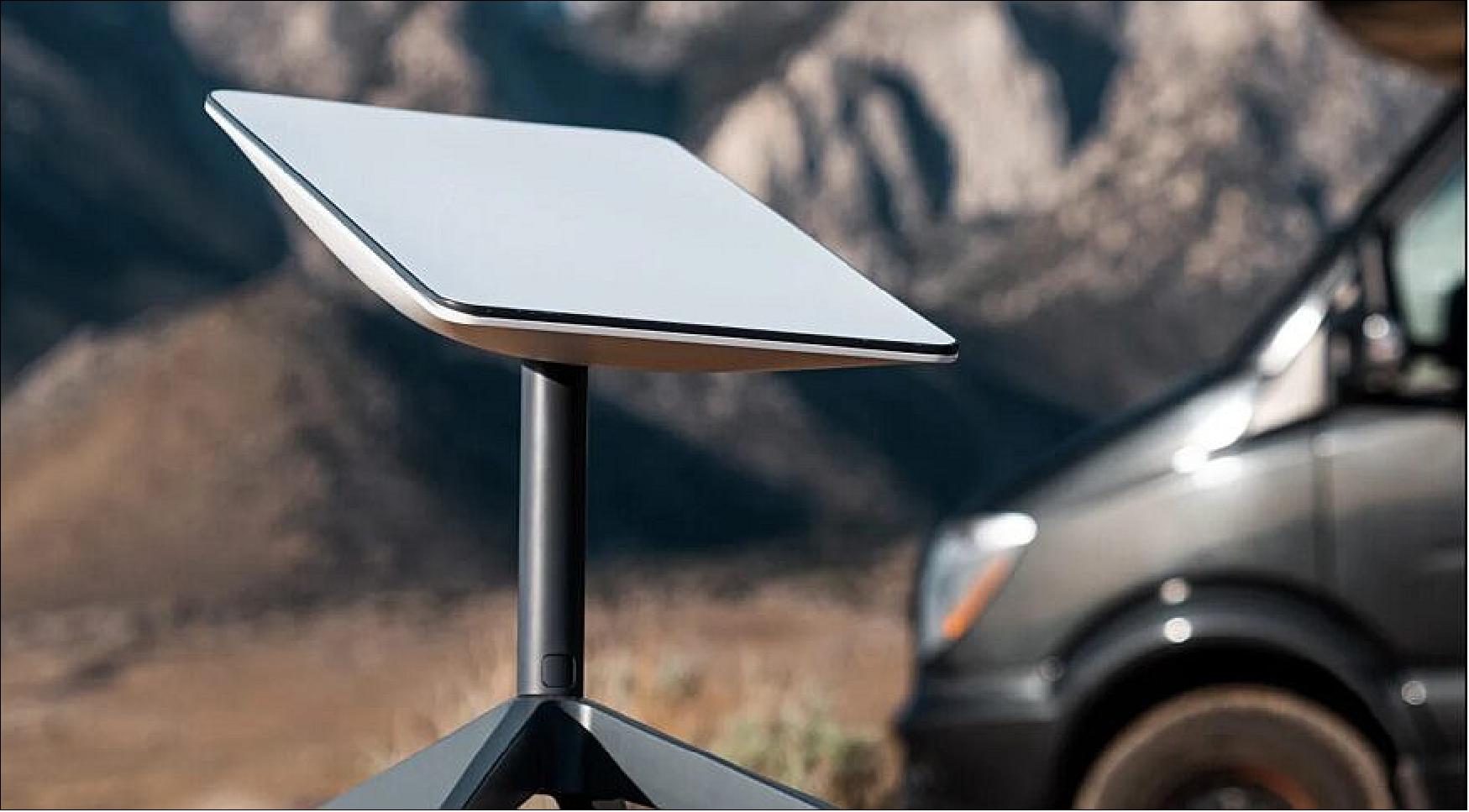
Figure 30: Starlink announced a new service plan in May designed for recreational vehicles (RVs), but only while they're stationary (image credit: Starlink)
In a letter to the Federal Communications Commission, SpaceX said tests it conducted in Las Vegas shows how the proposed network would cause Starlink users to “experience harmful interference” more than 77% of the time. Starlink would be “subjected to total outage of service 74% of the time,” wrote David Goldman, SpaceX senior director of satellite policy.
One study for RS Access estimated a nationwide 5G network would cause interference to less than 1% of terminals used by non-geostationary satellite operators, and also detailed solutions that would mitigate the impact. However, Goldman said this analysis is “untethered from reality,” and fails to address factors including how satellite operators share their spectrum through coordination arrangements.
“In fact, SpaceX recently announced that it reached a coordination agreement with OneWeb, but historic accomplishments like this require the flexibility that comes only with full access to this shared band,” he wrote in the letter to the FCC.
According to SpaceX’s study, harmful interference from a high-power mobile service in the 12 GHz band would extend more than 13 miles from the macro base station in unobstructed conditions.
Most of Starlink’s current availability in the United States is concentrated west of the Mississippi River and is not confined to cities, according to its availability map. The remaining areas are set to become available in 2023 for new users once SpaceX adds more satellites to the Starlink constellation to increase capacity.
• June 17, 2022: As SpaceX gears up for another launch of Starlink satellites, astronomers are concerned the company maybe backsliding in its efforts to reduce the brightness of those satellites. 7)
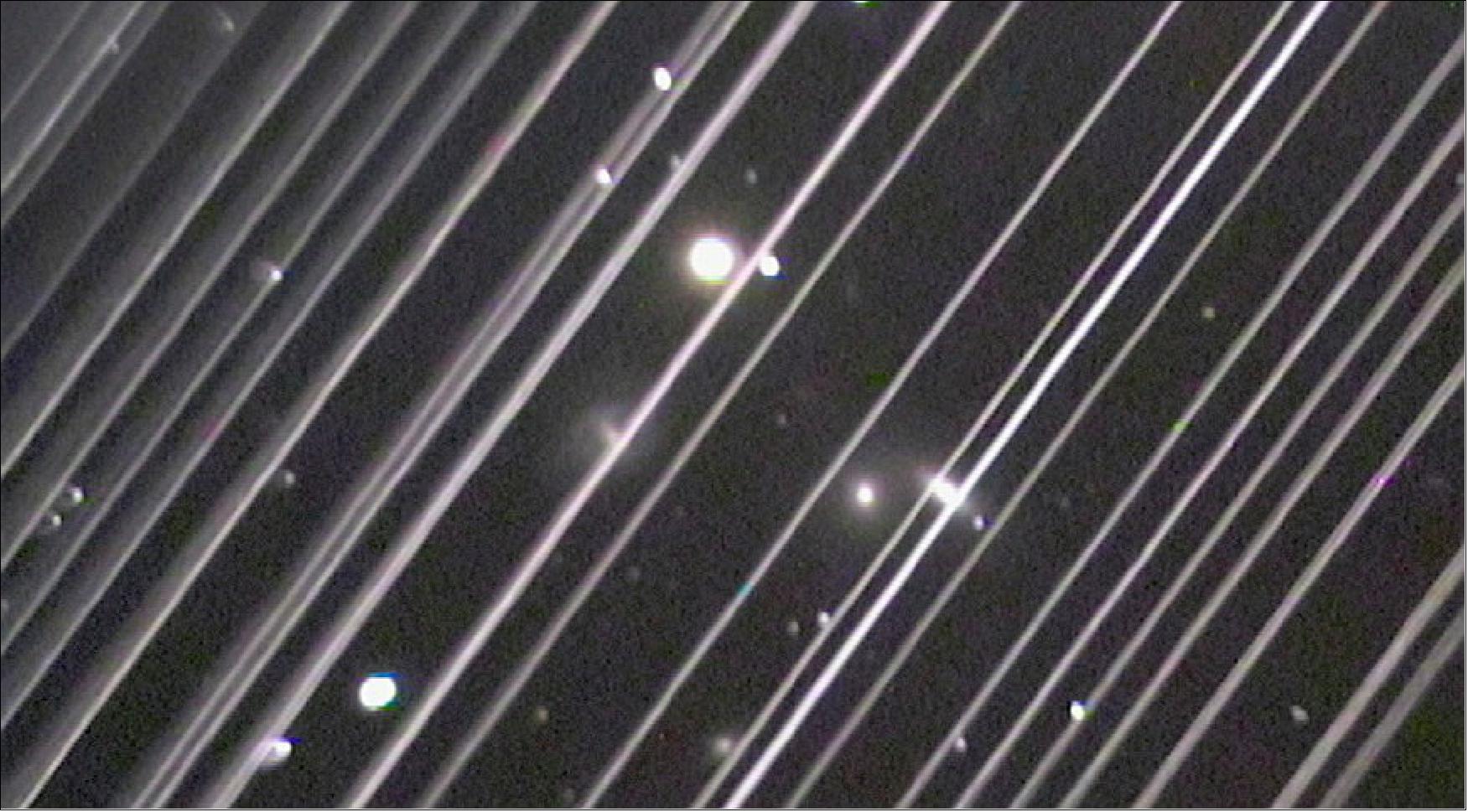
Figure 31: Three years after the first batch of Starlink satellites alarmed astronomers because of their brightness, astronomers say they're worried about both the increased brightness of newer Starlink satellites and larger second-generation ones (image credit: Victoria Girgis/Lowell Observatory)
-A Falcon 9 is scheduled to lift off at 12:08 p.m. Eastern June 17 from Kennedy Space Center’s Launch Complex 39A, placing 53 Starlink satellites into orbit. This mission will bring the total number of Starlink satellites launched to more than 2,700, with more than 2,450 in orbit. These satellites, like several hundred before it, are version 1.5 of the Starlink design. Those satellites lack visors that SpaceX installed on satellites in 2020 to keep sunlight from reaching reflective surfaces on the satellites and thus reduce their brightness as seen from the ground. The visors were not compatible with the laser intersatellite links installed on the V1.5 satellites.
Astronomers say they’ve noticed the V1.5 satellites are brighter than the earlier “VisorSat” Starlink satellites. During a panel discussion at the 240th Meeting of the American Astronomical Society (AAS) here June 13, Pat Seitzer, an astronomer at the University of Michigan who studies satellite brightness, said the VisorSats were at magnitude 6.5. That brightness was near the recommendation set by astronomers of being no brighter than magnitude 7 to minimize interference with astronomical observations.
A bigger concern is the second generation of Starlink satellites. Those satellites, designed to be launched on SpaceX’s Starship, will be significantly larger and, thus, potentially brighter. “It’s anybody’s guess what the brightness will be,” Seitzer said. “Hopefully they can incorporate all of the lessons they’ve learned so they don’t end up a factor of four brighter than they are now.”
In a presentation last month to the Federation of Astronomical Societies, David Goldstein, principal engineer at SpaceX, said the company was working on new technologies to mitigate the brightness of the second-generation Starlink satellites. That includes development of a “dielectric mirror sticker” to place on the satellites to reflect sunlight away from the Earth.
• June 14, 2022: SpaceX and OneWeb said June 13 they have reached a spectrum coordination plan that would enable their current and second-generation broadband megaconstellations to coexist. 8)

Figure 32: SpaceX and OneWeb told the FCC they have settled their spectrum interference differences (image credit: FCC via Flickr)
The company has a separate FCC authorization to launch 7,500 V-band satellites, which Starlink’s first generation needs to reach a total of 12,000 satellites for global services.
There are currently 2,404 Starlink and 427 OneWeb satellites in orbit, according to statistics maintained by spaceflight analyst and astronomer Jonathan McDowell.
• May 2, 2022: Evidence is mounting of a need to perform an environmental review before approving SpaceX’s plans to add nearly 30,000 satellites to its Starlink constellation, satellite broadband competitor Viasat told the FCC May 2. 10)
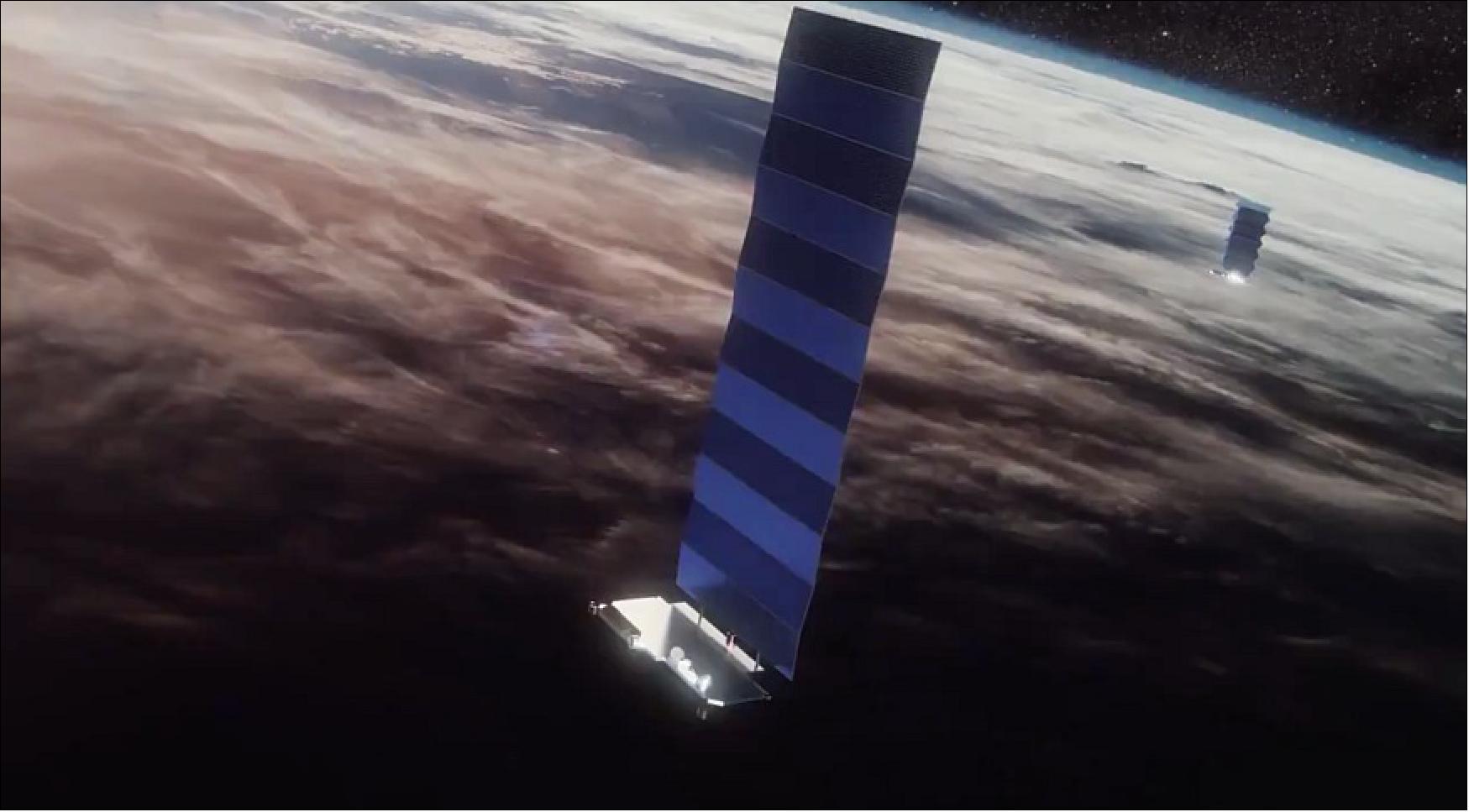
Figure 33: SpaceX has launched nearly 500 additional Starlink satellites so far this year (image credit: SpaceX)
While calls for a thorough environmental review that Viasat made for Starlink’s current generation of satellites in December 2020 were largely rejected, Taubman said SpaceX’s plan to grow the constellation by seven times “would have significant aesthetic, scientific, social and cultural, and health effects on the human environment on Earth.”
SpaceX has already deployed more than half of the 4,408 first-generation Starlink satellites the FCC has approved to operate at altitudes of around 550 kilometers. The company is seeking FCC permission for a larger constellation of second-generation Starlinks that it proposes to operate at lower altitudes — between 340 and 614 kilometers — in order to improve performance.
SpaceX has said it is incorporating visors on Starlink satellites to prevent sunlight from reflecting off them, and implementing other measures to reduce interference with astronomers. But in the May 2 letter to the FCC, Taubman said these efforts “have not fully mitigated” the constellation’s light pollution issue.
The letter pointed to a paper astronomers published in Nature Astronomy in April, which said none of the techniques that Starlink and other LEO constellations are exploring can fully avoid them “harming astronomical science ... launching significantly fewer satellites is the only mitigation that could do this.” 11)
In a Feb. 8 letter to the FCC, NASA said SpaceX’s proposed Gen 2 network could double the number of Hubble Space Telescope images that contain satellite streaks, currently 8% of all images, and undermine the ability of the United States to detect and potentially redirect asteroids heading to Earth.
“NASA estimates that there would be a Starlink in every single asteroid survey image taken for planetary defense against hazardous asteroid impacts, decreasing asteroid survey effectiveness by rendering portions of images unusable,” the space agency said in a letter signed by Samantha Fonder, NASA’s representative to the Commercial Space Transportation Interagency Group.
• April 22, 2022: Jet service provider JSX said April 21 it is set to become the first air carrier to provide Starlink’s satellite broadband services later this year. 12)
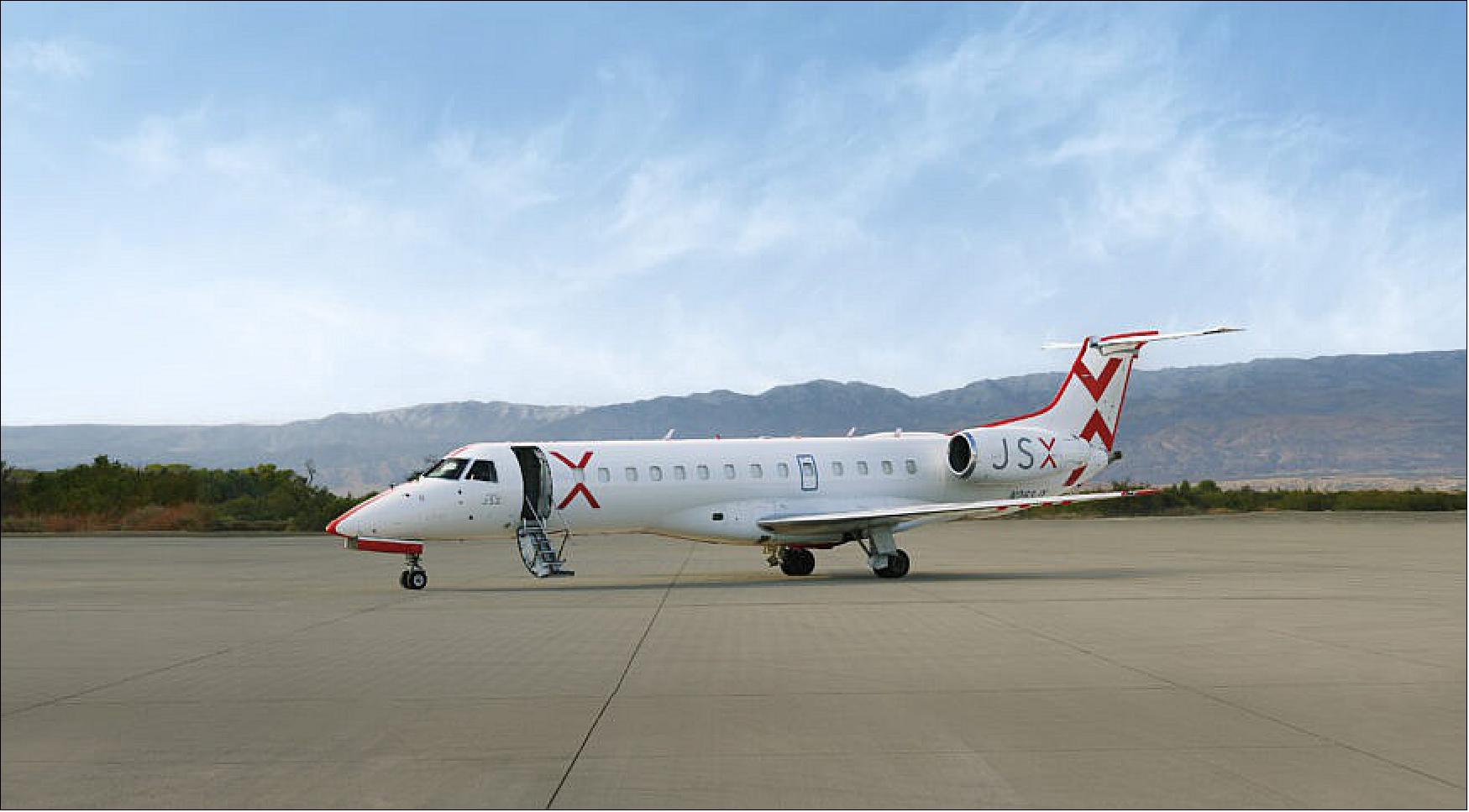
Figure 34: JSX said it is working closely with SpaceX to certify, test, and outfit the air carrier’s growing fleet (image credit: JSX)
The semi-private charter company JSX (JetSuiteX, Inc) with HQs in Dallas, TX, said it signed a deal to provide Starlink in-flight Wi-Fi on up to 100 planes, covering the 77 30-seat Embraer jets currently in its fleet.
Financial details were not disclosed but JSX said it intends to provide the services to passengers free of charge. The companies are testing a terminal that has been developed specifically for the aviation market, which Starlink vice president of commercial sales Jonathan Hofeller said March 22 is working toward certification on “various aircraft.”
Delta said March 14 more than 50% of domestic enplanements are served by Viasat connectivity.
The company started seeking regulatory permission in 2020 to test Starlink services on private jets and the vessels Falcon 9 rockets land on for reuse. SpaceX is also planning to connect vehicles and other types of boats to Starlink to expand the broadband network out of fixed homes and offices.
To date, SpaceX has launched 2,388 satellites to expand its Starlink network, according to statistics maintained by spaceflight analyst and astronomer Jonathan McDowell. Of those, McDowell’s data shows 2,150 satellites remain in orbit and 2,121 are operational.
• April 7, 2022: SpaceX has lost the right to provide Starlink broadband services in France after the country’s highest administrative court revoked its spectrum license. 13)
France’s Conseil d’État (Council of State) ruled April 5 that French telecoms regulator ARCEP (Autorité de Régulation des Communications Électroniques et des Postes) should have launched a public consultation before authorizing Starlink in February 2021.

Figure 35: France’s Conseil d’État revoked Starlink's spectrum license in the country April 5, following an appeal from environmental groups (photo: Gov. of France)
ARCEP’s “contested decision” to authorize Starlink “is likely to have a significant impact on the market for the supply of high-speed internet access and affect the interests of end users,” Conseil d’État said, and therefore should have first consulted the public. The ruling came after Priartem and Agir Pour L’Environnement, two French environmental activist organizations, submitted an appeal to challenge ARCEP’s decision to award Starlink frequency rights.
Stéphen Kerckhove, managing director of Agir pour l’Environnement (Acting for the Environment), called for stronger regulations on megaconstellations to protect views of the night sky and reduce space debris risks in an April 6 statement.
• March 26, 2022: Intelsat is buying Starlink terminals and services and reselling them as part of a multi-layer, multi-orbit managed network. 104)
- If you can’t beat them, join them. That is the thinking behind a new managed network service offered by satellite operator Intelsat that integrates geostationary satellites, SpaceX’s Starlink low Earth orbit constellation and cellular broadband. Intelsat is buying Starlink terminals and services and reselling them as part of a multi-layer, multi-orbit managed network that includes geostationary satcom and LTE connectivity. “We combine them in one gateway so the user has one interface,” said Claussen.
The company in November demonstrated a multi-orbit network with OneWeb but that constellation is not yet able to provide global coverage. Intelsat operates 52 geostationary satellites. Starting this month, users of the company’s Flex satcom service can opt for a bundle with the Starlink service and cellular. “Our government customers can get the whole package and just pay one bill,” said Claussen. Starlink has more than 2,000 operational satellites in orbit.

• February 9, 2022: Up to 80% of the Starlink satellites launched by SpaceX last week (on Feb. 3) will soon reenter, or have already done so, because a geomagnetic storm kept the spacecraft from raising their orbits. 105) SpaceX said late February 8 that the 49 satellites it launched February 3 were affected by a geomagnetic storm the next day. Such storms, triggered by solar activity like coronal mass ejections, can increase the density of the upper atmosphere, including at the initial low orbit SpaceX uses to check out Starlink satellite before raising them to their higher operational orbits. 106)
While SpaceX emphasized the severe nature of the storm, forecasts before the launch, and data collected during it, indicated only a minor storm. NOAA’s Space Weather Prediction Center said Feb. 2 it expected a moderate geomagnetic storm, rated G2 on a scale of G1 to G5, that day, going down to G1 on Feb. 3, the day of the launch. The Space Force’s Space Launch Delta 45 predicted only a low risk from space weather in the last forecast it issued before the launch. Other satellite operators have not reported issues with their spacecraft, but were not in SpaceX’s unique position of having satellites in very low orbits.
This solar cycle, though, will take place amid a boom in the deployment of small satellites in low Earth orbit, many of which do not use customized and expensive radiation-hardened electronics. In a presentation at the SmallSat Symposium here Feb. 8, Carissa Christensen, founder and chief executive of Bryce Space and Technology, said the number of active satellites has grown from about 1,000 five years ago to more than 5,000 today. “That’s a big leap,” she said.
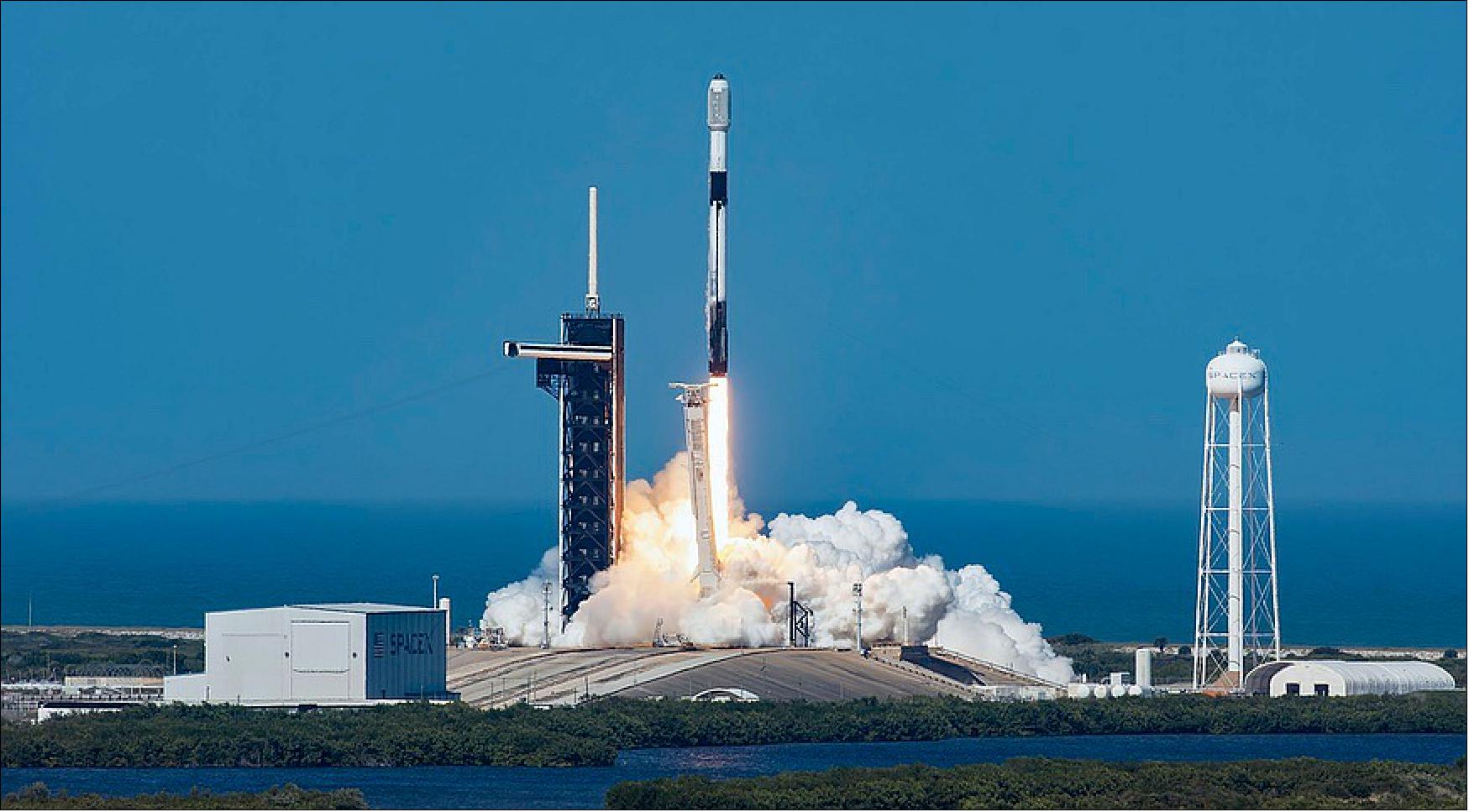
• January 19, 2022: Pakistan has followed India in ordering SpaceX to stop taking preorders for Starlink broadband services within its borders without a license. 15)
The Pakistan telecoms regulator advised the general public to refrain from pre-booking the service in Pakistan through Starlink or associated websites. SpaceX, which did not respond to an email requesting comment, appeared to be still accepting preorder deposits for addresses in Pakistan through Starlink’s website as of Jan. 19.
The website appeared to remain open to Indian addresses in the days that followed a similar public announcement Nov. 26 from India’s government, which also called on the company to stop taking preorders until Starlink has a license to operate in the country.
Starlink’s lead executive in India announced Jan. 4 that he had resigned for personal reasons, hours after Reuters, TechCrunch and others reported that SpaceX emailed customers in India to say preorder deposits would be refunded until Starlink is licensed to operate there.
Meanwhile, SpaceX is pressing ahead with an aggressive deployment schedule to build out global coverage, launching Jan. 18 a batch of 49 Starlink satellites on a Falcon 9 rocket to low Earth orbit (LEO). According to statistics kept by astrophysicist and spaceflight analyst Jonathan McDowell, the launch means SpaceX is operating 1,879 Starlink satellites in LEO. The company is authorized to operate 4,408 satellites at around 550 kilometers.
• January 17, 2022: Since 2019, SpaceX has been launching an increasing number of internet satellites into orbit around Earth. Astronomers have expressed concerns that that these objects, which can appear as streaks in telescope images, could hamper their scientific observations. 107)
To quantify these effects, a team of researchers studied archival images captured by the National Science Foundation (NSF)-funded Zwicky Transient Facility (ZTF), an instrument that operates from Caltech's Palomar Observatory near San Diego. ZTF scans the entire night sky every two days, cataloguing cosmic objects that explode, blink, or otherwise change over time. This includes everything from supernovae to near-Earth asteroids. The Zwicky team members say they decided to specifically study the effects of Starlink satellites because they currently represent the largest low-Earth orbit, or LEO, constellation, and they have well-characterized orbits.
The findings, reported in the January 17 issue of The Astrophysical Journal Letters, shows 5,301 satellite streaks appear in archival images taken between November 2019 and September 2021. 108) — The streaks are most apparent in so-called twilight observations, those taken at dawn or dusk, which are important for finding near-Earth asteroids that appear close to the sun in the sky. ZTF has discovered several asteroids of this nature, including 2020 AV2, the first asteroid spotted with an orbit that fits entirely within the orbit of Venus.
In the future, the scientists expect that nearly all of the ZTF images taken during twilight will contain at least one streak, especially after the Starlink constellation reaches 10,000 satellites, a goal SpaceX hopes to reach by 2027.
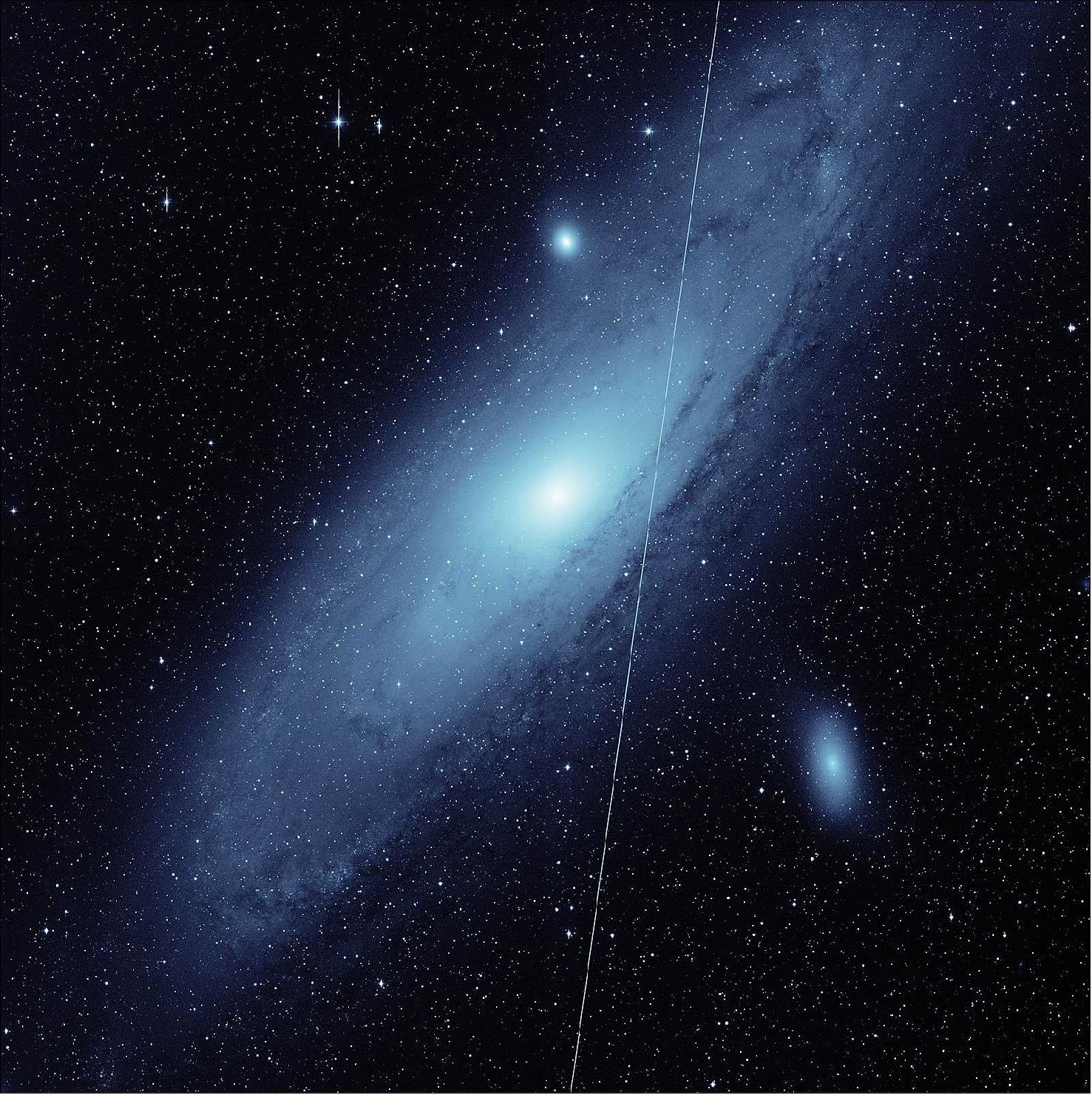
This is still not dim enough to meet standards outlined by the Satellite Constellations 1 (SATCON1) workshop in 2020, a gathering sponsored by the NOIRLab (National Optical-Infrared Astronomy Research Laboratory) and the AAS (American Astronomical Society) to bring together astronomers, policymakers, and other experts to discuss the impact of large satellite constellations on astronomy and society. The group called for all LEO satellites to be at seventh magnitude or fainter.
The study authors also note their study is specific to ZTF. Like ZTF, the upcoming Vera C. Rubin Observatory, under construction in Chile, will also survey the sky nightly, but due to its more sensitive imager, astronomers predict that it may be more negatively affected by satellite streaks than ZTF. ZTF (Zwicky Transient Facility) is funded by NSF and an international collaboration of partners. Additional support comes from the Heising-Simons Foundation and Caltech. ZTF data are processed and archived by Caltech's IPAC astronomy center. NASA supports ZTF's search for near-Earth objects through the Near-Earth Object Observations program.
• November 29, 2021: India’s government has told SpaceX to stop taking preorders for Starlink broadband services in the country until it has a license to operate there. 17) Citizens were also warned against pre-ordering Starlink because the “company has not obtained any license/authorization for rendering satellite based internet services” in India.
The “government approval process is complex,” stated a document Bhargava shared through the LinkedIn post, which said Starlink had yet to file an application with the Indian government at the time.
• November 13, 2021: The first launches for the Starlink v1.5 G4 series started taking place today. Several more launches took place throughout the year, from three different locations; the Space Launch Complex 4E at Vandenberg Space Force Base in California, the Space Launch Complex 40 (SLC-40) in Cape Canaveral Air Force, Florida and the Launch Complex 39A (LC-39A) at NASA’s Kennedy Space Center in Florida.
• September 16, 2021: Two years after the close approach of a Starlink satellite with a European Space Agency satellite alarmed some in the space industry, SpaceX says it’s working closely with a wide range of satellite operators to ensure safe space operations. 109)
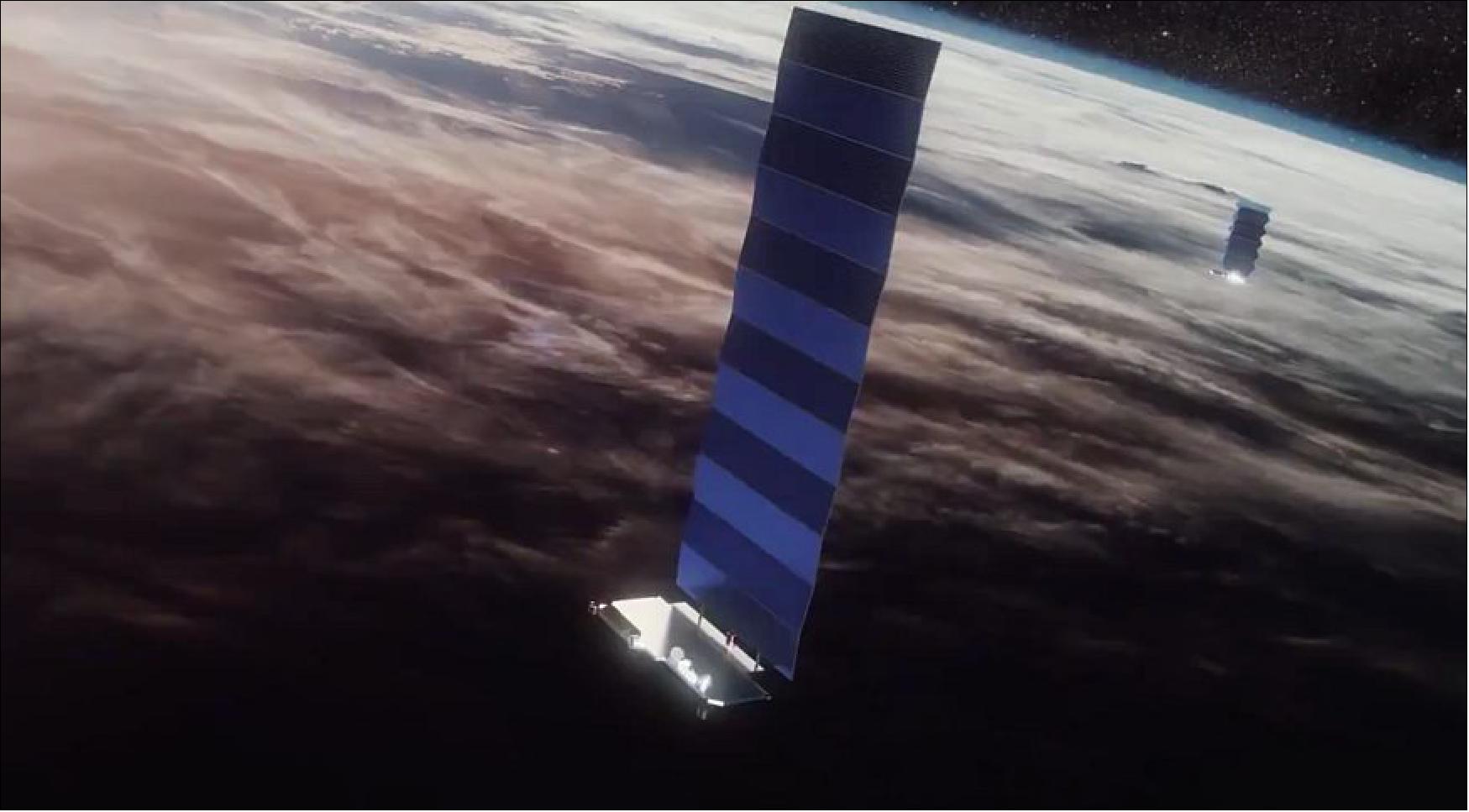
In September 2019, ESA announced it maneuvered an Earth science satellite called Aeolus when the agency determined it would pass dangerously close to a Starlink satellite. The incident was exacerbated by a breakdown in communication between ESA and SpaceX in the days leading up to the close approach.
After that incident “we went to work coordinating” with both commercial and government satellite operators, said David Goldstein, principal guidance navigation and control engineer at SpaceX, during a panel discussion at the AMOS (Advanced Maui Optical and Space Surveillance Technologies Conference) here Sept. 16 (AMOS 14-17, September 2021, Wailea, Maui, Hawai'i).
-The best-known example of that coordination is a Space Act Agreement between NASA and SpaceX announced in March. Under the terms of that agreement, SpaceX agreed to move its Starlink satellites in the event of any close approaches with NASA spacecraft, a move intended to avoid scenarios when both parties maneuvered their satellites.
In addition to that agreement, Goldstein said the company has a Cooperative Research and Development Agreement with the U.S. Space Force and a “good working relationship” with ESA and the European Union’s Space Surveillance and Tracking program.
- Those partnerships extend even to OneWeb, a company that complained in Federal Communications Commission filings about a close approach one of its newly launched satellites had with a Starlink satellite in March. “We have a great working relationship with OneWeb after that conjunction in March,” Goldstein said. “Just fantastic coordination at the operational level.”
• August 26, 2021: SpaceX is adding laser terminals on all future Starlink satellites and is the reason behind a break in launches for the broadband megaconstellation, president and chief operating officer Gwynne Shotwell said. 18)
SpaceX had been conducting an aggressive launch campaign with its Falcon 9 rocket throughout the first half 2021 before the hiatus, enlarging the Starlink constellation to more than 1,600 satellites in low Earth orbit.
Typically, each Falcon 9 launch for the network has placed 60 Starlink satellites at a time. There were four Starlink launch missions this May alone. SpaceX has regulatory permission to operate 4,408 satellites at 550-kilometers altitude for global coverage.
• June 30, 2021: The first launches for the Starlink V1.5 R1 and G2 series started taking place from today. Several more launches took place throughout the year, from three different locations; the Space Launch Complex 4E at Vandenberg Space Force Base in California, the Space Launch Complex 40 (SLC-40) in Cape Canaveral Air Force, Florida and the Launch Complex 39A (LC-39A) at NASA’s Kennedy Space Center in Florida.
• June 1, 2021: Satellite operator Viasat is stepping up efforts to stop Starlink’s growing constellation, taking aim at the nearly $900 million of rural broadband subsidies that SpaceX won in December. 19)
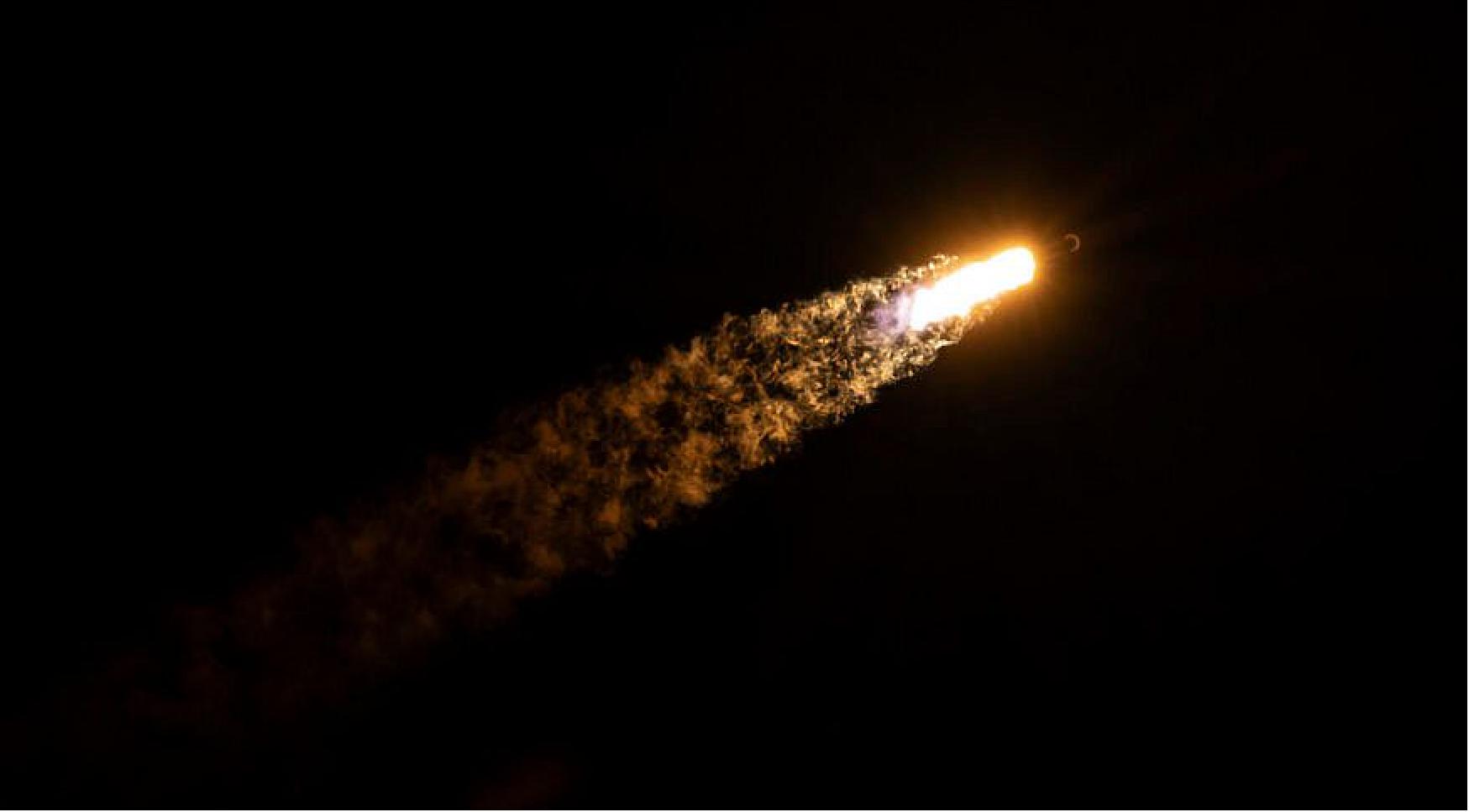
Figure 40: SpaceX launched four batches of Starlink satellites across four separate missions in May 2021 (image credit: SpaceX)
The operator is asking the Federal Communications Commission (FCC) to review decisions made around the Rural Digital Opportunity Fund (RDOF), claiming differential treatment and a lack of transparency. In an Application for Review (AFR) filed June 1, Viasat calls on the regulator to probe a series of decisions related to bidding to provide low-latency internet service under RDOF’s Phase 1, also known as Auction 904.
Viasat initially filed its AFR with the FCC January 29, on a confidential basis, to review why it was not permitted to bid for the subsidies with its proposed low Earth orbit constellation, despite already operating broadband satellites in geostationary orbit. According to Viasat, decisions made by the FCC’s Rural Broadband Auctions Task Force, Office of Economics and Analytics and Wireline Competition Bureau “improperly discriminate against Viasat and treat it in a fundamentally different fashion than” SpaceX.
In a separate document filed with the FCC June 1, Viasat detailed analysis it says shows Starlink will be unable to meet the coverage and capacity commitments that SpaceX made to secure RDOF funding.
RDOF Phase 1 subsidies will be distributed to successful bidders over the next 10 years to connect around 5.2 million unserved homes and businesses with broadband in rural parts of the United States. Under SpaceX’s Phase 1 commitments, Starlink has to provide high-speed internet services to nearly 643,000 homes and businesses in 35 states.
• May 26, 2021: The last launch for the Starlink V.01 series took place today. Several more launches took place throughout the year, from three different locations; the Space Launch Complex 4E at Vandenberg Space Force Base in California, the Space Launch Complex 40 (SLC-40) in Cape Canaveral Air Force, Florida and the Launch Complex 39A (LC-39A) at NASA’s Kennedy Space Center in Florida.
• May 13, 2021: SpaceX will install ground stations within Google’s data centers for its Starlink broadband satellites under a new cloud partnership. 110) The alliance aims to expand the reach of Google Cloud customers to their data, services and applications without the need for nearby cell towers.
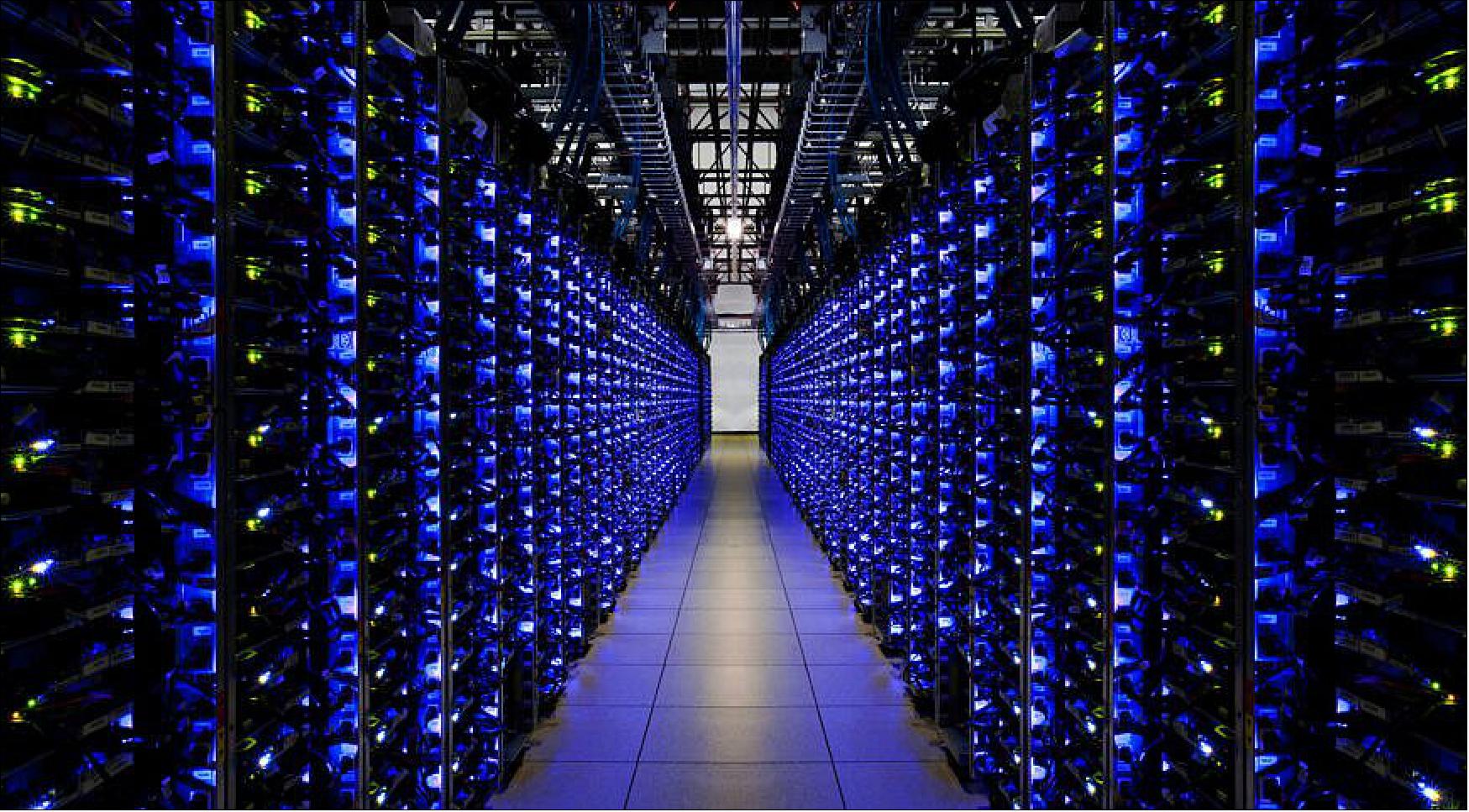
Battle in the clouds
Starlink’s Google partnership appears to be more integrated than an alliance announced in October with Microsoft, which will also use the satellites to expand cloud services. Microsoft said Starlink will support its new space-focused, modular cloud business called Azure Space, which will offer mobile cloud computing data centers that can be deployed anywhere in the world.
O3b internet satellites that SES operates in medium Earth orbit (MEO) also empower that initiative, supporting customers who use space-based data but are unwilling to invest in ground infrastructure directly to process and analyze it.
• April 27, 2021: The Federal Communications Commission (FCC) approved a modification of SpaceX’s license for its Starlink constellation, allowing the company to operate more than 2,800 additional satellites in lower orbits. 20)
In an order and authorization published April 27, the FCC said it will allow SpaceX to move 2,814 satellites from orbits in the range of 1,100 to 1,300 kilometers to 540 to 570 kilometers. That is the same orbital range that the company is using for its current constellation of about 1,350 satellites in operation today.
The agency rejected efforts by several companies, including others planning low Earth orbit constellations and those operating geostationary satellite systems, to block the modification or force SpaceX to be considered in a new round of proposed systems, losing its priority.
Under the approval, the size of the Starlink constellation will decrease by one satellite, from 4,409 to 4,408. That includes the 1,584 satellites previously authorized to operate at orbits of 550 kilometers at inclinations of 53 degrees, and 10 authorized in January to operate in polar orbits. They will be joined by 2,814 satellites, previously approved for higher orbits, operating at inclinations of 53.2, 70 and 97.6 degrees and at latitudes between 540 and 570 kilometers.
SpaceX’s proposal was the subject of intense debate at the FCC, with nearly 200 filings submitted. Many satellite operators opposed the modification on grounds ranging from increased electromagnetic interference to a greater risk of satellite collisions and creation of orbital debris.
• April 15, 2021: SpaceX has added more than $300 million to a fundraising round announced earlier this year to support continued work on its Starship launch system and Starlink satellite constellation. 21)

Figure 42: SpaceX President Gwynne Shotwell said April 14 that she expects the company’s Starship vehicle to be carrying “large numbers of people” to space, including to the moon, within five years (image credit: SpaceNews/Brian Berger)
In an amended filing with the U.S. Securities and Exchange Commission April 14, the company revised a filing in February that disclosed raising $850 million. The company says it has now raised $1.164 billion.
The company didn’t provide details on the source of the additional $314 million. The filing stated that 99 investors participated in the round, compared to 69 in its February filing about the round. The filing also didn’t disclose terms of the financing, although reports in February indicated that new round valued SpaceX at $74 billion, a significant increase over earlier round.
SpaceX raised $1.9 billion in its previous funding round in August 2020. It has raised more than $6 billion in equity to date. Much of that investment has gone to support two high-profile, and high-expense, projects SpaceX is pursuing. One is the Starlink constellation of broadband internet satellites the company is currently deploying, with about 1,350 satellites currently operational.
SpaceX’s other capital-intensive project is its Starship launch system. The company has flown, and destroyed, four Starship prototypes on suborbital test flights in recent months, most recently March 30. A new Starship prototype, SN15, recently arrived on the launch pad at SpaceX’s Boca Chica, Texas, test site for a flight test that could happen as soon as late this month.
• March 18, 2021: NASA and SpaceX have signed a joint agreement to formalize both parties’ strong interest in the sharing of information to maintain and improve space safety. This agreement enables a deeper level of coordination, cooperation, and data sharing, and defines the arrangement, responsibilities, and procedures for flight safety coordination. The focus of the agreement is on conjunction avoidance and launch collision avoidance between NASA spacecraft and the large constellation of SpaceX Starlink satellites, as well as related rideshare missions. A conjunction is defined as a close approach between two objects in space, usually at very high speed. 22)
SpaceX has agreed its Starlink satellites will autonomously or manually maneuver to ensure the missions of NASA science satellites and other assets can operate uninterrupted from a collision avoidance perspective. Unless otherwise informed by SpaceX, NASA has agreed to not maneuver its assets in the event of a potential conjunction to ensure the parties do not inadvertently maneuver into one another.
In addition to this agreement, NASA is supporting growth in the U.S. commercial space sector through the release of the “Spacecraft Conjunction Assessment and Collision Avoidance Best Practices Handbook,” which the agency issued in December 2020 to improve global awareness of space activity and to share NASA lessons learned regarding close approach coordination and mitigation. The handbook is available at: https://go.nasa.gov/34f9ijM
• March 8, 2021: SpaceX is seeking regulatory permission to connect moving vehicles to its rapidly expanding Starlink constellation, branching the broadband network out of fixed homes and offices. 111)
The company is asking the FCC (Federal Communications Commission) for authorization similar to the blanket license it already has for up to a million end-user customer Earth stations. Almost all other non-GEO high-throughput satellite (HTS) constellations have been diversifying into other markets, and Grady said investors and industry have already “priced-in” Starlink as a competitive threat, potential partner or solution as they prepare for its eventual entrance.
Starlink is likely eying opportunities at Tesla, Musk’s electric vehicle and energy company, which makes cars that currently rely on terrestrial telecoms companies for connectivity.

• February 19, 2021: To realize his dream of satellite-powered internet, tech billionaire Elon Musk needs to install antennas around the world. In northern France, a village hopes he'll decide to keep those antennas far away. 112)
Saint-Senier-de-Beuvron, population 350, is none too thrilled to have been picked as a ground station for Musk's Starlink project for broadband from space. Antennas on the ground will capture the signals and relay them to individual user terminals connected by cable. Starlink's contractor had already secured French regulatory approval to install nine "radomes" — three-meter-tall globes protecting the antennas — in Saint-Senier, one of four sites planned for France.
In December, Saint-Senier issued a decree to block construction on the field. But the refusal was based on a technicality, and the contractor, Sipartech, told AFP (Agence France Presse) that it plans to refile its request, which the council will likely be unable to block.
• February 4, 2021: SpaceX disclosed in a public filing on Thursday that its Starlink satellite internet service now has “over 10,000 users in the United States and abroad.” 113)
“Starlink’s performance is not theoretical or experimental ... [and] is rapidly accelerating in real time as part of its public beta program,” SpaceX wrote in a filing with the Federal Communications Commission.
Elon Musk’s company began a public beta program of Starlink in October, with service priced at $99 a month, in addition to a $499 upfront cost to order the Starlink Kit, which includes a user terminal and Wi-Fi router to connect to the satellites.
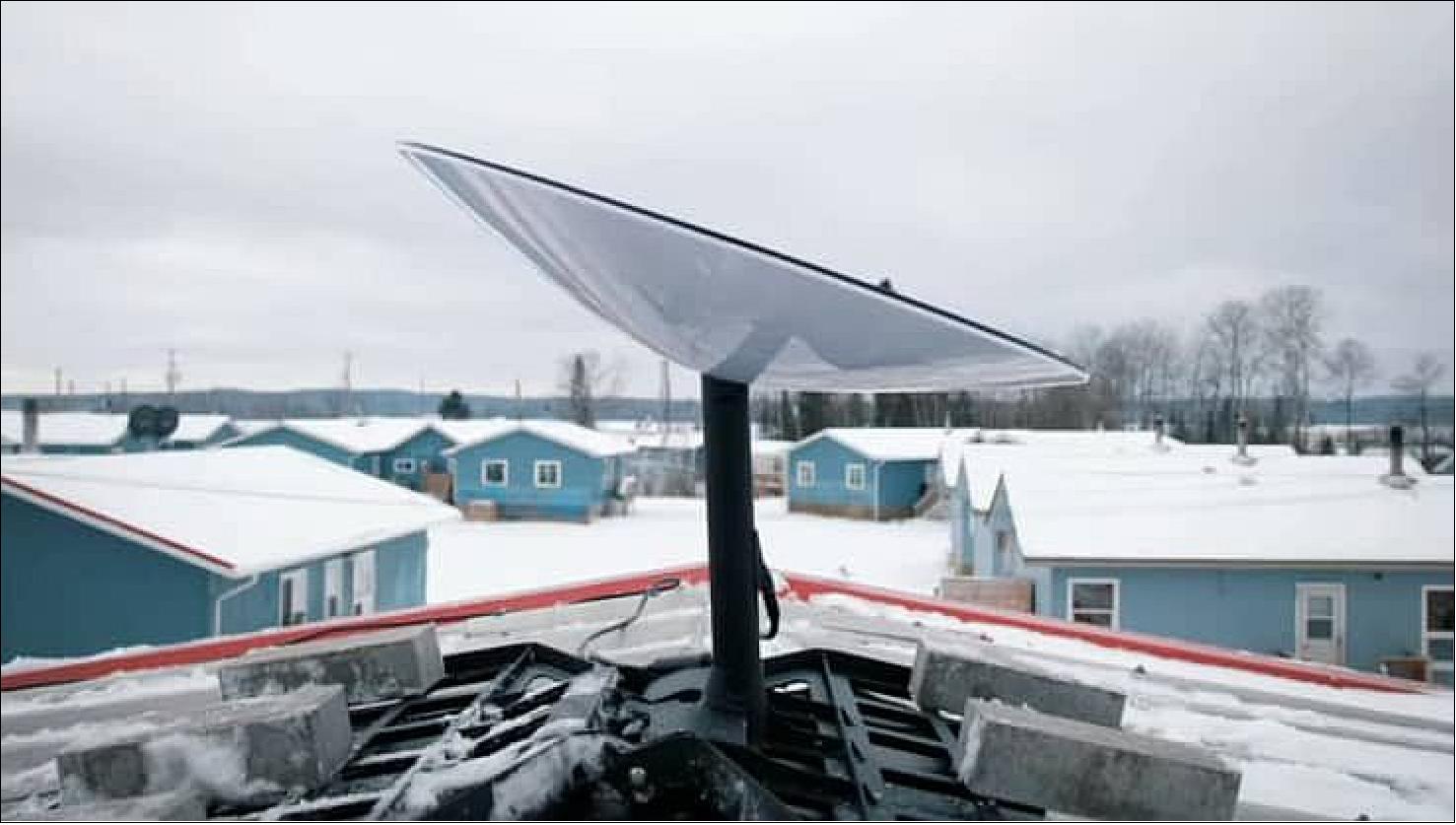
- SpaceX’s rapid Starlink user growth is notable given the service has been in a public beta for just over three months.
• January 18, 2021: The German Astronomical Society (AG), the German association of amateur astronomers (VdS) and the Society of German-Speaking Planetariums (GDP) comment on the rapid increase in the number of satellites in the night sky. Artificial satellites have significant impact on the perception of the natural starry sky and the exploration of our universe. 114)
With Starlink, SpaceX hopes to provide a satellite-based network of high-speed internet connections worldwide. The final constellation will consist of more than 30,000 satellites, which far exceeds the number of all satellites in Earth orbit to date. Other companies such as OneWeb, Amazon and others are planning or in some cases already enacting similar projects. German companies also have corresponding plans to launch large numbers of microsatellites cheaply into Earth orbits. Astronomy is aware of the importance of connecting remote regions of the Earth to the internet, as well as other technological developments. Nevertheless, implementation via the enormous increase in artificial satellites in the sky also entails considerable restrictions and risks, the consequences of which must be weighed responsibly and reduced as far as possible.
For astronomers, the protection of the night sky as a unique cultural heritage of mankind is a central concern. The experience of this natural wonder is already severely impaired in large parts of the world by inefficient and excessive artificial lighting. An uninterrupted view of the starry sky will no longer be possible due to the large number of light-reflecting artificial satellites, even in regions of the Earth that have so far been largely untroubled by light pollution. Even before the launch of the first Starlink satellites, numerous artificial satellites were observable in the night sky. With tens of thousands of additional objects orbiting the Earth, it is a realistic scenario that several thousand satellites passing over the firmament will obstruct stargazing in the night sky. Their number would then exceed that of the stars visible to the naked eye.
This will forever change the night sky, the sight of which has fascinated and inspired mankind since the beginning. In addition, the exploration of the universe for professional and amateur astronomy will be significantly affected. Images of night landscapes and celestial objects, which have always carried the fascination of astronomy to the general public and contributed to general education, will be significantly affected. Astronomy forms the basis for our exploration and use of space.
• January 9, 2021: The FCC (Federal Communications Commission) will allow SpaceX to launch 10 Starlink satellites into polar orbit on an upcoming mission, but deferred a decision on a much broader modification of SpaceX’s license. 115)
In an order published Jan. 8, the FCC granted SpaceX permission to launch 10 Starlink satellites into a 560-kilometer orbit with an inclination of 97.6 degrees. Those satellites will launch on a Falcon 9 no earlier than Jan. 14 as part of Transporter-1, a dedicated smallsat rideshare mission.
SpaceX had been lobbying the FCC for weeks for permission to launch Starlink satellites into a polar orbital plane as the FCC considers a modification of the company’s license to lower the orbits of satellites originally authorized for higher altitudes. That included a Nov. 17 request to launch 58 satellites into a single polar orbital plane, citing “an opportunity for a polar launch in December” that it did not identify.
In a Jan. 5 filing with the FCC, SpaceX said it spoke with FCC officials the previous day about this request. “SpaceX confirmed that if it receives the proper authorization, its forthcoming Transporter-1 mission will include 10 Starlink satellites targeted for operation in polar orbits,” the company stated.
- SpaceX argued in filings that adding at least some satellites into polar orbits would allow it to begin service in Alaska, which is not in the coverage area of existing Starlink satellites launched into mid-inclination orbits. The company said in its November filing that “launching to polar orbits will enable SpaceX to bring the same high-quality broadband service to the most remote areas of Alaska that other Americans have come to depend upon, especially as the pandemic limits opportunities for in-person contact.”
Other satellite operators opposed the move. In a Nov. 19 filing, Viasat said that “commercial expediency” was not a sufficient reason for the FCC to grant SpaceX permission for launching satellites into polar orbit, raising concerns about the reliability of Starlink satellites and the orbital debris hazards they pose.
• December 8, 2020: Observations conducted by the Murikabushi Telescope of Ishigakijima Astronomical Observatory in Japan confirmed that dark coating can reduce satellite reflectivity by half. There are concerns that numerous artificial satellites in orbit could impair astronomical observations, but these findings may help alleviate such conditions. 116) 117)
Today's growing demand for space-based services has spawned a wave of satellite constellation projects which operate numerous artificial satellites in orbit. Since these satellites can shine by reflecting sunlight, the astronomy community has raised concerns about their potential impact on astronomical observations. In January 2020, SpaceX launched "DarkSat," an experimental satellite with an anti-reflective coating, and asked astronomers to assess how much this coating can reduce the satellite reflectivity. Brightness measurements of artificial satellites have already been conducted, but until now, there was no verification that a dark coating actually achieves the expected reflectivity reduction.
The Murikabushi Telescope of Ishigakijima Astronomical Observatory can observe celestial objects simultaneously in three different wavelengths (colors). Comparing multicolor data obtained under the same conditions provides more accurate insight into how much the coating can reduce the satellite brightness. Observations conducted from April to June 2020 revealed for the first time in the world that artificial satellites, whether coated or not, are more visible at longer wavelengths, and that the black coating can halve the level of surface reflectivity of satellites. Such surface treatment is expected to reduce the negative impacts on astronomical observations. Further measures will continue to be implemented to pave the way for peaceful coexistence between space industries and astronomy.
• December 7, 2020: The Federal Communications Commission (FCC) on Monday awarded SpaceX's Starlink Internet venture $885 million in a broadband services auction for rural America. It was the fourth-largest award in recent competitive bidding. 118)
The win provides new funding to Starlink, which recently provided free public testing in limited areas of the northwestern United States and Canada. The money also will help Starlink move toward bringing better-quality and faster Internet service to rural areas.
Winning bids in the auction allows SpaceX to submit formal applications for contract Internet service in rural areas. SpaceX has advertised Starlink at $99 a month after the purchase of a satellite dish receiver for $499, but the FCC funding is to be used partly to lower those costs for rural areas.
• October 27, 2020: SpaceX has launched public beta testing of its Starlink communications satellite program that aims deliver high-speed Internet globally, particularly in underserved areas. 23)
The initial Starlink service is called "Better Than Nothing Beta," according to multiple screenshots of an email, CNBC (Consumer News and Business Channel) reported. Joining the public beta test costs $99 a month on top of a $499 upfront cost for the ground equipment, which includes a user terminal to connect to the satellites, a mounting tripod and a Wi-Fi router.
SpaceX also has a Starlink app listed on the Google Play and Apple iOS app stores, which helps users set up their systems and allows them to search areas of the sky for unobstructed views. "As you can tell from the title, we are trying to lower your initial expectations," the Starlink Team signed email said. "Expect to see data speeds vary from 50 Mb/s to 150 Mb/s and latency from 20 ms to 40 ms over the next several months as we enhance the Starlink system. There will also be brief periods of no connectivity at all."
• October 21, 2020: Microsoft and SpaceX announced a partnership Tuesday that would marry the tech leader's Azure computing system with space company's Starlink satellite Internet service. 24)
The partnership allows Microsoft to go head-to-head with Amazon and Starlink challenger Kuiper. That pairing would allow the e-commerce giant's AWS cloud to use satellites, as well. The Microsoft-SpaceX partnership will connect Starlink's network to Microsoft data centers around the world. Microsoft said it will mostly be used for customers "who need cloud computing capabilities in hybrid or challenging environments, including remote areas."
• August 26, 2020: Light pollution problem from large satellite constellations for astronomy.
A new report offers ways both astronomers and satellite developers can reduce the effect megaconstellations have on ground-based astronomy, but warned that no combination of measures can entirely eliminate the problem. 119)
The report released Aug. 25 by the AAS (American Astronomical Society) and the National Science Foundation’s NOIRLab (National Optical-Infrared Astronomy Research Laboratory) is the outcome of a four-day workshop called ”Satellite Constellations 1 Workshop Report” (SATCON1) held nearly two months ago. That workshop brought together more than 250 people, including both astronomers and satellite operators, to evaluate how to minimize the effect satellite constellations would have on astronomy.
The workshop concluded that while there are a number of ways to reduce the problem, there is no panacea. “No combination of mitigations will eliminate the impact of satellite constellations on optical astronomy,” said Connie Walker of NOIRLab, one of the co-chairs of the workshop, in an Aug. 25 press conference. The exception, she said, was not to launch such systems at all, but acknowledged “it’s not viable for industry.”
Even before the SATCON1 workshop, astronomers had been working with SpaceX on mitigation measures along the lines of those steps described in the report. The Starlink satellites operate at an altitude of 550 kilometers, and the company has tested measures to both darken the satellites to reduce their reflectivity as well as to install visors to block sunlight from hitting reflective surfaces.
The first “VisorSat” satellite launched in June and, earlier this month, reached its operational orbit. Astronomers said it was still too soon to measure its effectiveness. “We don’t have a complete set of observations yet,” said Lori Allen of NOIRLab, who chaired a SATCON1 working group on observations. “We do have some initial observations, but those are still under analysis.”
The efforts to reduce the brightness of Starlink satellites are much further along than those of other satellite constellations, such as OneWeb and Amazon’s Project Kuiper. OneWeb, which paused the deployment of its constellation after filing for Chapter 11 bankruptcy in March, worries astronomers because its satellites are in orbits 1,200 kilometers high, making them visible longer each night. The company also recently filed a proposal to operate as many as 48,000 additional satellites.
• August 25, 2020: Satellite Constellations 1 Workshop Report (SATCON1). The content of Table 1 contains only the Executive Summary of the SATCON1 paper. 120)
• May 15, 2020: Every two weeks, late in the evening, people are able to see a swarm of strikingly bright points of light crossing the night sky. An array of images and spectacular videos of such sightings circulate on social media. Word soon gets around that these glowing strings of light are not, in fact, an alien fleet. Rather, they are the Starlink satellites from SpaceX, the US space company run by Elon Musk, streaking across the night sky in 'trains'. 121)
This visual spectacle and the ambitious project behind it, which is on an enormous scale, are fascinating. Felix Huber and Manfred Gaida explain the background to the project in an interview. They talk about the impact that these strings of light have on astronomy and space, and answer the questions that people sent to DLR when it put out a call on social media.
Felix Huber is Director of DLR Space Operations and Astronaut Training. This is the central institution for spaceflight operations in Germany. Manfred Gaida is an astronomer and researcher at the DLR Space Administration and an expert on satellite-based space research and optical astronomy.
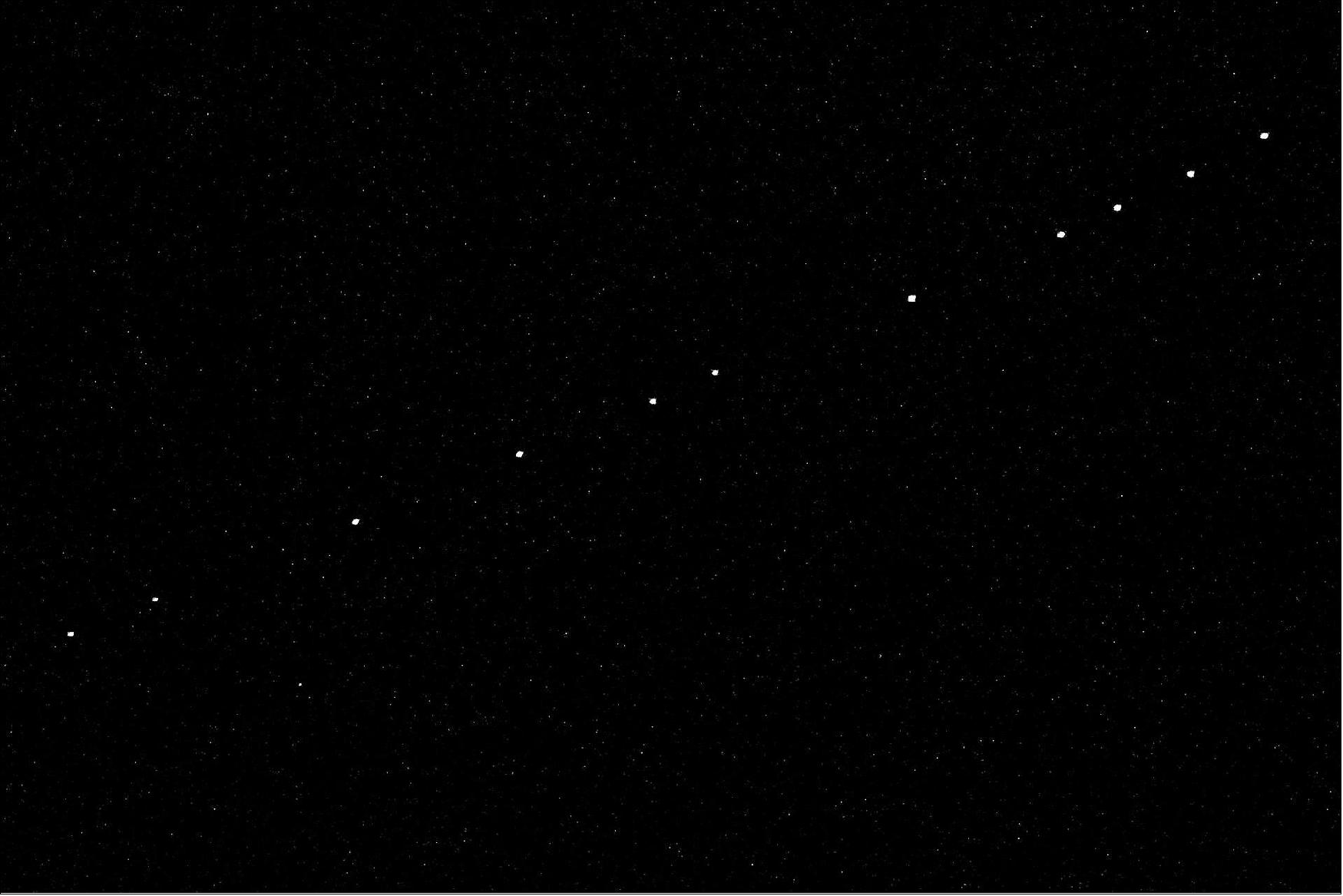
Figure 45: Eye-catching newcomers to the sky (image credit: Giancarlo Foto4U CC-BY 2.0)
• April 27, 2020: SpaceX Chief Executive Elon Musk said April 27 that he hopes to test a new way to reduce the brightness of the company’s Starlink satellites on the next launch for the broadband megaconstellation. 122)
In a briefing to a committee working on the next astrophysics decadal survey, Musk said the experimental “VisorSat,” along with a new approach for orienting Starlink satellites as they raise their orbits, should address concerns raised by astronomers that the Starlink constellation could interfere with their observations.
SpaceX first attempted to address the brightness problem with an experimental “DarkSat” included in a batch of Starlink satellites launched in January. The satellite used what the company described as experimental darkening treatments over reflective surfaces, like its antennas, in an effort to reduce the amount of sunlight it reflects and thus make it darker.
While DarkSat has shown some promise, appearing about one magnitude darker than untreated Starlink satellites, the company is moving in a different direction. “We found an option that is even better than that, which is basically to give the satellites shades,” he said.
SpaceX is planning test VisorSat on the company’s next Starlink launch. “It’s a bit of a challenge, but that’s our goal,” he said. He didn’t say how many satellites would be equipped with visors, or when the launch was scheduled. SpaceX has been performing Starlink launches at the rate of at least one a month so far this year, most recently April 22.
• March 23, 2020: SpaceX has secured the approval of the Federal Communications Commission (FCC) to deploy up to a million ground antennas for its Starlink satellite constellation project. Previously, the company’s founder Elon Musk referred to the antenna as “a UFO on a stick.” 25)
Recently, the company was able to secure a key government license to begin rolling out another important feature of its Starlink project. According to federal documents filed by the company, the FCC has given SpaceX approval release about a million antennas that are designed to work with the Starlink satellites.
“It looks like a UFO on a stick,” he said according to CNBC. “It’s very important that you don’t need a specialist to install. The goal is for ... just two instructions and they can be done in either order: Point at sky, plug in.” SpaceX’s first batch of Starlink satellites was official deployed in May last year. Since then, the company has been regularly carrying out launches for new batches of satellites. Currently, there around 360 Starlink units operating in low-Earth orbit. The launch for the next batch of satellites is scheduled to take place next month.
• March 19, 2020: SpaceX, the largest commercial satellite constellation operator in the world, has ambitious plans of installing 12,000 satellites in low-orbit over a span of several years, as part of its Starlink project to provide low-cost broadband internet service. 123)
A well-known astronomer and satellite tracker has voiced concerns that efforts to scan the skies for potentially dangerous near-Earth asteroids might be in jeopardy due to ambitious plans by SpaceX to deploy over 12,000 satellites in low-Earth orbit over the next several years. The study "The Low Earth Orbit Satellite Population and Impacts of the SpaceX Starlink" by Jonathan McDowell from the Harvard-Smithsonian Center for Astrophysics analyses the impact that the broadband service mega-constellation could have on different observatories. 124)
The research, still awaiting peer review and accepted for pre-print publication in Astrophysical Journal Letters, states: "Astronomers - and casual viewers of the night sky - must expect a future in which the low Earth orbit population includes tens of thousands of relatively large satellites."
Satellites from companies other than SpaceX, such as OneWeb pose a similar problem, as many observatories with particularly wide fields of view, like the Vera C. Rubin Observatory currently under construction in Chile, are likely to be impacted.
According to a recent study from the European Southern Observatory (ESO), satellite mega-constellations are projected as "severely" affecting between 30 and 50 percent of observations taken by the Rubin Observatory. The astronomer has recently been expounding the importance of continued, unhampered observation of asteroids that may pose a danger to the Earth due to the close proximity in which they move.
• March 5, 2020: Astronomers have recently raised concerns about the impact of satellite mega-constellations on scientific research. To better understand the effect these constellations could have on astronomical observations, ESO commissioned a scientific study of their impact, focusing on observations with ESO telescopes in the visible and infrared but also considering other observatories. The study, which considers a total of 18 representative satellite constellations under development by SpaceX, Amazon, OneWeb and others, together amounting to over 26 thousand satellites [1], has now been accepted for publication in Astronomy & Astrophysics. 125) 126)
Note [1]: Many of the parameters characterizing satellite constellations, including the total number of satellites, are changing on a frequent basis. The study assumes 26,000 constellation satellites in total will be orbiting the Earth, but this number could be higher.
The study finds that large telescopes like ESO's Very Large Telescope (VLT) and ESO's upcoming Extremely Large Telescope (ELT) will be "moderately affected" by the constellations under development. The effect is more pronounced for long exposures (of about 1000 s), up to 3% of which could be ruined during twilight, the time between dawn and sunrise and between sunset and dusk. Shorter exposures would be less impacted, with fewer than 0.5% of observations of this type affected. Observations conducted at other times during the night would also be less affected, as the satellites would be in the shadow of the Earth and therefore not illuminated. Depending on the science case, the impacts could be lessened by making changes to the operating schedules of ESO telescopes, though these changes come at a cost [2]. On the industry side, an effective step to mitigate impacts would be to darken the satellites.
Note [2]: Examples of mitigation measures include: computing the position of the satellites to avoid observing where one will pass; closing the telescope shutter at the precise moment when a satellite crosses the field of view; and constraining observations to areas of the sky that are in Earth’s shadow, where satellites are not illuminated by the sun. These methods, however, are not suitable for all science cases.
The study also finds that the greatest impact could be on wide-field surveys, in particular those done with large telescopes. For example, up to 30% to 50% of exposures with the US National Science Foundation's Vera C. Rubin Observatory (not an ESO facility) would be "severely affected”, depending on the time of year, the time of night, and the simplifying assumptions of the study. Mitigation techniques that could be applied on ESO telescopes would not work for this observatory although other strategies are being actively explored. Further studies are required to fully understand the scientific implications of this loss of observational data and complexities in their analysis. Wide-field survey telescopes like the Rubin Observatory can scan large parts of the sky quickly, making them crucial to spot short-lived phenomena like supernovae or potentially dangerous asteroids. Because of their unique capability to generate very large data sets and to find observation targets for many other observatories, astronomy communities and funding agencies in Europe and elsewhere have ranked wide-field survey telescopes as a top priority for future developments in astronomy.
Professional and amateur astronomers alike have also raised concerns about how satellite mega-constellations could impact the pristine views of the night sky. The study shows that about 1600 satellites from the constellations will be above the horizon of an observatory at mid-latitude, most of which will be low in the sky — within 30 degrees of the horizon. Above this — the part of the sky where most astronomical observations take place — there will be about 250 constellation satellites at any given time. While they are all illuminated by the Sun at sunset and sunrise, more and more get into the shadow of the Earth toward the middle of the night. The ESO study assumes a brightness for all of these satellites. With this assumption, up to about 100 satellites could be bright enough to be visible with the naked eye during twilight hours, about 10 of which would be higher than 30 degrees of elevation. All these numbers plummet as the night gets darker and the satellites fall into the shadow of the Earth. Overall, these new satellite constellations would about double the number of satellites visible in the night sky to the naked eye above 30 degrees [3].
Note [3]: It is estimated that about 34,000 objects greater than 10 cm in size are currently orbiting the Earth. Of these, about 5500 are satellites, including about 2300 functional ones. The remainder are space debris, including rocket upper stages and satellite launch adapters. About 2000 of these objects are above the horizon at any given place at any one time. During twilight hours, about 5–10 of them are illuminated by the Sun and bright enough to be seen with the naked eye.
These numbers do not include the trains of satellites visible immediately after launch. Whilst spectacular and bright, they are short lived and visible only briefly after sunset or before sunrise, and — at any given time — only from a very limited area on Earth.
The ESO study uses simplifications and assumptions to obtain conservative estimates of the effects, which may be smaller in reality than calculated in the paper. More sophisticated modelling will be necessary to more precisely quantify the actual impacts. While the focus is on ESO telescopes, the results apply to similar non-ESO telescopes that also operate in the visible and infrared, with similar instrumentation and science cases.
Satellite constellations will also have an impact on radio, millimeter and submillimeter observatories, including the Atacama Large Millimeter/submillimeter Array (ALMA) and the Atacama Pathfinder Experiment (APEX). This impact will be considered in further studies.
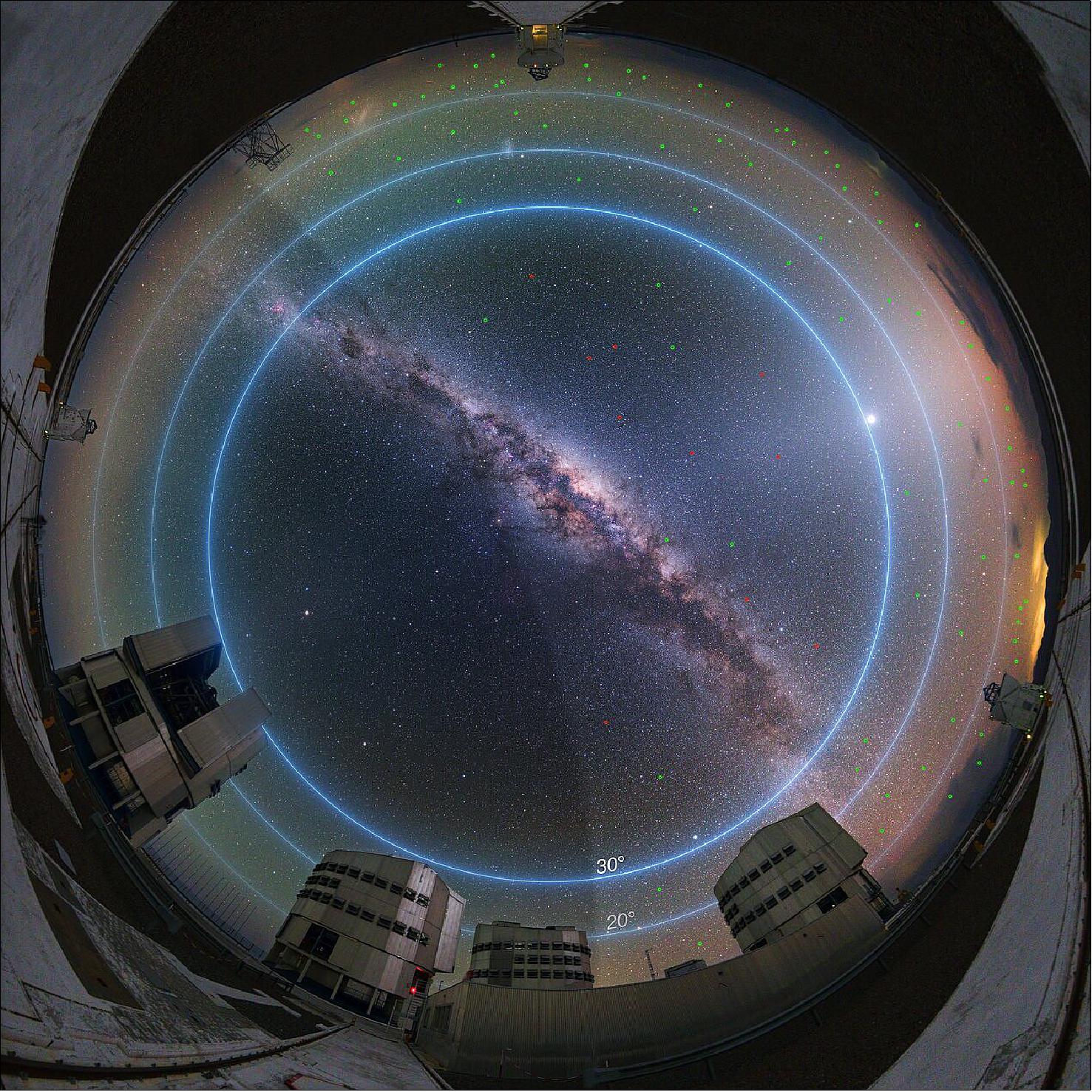
Figure 46: This annotated image shows the night sky at ESO's Paranal Observatory around twilight, about 90 minutes before sunrise. The blue lines mark degrees of elevation above the horizon. A new ESO study looking into the impact of satellite constellations on astronomical observations shows that up to about 100 satellites could be bright enough to be visible with the naked eye during twilight hours (magnitude 5–6 or brighter). The vast majority of these, their locations marked with small green circles in the image, would be low in the sky, below about 30 degrees elevation, and/or would be rather faint. Only a few satellites, their locations marked in red, would be above 30 degrees of the horizon — the part of the sky where most astronomical observations take place — and be relatively bright (magnitude of about 3–4). For comparison, Polaris, the North Star, has a magnitude of 2, which is 2.5 times brighter than an object of magnitude 3. The number of visible satellites plummets towards the middle of the night when more satellites fall into the shadow of the Earth, represented by the dark area on the left of the image. Satellites within the Earth's shadow are invisible. (image credit: ESO/Y. Beletsky/L. Calçada)
• January 17, 2020: SpaceX plans to launch its next group of Starlink broadband satellites aboard a Falcon 9 rocket as soon as Tuesday, Jan. 21, from Cape Canaveral, two days after the company is scheduled to launch a modified Falcon 9 booster from a separate facility at the Florida spaceport to test the Crew Dragon spaceship’s emergency escape system. 26)
SpaceX’s ability to achieve back-to-back launch schedule hinges on several factors, including an expected test-firing in the coming days of the Falcon 9 booster slated to fly on the next Starlink launch.
The Starlink mission — SpaceX’s fourth launch dedicated to the broadband network — was previously scheduled for Monday, Jan. 20. But sources said Friday the launch was pushed back to Jan. 21.
• January 9, 2020: The aerospace company SpaceX launched 60 of its Starlink broadband Internet satellites into orbit on 6 January 2020 — including one, called DarkSat, that is partially painted black. The probe is testing one strategy to reduce the brightness of satellite ‘megaconstellations’, which scientists fear could interfere with astronomical observations. 128)
Astronomers discussed the potential impacts of the satellites on various telescopes, and what could be done about them, on 8 January at a meeting of the American Astronomical Society in Honolulu, Hawaii. “2020 is the window to figure out what makes a difference in reducing the impact,” says Jeffrey Hall, director of Lowell Observatory in Flagstaff, Arizona, and chair of the society’s committee on light pollution.
Star Light, Star Bright: Three batches of Starlinks have been launched, for a total of about 180 satellites so far. They are most obvious in the night sky immediately after launch, before they boost their orbits to higher altitudes where they are farther away and appear dimmer. It’s not yet clear how significant a problem Starlinks will be for astronomy; scientists have complained about trails in their images since the first launch, but if the company ultimately moves to paint most of the Starlinks black, the impact could be substantially reduced.
Several factors contribute to their puzzling brightness, astronomers reported at the meeting. SpaceX says the position of the solar panels might have something to do with it: at lower elevations, before the orbit boost, the satellites’ panels are positioned like an open book to reduce drag. That temporary orientation could make them reflect more sunlight. The speed at which a satellite moves across a telescope’s field of view is also important — the slower it moves, the more brightness accumulates per pixel of imagery.
Twilight Zone: Calculations suggest the Starlink trails will interfere with astronomy most significantly during the hours surrounding twilight and dawn. That’s a particular problem for observations that need to be made during twilight, such as searches for some near-Earth asteroids. And on short summer nights, the satellite trails could be visible all night long.
The Rubin Observatory is particularly vulnerable because it will scan huge amounts of the sky very frequently. When it begins operating in 2022, it will photograph the entire night sky every three days, for ten years.
If telescope operators know precisely where each satellite will appear and at what time, they can swivel the telescope to point at a different part of the sky that does not have a satellite in it, says Tyson. That’s feasible if there are 1,000 satellites, but not if there are tens of thousands, because the telescope loses so much time maneuvering that “it’s hopeless”, he says.
That leaves darkening as a leading option. With DarkSat, SpaceX engineers painted surfaces on the satellite that scatter light or reflect light diffusely, says Cooper. That could make them faint enough to be invisible to anyone looking up at a typical night sky — but almost certainly still visible to most astronomical research telescopes.
• January 8, 2020: SpaceX says it’s committed to working with the astronomy community to address the brightness of its Starlink satellites, but some astronomers remain concerned about the deleterious effect that system and other megaconstellations will have on their field. 27)
One of the 60 satellites in the latest Starlink launch Jan. 6 featured an experimental coating intended to reduce its brightness. SpaceX said it will see in the coming weeks how well those coatings work, as well as study any effects they have on the performance of the satellite itself, before deciding how to move forward.
“Our level of brightness and visibility was a surprise to us,” said Patricia Cooper, vice president of satellite government affairs for SpaceX, during a Jan. 8 special session on the topic of megaconstellation effects on astronomy during the 235th Meeting of the American Astronomical Society (AAS) in Honolulu. SpaceX President Gwynne Shotwell also said last month that SpaceX was surprised by the brightness of the satellites.
Cooper said that brightness is affected by several issues. The Starlink satellites initially appear bright when released in a lower parking orbit, and the configuration of each satellites’ single large solar array when raising its orbit can also influence its brightness. Once in a final operating orbit of 550 kilometers, the spacecraft brightness decreases to a visual magnitude of about five, making them visible to the naked eye only in darker night skies.
One challenge, she said, is the unique design of the satellite made it difficult to determine exactly what causes the spacecraft to reflect so much light. “It turns out, we think, that surfaces that scatter light, or reflect light diffusely, are also significant contributors,” she said. That led to the testing of surfaces on the experimental satellite, nicknamed “DarkSat” by some, to reduce that reflectivity.
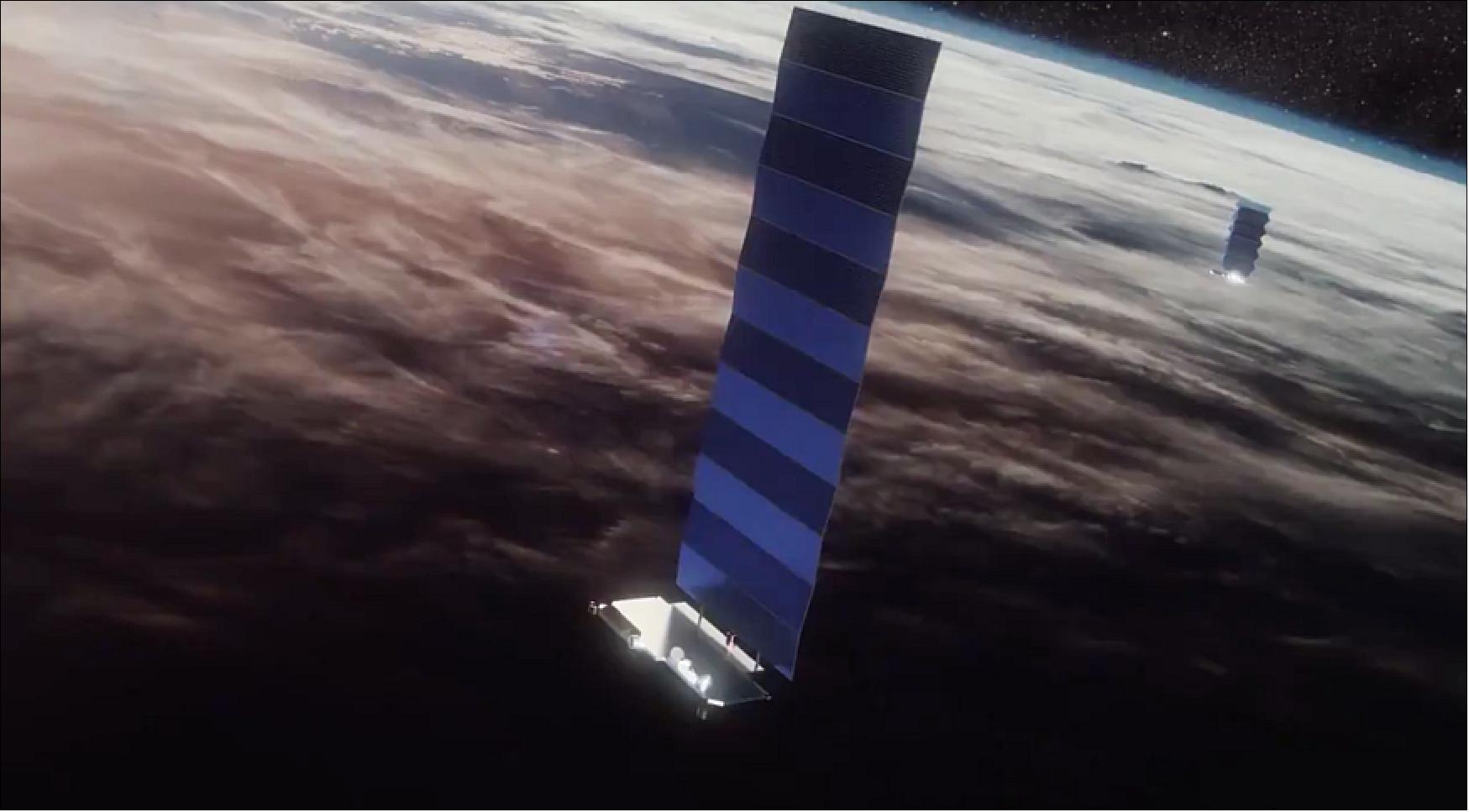
Figure 47: SpaceX says it's committed to reducing the brightness of its Starlink satellites, but while it works on that the company will continue to launch unmodified satellites (image credit: SpaceX)
• November 11, 2019: The first launch for the Starlink V.01 series took place today. Several more launches took place throughout the year, from three different locations; the Space Launch Complex 4E at Vandenberg Space Force Base in California, the Space Launch Complex 40 (SLC-40) in Cape Canaveral Air Force, Florida and the Launch Complex 39A (LC-39A) at NASA’s Kennedy Space Center in Florida.
• October 16, 2019: SpaceX wants spectrum access for nearly four times as many satellites as originally planned for its high-speed internet constellation, the company and a UN agency confirmed on 16 October. 28)
On October 7, the US FCC (Federal Communications Commission) sent the Geneva-based ITU (International Telecommunication Union) 20 filings with each one asking permission for 1,500 satellites, the ITU's Alexandre Vallet, chief of space services department, told AFP (Agence France Presse).
A SpaceX request for 12,000 satellites had already been approved. This new lot would add 30,000 to the network called Starlink. The ITU manages radio spectrum frequencies and satellite orbits around the world. The 20 new filings mentioned by the ITU official can be seen on its website.
The idea behind Starlink is that the network of mini-satellites will allow fast response time between user and internet provider. The grid created by all these satellites will be such that several of them will be in direct sight from any point on Earth.
To put things into context, there are currently 2,100 active satellites orbiting our planet, out of 23,000 objects recorded. These can be rocket stages, inactive satellites, space junk and other things. The prospect of adding another 42,000 satellites to the skies is causing worries for two reasons.
• June 14, 2019: SpaceX’s ambitious Starlink project could eventually launch more than 10,000 satellites into orbit and rewrite the future of the internet. But Elon Musk’s company SpaceX has been taking heat from the astronomical community after an initial launch in late May released the first 60 satellites. The satellites with a mass of 227 kg were clearly visible in Earth’s night sky, inspiring concern that they could increase light pollution, interfere with radio signals, and contribute to the growing issue of space debris. 127)
This week, the American Astronomical Society, the International Astronomical Union, the British Royal Astronomical Society, and the International Dark-Sky Association (IDA) all issued statements expressing concern about Starlink’s potential to damage astronomical research by leaving bright streaks through images.
“The Starlink affair has raised the attention of the astronomy community in a way that I’ve not seen during my couple of decades in it,” says John Barentine, director of public policy at the IDA, which lobbies against light pollution. “I hope that this moment is the wake-up call that is needed to prompt a new discussion in the international community about the nature of outer space, especially near the Earth, in a commercial context.”
Musk had repeatedly assured people on Twitter that his satellites wouldn’t be visible at night, so the light caught some people by surprise. However, the satellites’ initial brightness is intended to wane as they climb higher into their permanent orbits.
“The observability of the Starlink satellites is dramatically reduced as they raise orbit to greater distance and orient themselves with the phased array antennas toward Earth and their solar arrays behind the body of the satellite,” a spokesperson for SpaceX said in an email.
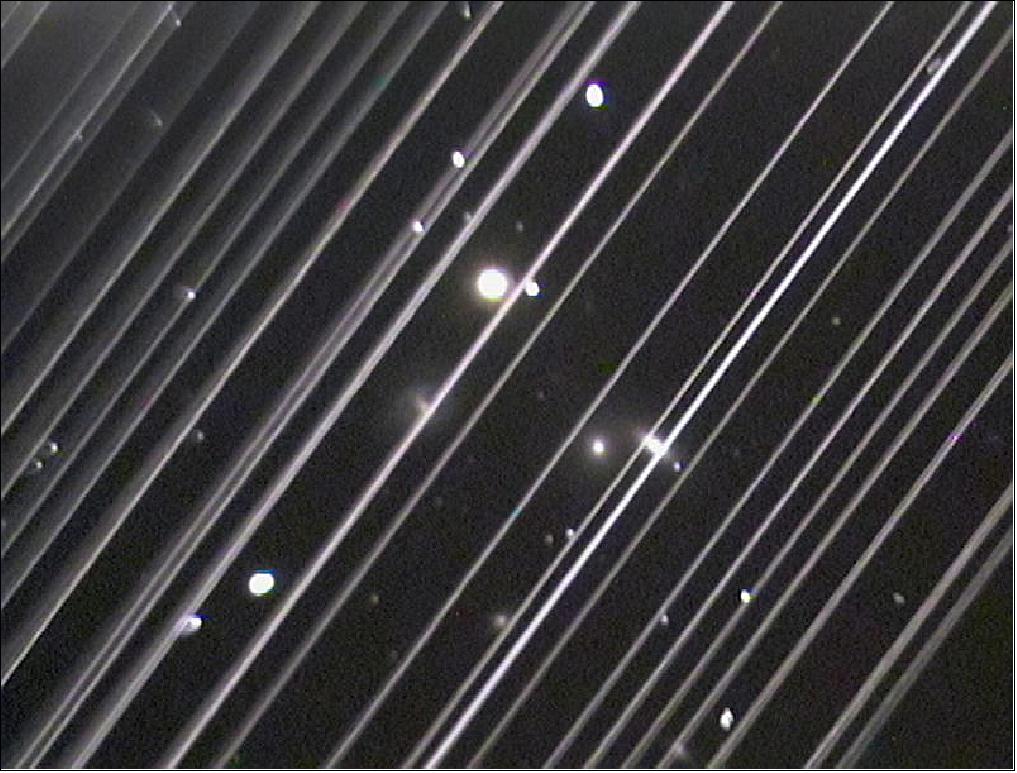
Figure 48: Telescopes at Lowell Observatory in Arizona captured this image of galaxies on May 25, their images marred by the reflected light from more than 25 Starlink satellites as they passed overhead (image credit: Victoria Girgis/Lowell Observatory)
But Barentine and other astronomers aren’t so sure, especially given that this is only the beginning for Starlink. Plus, many other companies — including Amazon, Boeing, OneWeb, Telesat, LeoSat, and even Facebook — are planning other so-called “mega-constellations” for connecting the masses online.
But there are already 22,000 artificial objects currently in orbit. And as the microlaunch space race kicks into high gear, that number is destined to double. Communications satellites aren’t the only things headed up, either. One group even proposed launching orbiting billboards that would shine ads back down to Earth. And an artist recently launched the “Humanity Star” – a purely artistic light beacon.
Whether the problem stands to worsen or not, most experts see the growth of these mega-constellations as inevitable.
• May 24, 2019: The first satellite of the Starlink V.09 series was launched on 24 May, 2019 at 02:30 UTC, with the twice-flown Falcon-9 rocket from SLC-40 (Space Launch Complex-40) at Cape Canaveral Air Force Station, Florida. The Falcon vehicle contained a payload of 60 minisatellites, each with a mass of 227 kg. 101) 102)
• May 11, 2019: SpaceX CEO Elon Musk has published the first official photo of the company’s near-final Starlink design and confirmed that Falcon 9 will launch a staggering 60 satellites into orbit. 29)
Known internally as Starlink v0.9, this mission will not be the first launch of operational satellites, but it will be the first internal SpaceX mission with a dedicated Falcon 9 launch. Additionally, the payload will be the heaviest yet launched by SpaceX, signifying an extraordinarily ambitious first step towards realizing the company’s ~12,000-satellite Starlink megaconstellation.
Nevertheless, it appears that each Starlink satellite is a relatively thin rectangle, possibly with a squared top and bottom. It’s also possible that they are all around rectangular and that the dispenser instead has two main sections. Either way, the very fact that the Starlink v0.9 payload can scarcely be parsed into recognizable satellites is thrilling. Aside from the rise of smallsats and cubesats, satellite design and engineering has been relatively stagnant for decades, particularly with respect to form factors and structural layouts. Most modern satellites are simply squarish boxes with electronics inside and payloads bolted on the outside.
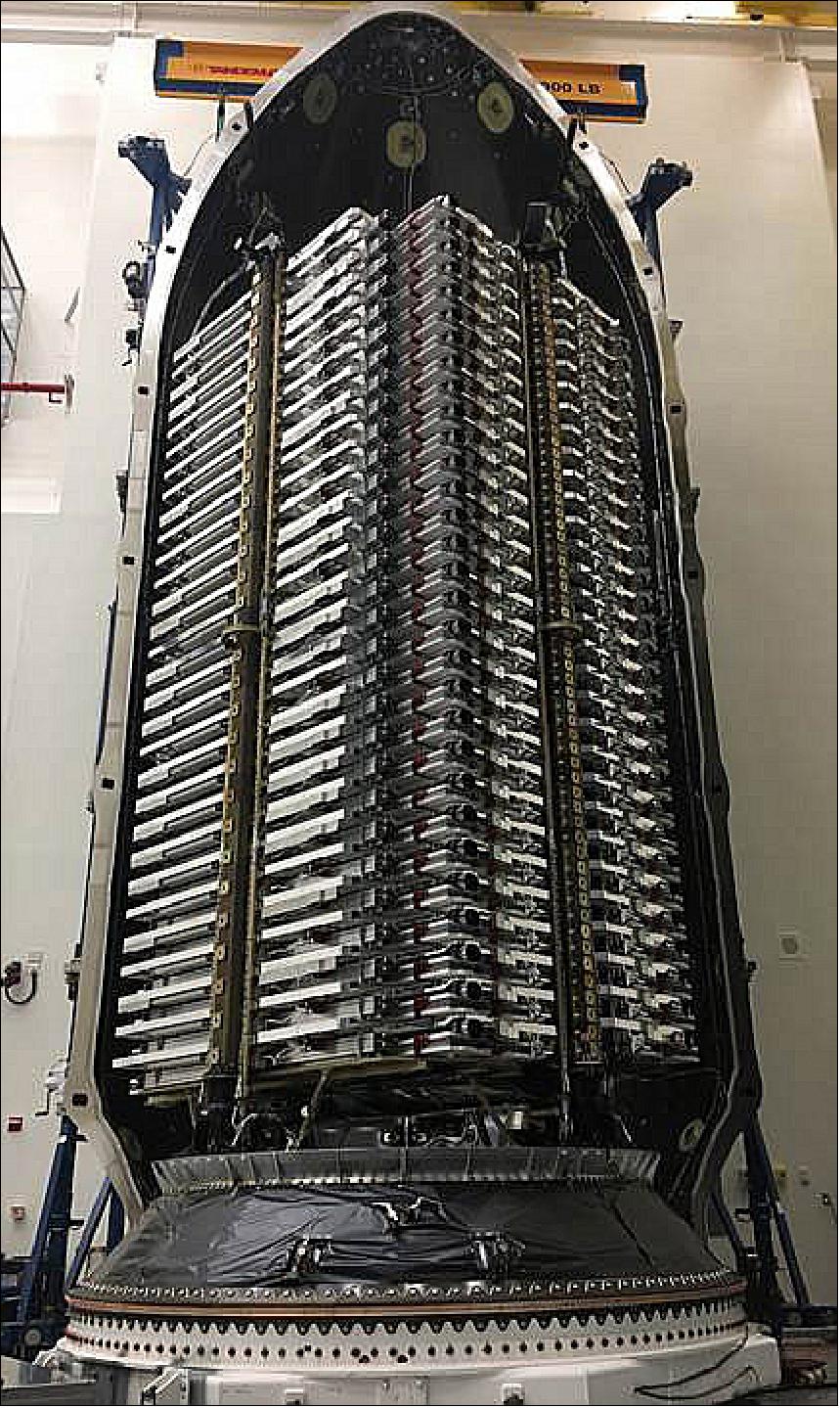
Figure 49: The second phase of Starlink testing – 60 advanced satellites – stacked in a single fairing (image credit: SpaceX)
• April 30, 2019: The FCC has granted a request by SpaceX to begin launching spacecraft for the company’s Starlink broadband network to a lower orbit than originally planned, overruling protests by competitors and clearing a major regulatory hurdle before the launch of the first batch of Internet satellites from Cape Canaveral in May. 30)
The regulatory commission approved SpaceX’s proposal Friday to fly more than 1,500 of its Starlink satellites at an altitude of 550 km, instead of the 1,150 km orbit originally planned.
“This approval underscores the FCC’s confidence in SpaceX’s plans to deploy its next-generation satellite constellation and connect people around the world with reliable and affordable broadband service,” said Gwynne Shotwell, SpaceX’s president and chief operating officer. “Starlink production is well underway, and the first group of satellites have already arrived at the launch site for processing.”
• April 8, 2019: SpaceX has announced a launch target of May 2019 for the first batch of operational Starlink satellites in a sign that the proposed internet satellite constellation has reached a major milestone, effectively transitioning from pure research and development to serious manufacturing. 31)
R&D will continue as SpaceX Starlink engineers work to implement the true final design of the first several hundred or thousand spacecraft, but a significant amount of the team’s work will now be centered on producing as many Starlink satellites as possible, as quickly as possible. With anywhere from 4400 to nearly 12,000 satellites needed to complete the three major proposed phases of Starlink, SpaceX will have to build and launch a minimum of ~2200 satellites in the next five years, averaging 37 high-performance, low-cost spacecraft built and launched every month for the next 60 months.
According to SpaceX filings with the FCC, the first group of operational satellites – potentially anywhere from 75 to 1000 or more – will rely on just one band (“Ku”) for communications instead of the nominal two (“Ku” and “Ka”), a change that SpaceX says will significantly simplify the first spacecraft. By simplifying them, SpaceX believes it can expedite Starlink’s initial deployment without losing a great deal of performance or interfering with constellations from competitors like OneWeb.
• November 16, 2018: The US Federal Communications Commission (FCC) announced it had authorized SpaceX to launch 7,518 satellites, adding to 4,425 satellites it has already approved. 32)
• April 1, 2018: SpaceX received US approval to launch 4,425 LEO (Low Earth Orbit) satellites, a key milestone in its plan to offer broadband with high speeds and low latency around the world. 33) 34)
The FCC (Federal Communications Commission) issued an order approving SpaceX's application with some conditions. SpaceX intends to start launching operational satellites as early as 2019, with the goal of reaching the full capacity of 4,425 satellites in 2024. The FCC approval just requires SpaceX to launch 50 percent of the satellites by March 2024, and all of them by March 2027.
SpaceX's network (known as "Starlink") will need separate approval from the ITU (International Telecommunication Union). The FCC said its approval is conditioned on "SpaceX receiving a favorable or 'qualified favorable' rating of its EPFD (Equivalent Power Flux-Density) limits demonstration by the ITU prior to initiation of service." SpaceX will also have to follow other ITU rules.
• February 22, 2018: SpaceX has launched with the debuting of an upgraded payload fairing for the Falcon 9 rocket during Spain’s PAZ satellite lofting from Vandenberg Air Force Base. The launch carried the first two demonstration satellites for SpaceX’s own satellite internet constellation. The launch occurred at an instantaneous launch opportunity at 06:17 Pacific Time (14:17 UTC) on 22 February 2018. 35)
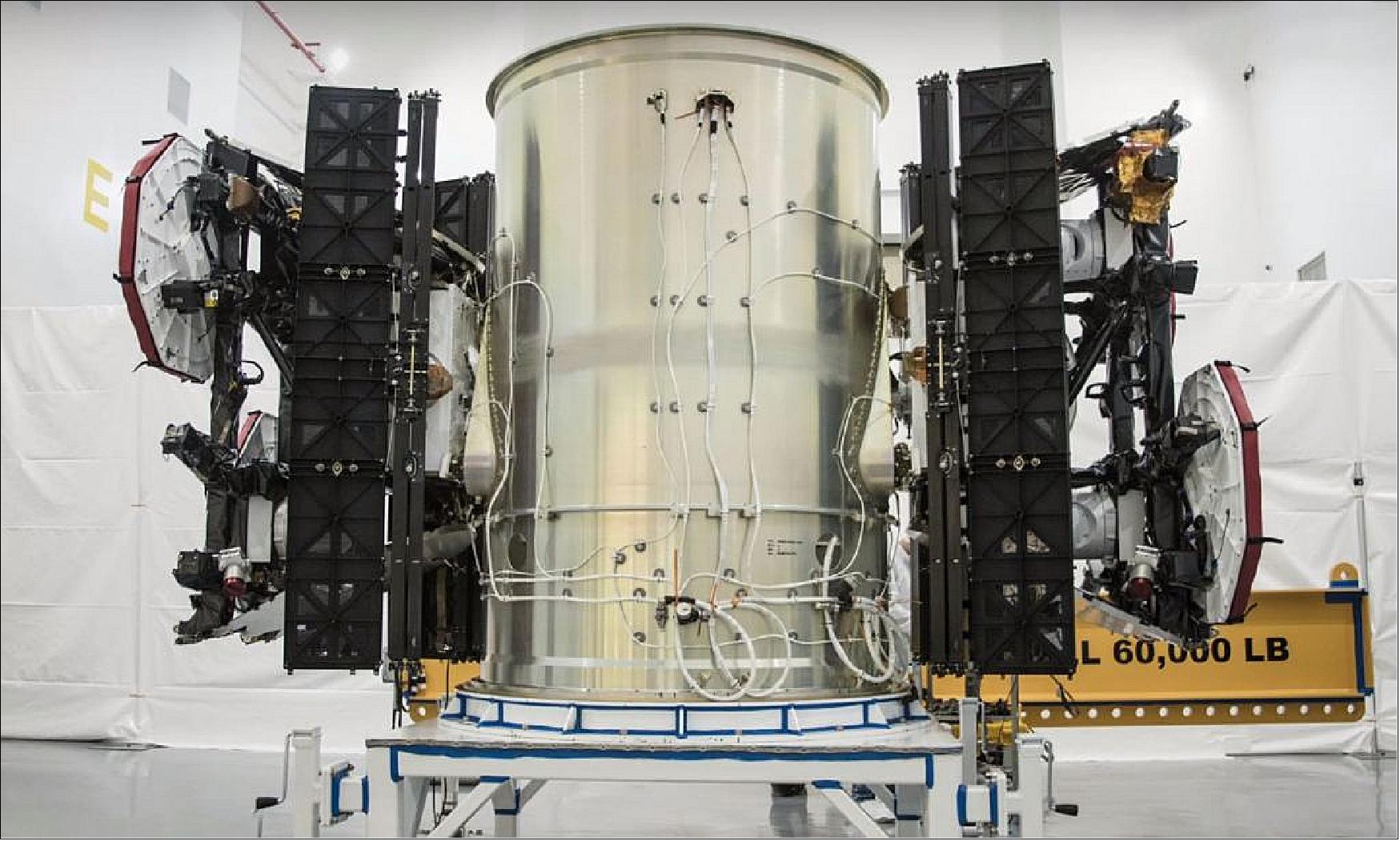
Figure 50: SpaceX’s first two Starlink prototype satellites are pictured here before their inaugural launch, showing off a thoroughly utilitarian bus and several advanced components. They were launched as secondary payloads with the Spanish radar observation satellite (PAZ) on a Falcon 9 rocket from Vandenberg Air Force Base, California. SpaceX called these two prototype Starlink satellites, Tintin-A and Tintin-B (image credit: SpaceX)
Impact of Satellite Constellations on Optical Astronomy and Recommendations toward Mitigations
Existing and planned large constellations of bright satellites in low-Earth orbit (LEOsats) will fundamentally change astronomical observing at optical and near-infrared (NIR) wavelengths. Nighttime images without the passage of a Sun-illuminated satellite will no longer be the norm. If the 100,000 or more LEOsats proposed by many companies and many governments are deployed, no combination of mitigations can fully avoid the impacts of the satellite trails on the science programs of current and planned ground-based optical-NIR astronomy facilities. Astronomers are just beginning to understand the full range of impacts on the discipline. Astrophotography, amateur astronomy, and the human experience of the stars and the Milky Way are already affected. This report is the outcome of the Satellite Constellations 1 (SATCON1) workshop held virtually on 29 June–2 July 2020. SATCON1, organized jointly by NSF’s NOIRLab and AAS with funding from NSF, aimed to quantify better the impacts of LEOsat constellations at optical wavelengths and explore possible mitigations.
Recent technology developments for astronomical research — especially wide-field imaging on large optical telescopes — face significant challenges from the new ability in space and communication technologies to launch many thousands of LEOsats rapidly and economically. This troubling development went unnoticed by our community as recently as 2010, when New Worlds, New Horizons — the most recent National Academies’ decadal survey of astronomy and astrophysics — was issued. In the last year, the sky has changed, with growing numbers of satellite trails contaminating astronomical images.
Many astronomical investigations collect data with the requirement of observing any part of the sky needed to achieve the research objective with uniform quality over the field of view. These include studies that are among the highest priorities in the discipline: stellar populations in the Milky Way and neighboring galaxies; searches for potentially hazardous near-Earth objects; identification of gravitational wave sources such as neutron star mergers; and wide-area searches for transiting exoplanets. At a minimum, a fraction of the area being imaged is lost to the trails or significantly reduced in S/N (signal-to-noise ratio). However, many of these areas of research also include a time-critical aspect and/or a rare, scientifically critical target. Such a missed target, even with low probability, will significantly diminish the scientific impact of the project. For example, if a near-Earth object is not recovered, its orbital parameters are lost. If the transit of a promising super-Earth exoplanet candidate is missed, the orbital timing may not be recovered. If the optical counterpart of a gravitational wave source is lost in the few percent of pixels in satellite trails, its rapid fading may preclude subsequent identification. Detailed simulations beyond the scope of this workshop are required to better quantify the potential scientific cost of losing uniform full area coverage in these cases.
Even more challenging simulations are required to understand the impact on very large samples (e.g., from Vera C. Rubin Observatory) that are limited not by small number statistics but rather by systematic uncertainties. One measure of precision cosmology, for example, is the gravitational weak lensing shear that elongates faint galaxy images, and more complex modeling is needed to understand the major impact these satellites will have on this field.
Initial visibility simulations have shown the significant negative impacts expected from two communications-focused LEOsat constellations, Starlink (launched by Space Exploration holdings, LLC [SpaceX]), and OneWeb. For SATCON1, simulations were performed of the visibility of LEOsats with 30,000 second-generation Starlink satellites below 614 km and ~48,000 OneWeb satellites at 1200 km, in accord with the FCC filings for these projects. For all orbital heights, the visibility of sunlit satellites remains roughly constant between sunset and astronomical twilight (Sun 18 degrees below the horizon). The key difference between lower (~600 km) and higher (~1200 km) orbits is the visibility in the dark of night between astronomical twilights: higher altitude constellations can be visible all night long during summer, with only a small reduction in the number visible compared to those in the twilight.
Mitigation of the most damaging impacts on scientific programs is now being actively explored by the professional astronomy community worldwide. These investigations have benefited from collaboration with SpaceX, the first operator to launch a substantial constellation of LEOsats (538 satellites over 9 launches as of July 2020). Changes are required at both ends: constellation operators and observatories. SpaceX has shown that operators can reduce reflected sunlight through satellite body orientation, Sun shielding, and surface darkening. A joint effort to obtain higher accuracy public data on predicted locations of individual satellites (or ephemerides) could enable some pointing avoidance and mid-exposure shuttering during satellite passage. Observatories will need to adopt more dynamic scheduling and observation management as the number of constellation satellites increases, though even these measures will be ineffective for many science programs.
SATCON1 was attended by over 250 astronomers and engineers from commercial operators (mainly from SpaceX since they are furthest along in their work on this issue), as well as other stakeholders, and reached a number of conclusions and recommendations for future work. The organizers hope that the collegiality and spirit of partnership between these two communities will expand to include other operators and observatories and continue to prove useful and productive. Our findings and recommendations should serve as guidelines for observatories and satellite operators alike to use going forward, even as we work toward a more detailed understanding of the impacts and mitigations.
References
1) Matt Williams, ”SpaceX’s Starlink Constellation Construction Begins. 2,200 Satellites Will go up Over the Next 5 years,” Universe Today, 16 April 2019, URL: https://www.universetoday.com/141980/spacexs-starlink-constellation-construction-begins-2200-satellites-will-go-up-over-the-next-5-years/
2) https://en.wikipedia.org/wiki/Starlink_(satellite_constellation)
3) Elon Musk, ”Starlink,” August 20, 2019, https://www.starlink.com/
4) Jason Rainbow, ”SpaceX requests spectrum to upgrade Starlink mobile services,” SpaceNews, 27 July 2022, URL: https://spacenews.com/spacex-requests-spectrum-to-upgrade-starlink-mobile-services/
5) Jason Rainbow, ”Dish says SpaceX’s Starlink 5G interference study is flawed,” SpaceNews, 7 July 2022, URL: https://spacenews.com/dish-says-spacexs-starlink-5g-interference-study-is-flawed/
6) Jason Rainbow, ”SpaceX warns 5G plan would deny Starlink to most Americans,” SpaceNews, 21 June 2022, URL: https://spacenews.com/spacex-warns-5g-plan-would-deny-starlink-to-most-americans/
7) Jeff Foust, ”Astronomers renew concerns about Starlink satellite brightness,” SpaceNews, 17 June 2022, URL: https://spacenews.com/astronomers-renew-concerns-about-starlink-satellite-brightness/
8) Jason Rainbow, ”Starlink and OneWeb reach spectrum coordination plan,” SpaceNews, 14 June 2022, URL: https://spacenews.com/starlink-and-oneweb-reach-spectrum-coordination-plan/
9) Jason Rainbow, ”Starlink regains permission to operate in France,” SpaceNews, 6 June 2022, URL: https://spacenews.com/starlink-regains-permission-to-operate-in-france/
10) Jason Rainbow,”‘Mounting evidence’ shows need for Starlink Gen 2 environmental review, says Viasat,” SpaceNews, 2 May 2022, URL: https://spacenews.com/mounting-evidence-shows-need-for-starlink-gen-2-environmental-review-says-viasat/
11) Andy Lawrence, Meredith L. Rawls, Moriba Jah, Aaron Boley, Federico Di Vruno, Simon Garrington, Michael Kramer, Samantha Lawler, James Lowenthal, Jonathan McDowell & Mark McCaughrean, ”The case for space environmentalism,” Nature Astronomy, Volume 6, pp: 428-435, Published: 22 April 2022, https://doi.org/10.1038/s41550-022-01655-6, URL: https://www.nature.com/articles/s41550-022-01655-6.pdf
12) Jason Rainbow, ”Starlink signs first inflight Wi-Fi deal for services later this year,” SpaceNews, 22 April 2022, URL: https://spacenews.com/starlink-signs-first-inflight-wi-fi-deal-for-services-later-this-year/
13) Jason Rainbow, ”Starlink loses French spectrum license,” SpaceNews, 7 April 2022, URL: https://spacenews.com/starlink-loses-french-spectrum-license/
14) Jeff Foust, ”NASA outlines concerns about Starlink next-generation constellation in FCC letter,” SpaceNews, 9 February 2022, URL: https://spacenews.com/nasa-outlines-concerns-about-starlink-next-generation-constellation-in-fcc-letter/
15) Jason Rainbow, ”Pakistan is next to halt Starlink preorders,” SpaceNews, 19 January 2022, URL: https://spacenews.com/pakistan-is-next-to-halt-starlink-preorders/
16) Jason Rainbow, ”Starlink’s head of India resigns as SpaceX refunds preorders,” SpaceNews, 4 January 2021, URL: https://spacenews.com/starlinks-head-of-india-resigns-as-spacex-refunds-preorders/
17) Jason Rainbow, ”India orders halt on Starlink presales until it gives regulatory approval,” Space News, 29 November 2021, URL: https://spacenews.com/india-orders-halt-on-starlink-presales-until-it-gives-regulatory-approval/
18) Jason Rainbow, ”All future Starlink satellites will have laser crosslinks,” SpaceNews, 26 August 2021, URL: https://spacenews.com/all-future-starlink-satellites-will-have-laser-crosslinks/
19) Jason Rainbow, ”Viasat wants FCC to review Starlink’s government funding,” SpaceNews, 1 June 2021, URL: https://spacenews.com/viasat-wants-fcc-to-review-starlinks-government-funding/
20) Jeff Foust, ”FCC approves Starlink license modification,” SpaceNews, 27 April 2021, URL: https://spacenews.com/fcc-approves-starlink-license-modification/
21) Jeff Foust, ”SpaceX adds to latest funding round,” SpaceNews, 15 April 2021, URL: https://spacenews.com/spacex-adds-to-latest-funding-round/
22) J. D. Harrington, ”NASA, SpaceX Sign Joint Spaceflight Safety Agreement,” NASA Commercial Space, Press Release 21-011, 18 March 2021, URL: https://www.nasa.gov/press-release/nasa-spacex-sign-joint-spaceflight-safety-agreement
23) ”SpaceX launches public beta test of Starlink Internet service,” Space Daily, 27 October 2020, URL: https://www.spacedaily.com/reports/SpaceX_launches_public_beta_test_of_Starlink_Internet_service_999.html
24) ”SpaceX, Microsoft partner in global satellite Internet project,” Space Daily, 21 October 2020, URL: https://www.spacedaily.com/reports/SpaceX_Microsoft_partner_in_global_satellite_Internet_project_999.html
25) ”FCC Authorizes SpaceX To Deploy A Million Antennas For Starlink Satellites,” Satnews Daily, 23 March 2020, URL: http://www.satnews.com/story.php?number=280640621
26) Stephen Clark, ”SpaceX’s brisk Starlink launch cadence to continue next week,” Spaceflight Now, 14 January 2020, URL: https://spaceflightnow.com/2020/01/14/spacexs-brisk-starlink-launch-cadence-to-continue-next-week/
27) Jeff Foust, ”SpaceX, astronomers working to address brightness of Starlink satellites,” Space News, 8 January 2020, URL: https://spacenews.com/spacex-astronomers-working-to-address-brightness-of-starlink-satellites/
28) ”SpaceX seeking many more satellites for space-based internet grid,” Space Daily, 16 October 2019, URL: http://www.spacedaily.com/reports/SpaceX_seeking_many_more_satellites_for_space-based_internet_grid_999.html
29) Eric Ralph, ”SpaceX CEO Elon Musk reveals radical Starlink redesign for 60-satellite launch,” Tesla Rati, 11 May 2019, URL: https://www.teslarati.com/spacex-starlink-satellites-tease-revolutionary-design/
30) Stephen Clark, ”FCC approves SpaceX’s plan to operate Starlink satellites at lower altitude,” Spaceflight Now, 30 April 2019, URL: https://spaceflightnow.com/2019/04/30/fcc-approves-spacexs-plan-to-operate-starlink-satellites-at-lower-altitude/
31) Eric Ralph, ”SpaceX’s first dedicated Starlink launch announced as mass production begins,” Tesla Rati, 8 April 2019, URL: https://www.teslarati.com/spacex-starlink-first-launch-date/
32) ”SpaceX gets nod to put 12,000 satellites in orbit,” Phys.org, 16 November 2018, URL: https://phys.org/news/2018-11-spacex-satellites-orbit.html
33) ”SpaceX Receives FCC's Stamp of Approval to Launch 4,425 Broadband Satellites,” Satnews Daily, 2 April 2018, URL: http://www.satnews.com/story.php?number=1759391214
34) Jon Brodkin, ”FCC approves SpaceX plan to launch 4,425 broadband satellites,” ars Technica, 30 March 2018, URL: https://arstechnica.com/information-technology/2018/03/spacex-gets-fcc-approval-to-build-worldwide-satellite-broadband-network/
35) ”SpaceX launches Falcon 9 with PAZ, Starlink demo and new fairing,” NASA Spaceflight.com, 22 February 2018, URL: https://www.nasaspaceflight.com/2018/02/spacex-falcon-9-paz-launch-starlink-demo-new-fairing/
36) ”Starlink Mission,” SpaceX, 22 July 2022, URL: https://www.spacex.com/launches/sl3-2/
37) ”SpaceX breaks its annual record with 32nd successful launch in 2022,” Space Daily, 22 July 2022, URL: https://www.spacedaily.com/reports/SpaceX_breaks_its_annual_record_with_32nd_successful_launch_in_2022_999.html
38) Stephen Clark, ”SpaceX deploys 53 more Starlink satellites on record-tying 31st launch of the year,” Spaceflight Now, 17 July 2022, URL: https://spaceflightnow.com/2022/07/17/spacex-deploys-53-more-starlink-satellites-on-record-tying-31st-launch-of-the-year/
39) ”Starlink Mission,” SpaceX, 10 July 2022, URL: https://www.spacex.com/launches/sl3-1/
40) Anthony Lemole, ”SpaceX launches first mission to third shell of Starlink constellation,” NASA Spaceflight.com, 10 July 2022, URL: https://www.nasaspaceflight.com/2022/07/starlink-3-1/
41) ”Starlink Mission,” SpaceX, 7 July 2022, URL: https://www.spacex.com/launches/sl4-21/
42) ”SpaceX’s 53 Starlink satellites are on their way,” Satnews, 7 July 2022, URL: https://news.satnews.com/2022/07/07/the-next-spacex-starlink-launch-is-scheduled-for-july-7th-from-cape-canaveral/
43) ”Starlink Mission,” SpaceX, 17 June 2022, URL: https://www.spacex.com/launches/sl4-19/
44) Stephen Clark, ”Live coverage: SpaceX launches 53 more Starlink internet satellites,” Spaceflight Now, 17 June 2022, URL: https://spaceflightnow.com/2022/06/17/falcon-9-starlink-4-19-live-coverage/
45) Mike Wall, ”SpaceX rocket launches 53 Starlink satellites into orbit and aces landing at sea,” Space.com, 18 May 2022, URL: https://www.space.com/spacex-starlink-launch-group-4-18
46) SpaceX launches Starlink 4-15 mission, expands booster fleet,” NASA Spaceflight.com, 14 May 2022, URL: https://www.nasaspaceflight.com/2022/05/spacex-starlink-4-15/
47) ”Starlink Mission,” SpaceX, 13 May 2022, URL: https://www.spacex.com/launches/sl4-13/
48) Mike Wall, ”SpaceX launches dozens of Starlink satellites, lands rocket on ship at sea,” Space.com, 13 May, 2022, URL: https://www.space.com/spacex-starlink-launch-group-4-13
49) Stephen Clark, ”More Starlink satellites ride into orbit on predawn launch of Falcon 9 rocket,” Spaceflight Now, 6 May 2022, URL: https://spaceflightnow.com/2022/05/06/more-starlink-satellites-ride-into-orbit-on-predawn-launch-of-falcon-9-rocket/
50) Jeff Foust, ”Falcon 9 busier than ever as Starship reviews delayed again,” SpaceNews, 01 May 2022, URL: https://spacenews.com/falcon-9-busier-than-ever-as-starship-reviews-delayed-again/
51) Alejandro Alcantarilla, ”SpaceX launch cadence moves forward with 53 more Starlink satellites to orbit,” NASA Spaceflight.com, 21 April 2022, URL: https://www.nasaspaceflight.com/2022/04/starlink-4-14-launch/
52) Stephen Clark, ”Live coverage: SpaceX launches Falcon 9 fleet-leader with more Starlink satellites,” Spaceflight Now, 19 March 2022, URL: https://spaceflightnow.com/2022/03/18/falcon-9-starlink-4-12-live-coverage/
53) Stephen Clark, ”Live coverage: SpaceX launches another Starlink mission,” Spaceflight Now, 9 March 2022, URL: https://spaceflightnow.com/2022/03/09/falcon-9-starlink-4-10-live-coverage/
54) ”Starlink Mission,” SpaceX, 3 March 2022, URL: https://www.spacex.com/launches/sl4-9/
55) Stephen Clark, ”After another Starlink mission, SpaceX on pace for one launch per week this year,” Spaceflight Now, 3 March 2022, URL: https://spaceflightnow.com/2022/03/03/after-another-starlink-mission-spacex-on-pace-for-one-launch-per-week-this-year/
56) Jeff Foust, ”SpaceX makes its case for space sustainability with latest Starlink launch,” SpaceNews, 25 February 2022, URL: https://spacenews.com/spacex-makes-its-case-for-space-sustainability-with-latest-starlink-launch/
57) Jeff Foust, ”SpaceX launches Starlink satellites to higher orbit,” SpaceNews, 21 February 2022, URL: https://spacenews.com/spacex-launches-starlink-satellites-to-higher-orbit/
58) Jason Rainbow, ”SpaceX launches latest Starlink batch ahead of premium service plan,” SpaceNews, 3 February 2022, URL: https://spacenews.com/spacex-launches-latest-starlink-batch-ahead-of-premium-service-plan/
59) Jeff Foust, ”SpaceX passes 2,000 Starlink satellites launched,” SpaceNews, 18 January 2022, URL: https://spacenews.com/spacex-passes-2000-starlink-satellites-launched/
60) Jeff Foust, ”SpaceX kicks off 2022 with Starlink launch,” SpaceNews, 6 January 2022, URL: https://spacenews.com/spacex-kicks-off-2022-with-starlink-launch/
61) Jeff Foust, ”Falcon 9 sets reuse milestone with Starlink launch,” SpaceNews, 18 December 2021, URL: https://spacenews.com/falcon-9-sets-reuse-milestone-with-starlink-launch/
62) Jason Rainbow, ”SpaceX breaks annual launch record as it deploys 48 more Starlink satellites,” SpaceNews, 02 December 2021, URL: https://spacenews.com/spacex-breaks-annual-launch-record-as-it-deploys-48-more-starlink-satellites/
63) Stephen Clark, ”SpaceX launch starts deployment of new Starlink orbital shell,” Spaceflight Now, 13 November 2021, URL: https://spaceflightnow.com/2021/11/13/spacex-launch-starts-deployment-of-new-starlink-orbital-shell/
64) Jeff Foust, ”SpaceX launches first dedicated polar Starlink mission,” SpaceNews, 14 September 2021, URL: https://spacenews.com/spacex-launches-first-dedicated-polar-starlink-mission/
65) Stephen Clark, ”New version of SpaceX’s Starlink internet satellites to begin launching Monday,” Spaceflight Now, 13 September 2021, URL: https://spaceflightnow.com/2021/09/13/new-version-of-spacexs-starlink-internet-satellites-to-begin-launching-monday/
66) Jeff Foust, ”SpaceX sets Falcon 9 fairing reuse mark with Starlink launch,” SpaceNews, 26 May 2021, URL: https://spacenews.com/spacex-sets-falcon-9-fairing-reuse-mark-with-starlink-launch/
67) ”Recent Launch Starlink Mission,” SpaceX, 15 May 2021, URL: https://www.spacex.com/launches/
68) Jeff Foust, ”SpaceX launches Starlink satellites and rideshare payloads,” SpaceNews, 15 May 2021, URL: https://spacenews.com/spacex-launches-starlink-satellites-and-rideshare-payloads/
69) ”Recent Launch Starlink Mission,” SpaceX, 9 May 2021, URL: https://www.spacex.com/launches/
70) Jeff Foust, ”SpaceX sets booster reuse milestone on Starlink launch,” SpaceNews, 9 May 2021, URL: https://spacenews.com/spacex-sets-booster-reuse-milestone-on-starlink-launch/
71) Jeff Foust, ”SpaceX continues Starlink deployment with latest launch,” SpaceNews, 4 May 2021, URL: https://spacenews.com/spacex-continues-starlink-deployment-with-latest-launch/
72) Jeff Foust, ”SpaceX launches Starlink satellites,” SpaceNews, 29 April 2021, URL: https://spacenews.com/spacex-launches-starlink-satellites/
73) Jeff Foust, ”SpaceX launches another set of Starlink satellites as it nears global coverage,” SpaceNews, 7 April 2021, URL: https://spacenews.com/spacex-launches-another-set-of-starlink-satellites-as-it-nears-global-coverage/
74) Jeff Foust, ”SpaceX marks anniversary of first launch with Starlink mission,” SpaceNews, 24 March 2021, URL: https://spacenews.com/spacex-marks-anniversary-of-first-launch-with-starlink-mission/
75) Jeff Foust, ”SpaceX sets new booster reuse mark with Starlink launch,” SpaceNews, 14 March 2021, URL: https://spacenews.com/spacex-sets-new-booster-reuse-mark-with-starlink-launch/
76) Jeff Foust, ”SpaceX launches Starlink satellites and expands international service,” SpaceNews, 11 March 2021, URL: https://spacenews.com/spacex-launches-starlink-satellites-and-expands-international-service/
77) Stephen Clark, ”SpaceX sticks 75th Falcon rocket landing after launching 60 more Starlink satellites,” Spaceflight Now, 4 March 2021, URL: https://spaceflightnow.com/2021/03/04/spacex-sticks-75th-falcon-rocket-landing-after-launching-60-more-starlink-satellites/
78) Jeff Foust, ”SpaceX launches Starlink satellites, but booster landing fails,” SpaceNews, 16 February 2021, URL: https://spacenews.com/spacex-launches-starlink-satellites-but-booster-landing-fails/
79) Jeff Foust, ”Falcon 9 launches Starlink satellites,” SpaceNews, 4 February 2021, URL: https://spacenews.com/falcon-9-launches-starlink-satellites/
80) Stephen Clark, ”SpaceX smashes record with launch of 143 small satellites,” Spaceflight Now, 24 January 2021, URL: https://spaceflightnow.com/2021/01/24/spacex-launches-record-setting-rideshare-mission-with-143-small-satellites/
81) Jeff Foust, ”SpaceX surpasses 1,000-satellite mark in latest Starlink launch,” SpaceNews, 20 January 2021, URL: https://spacenews.com/spacex-surpasses-1000-satellite-mark-in-latest-starlink-launch/
82) Stephen Clark, ”SpaceX sets new rocket reuse records with successful Starlink launch,” Spaceflight Now, 20 January 2021, URL: https://spaceflightnow.com/2021/01/20/spacex-sets-new-rocket-reuse-records-with-successful-starlink-launch/
83) Stephen Clark, ”SpaceX launches 60 more Starlink satellites on 100th Falcon 9 flight,” Spaceflight Now, 25 November 2020, URL: https://spaceflightnow.com/2020/11/25/spacex-launches-60-more-starlink-satellites-on-100th-falcon-9-flight/
84) Stephen Clark, ”SpaceX adds another 60 satellites to Starlink network,” Spaceflight Now, 24 October 2020, URL: https://spaceflightnow.com/2020/10/24/spacex-adds-another-60-satellites-to-starlink-network/
85) Stephen Clark, ”SpaceX launches another batch of Starlink satellites,” Spaceflight Now, 18 October 2020, URL: https://spaceflightnow.com/2020/10/18/spacex-launches-another-batch-of-starlink-satellites/
86) Jeff Foust, ”Falcon 9 investigation ongoing as SpaceX continues Starlink launches,” SpaceNews, 18 October 2020, URL: https://spacenews.com/falcon-9-investigation-ongoing-as-spacex-continues-starlink-launches/
87) Stephen Clark, ”SpaceX breaks cycle of scrubs with successful Falcon 9 launch,” Spaceflight Now, 6 October 2020, URL: https://spaceflightnow.com/2020/10/06/spacex-breaks-cycle-of-scrubs-with-successful-falcon-9-launch/
88) Stephen Clark, ”SpaceX launches more Starlink satellites, beta testing well underway,” Spaceflight Now, 3 September 2020, URL: https://spaceflightnow.com/2020/09/03/spacex-launches-more-starlink-satellites-beta-testing-well-underway/
89) Stephen Clark, ”SpaceX adds more satellites to ever-growing Starlink network,” Spaceflight Now, 18 August 2020, URL: https://spaceflightnow.com/2020/08/18/spacex-adds-more-satellites-to-ever-growing-starlink-network/
90) Stephen Clark, ”SpaceX closes out busy week with launch of more Starlink satellites,” Spaceflight Now, 7 August 2020, URL: https://spaceflightnow.com/2020/08/07/spacex-closes-out-busy-week-with-launch-of-more-starlink-satellites/
91) ”SpaceX launched 10th Starlink batch,” Space Daily, 07 August 2020, URL: https://www.spacedaily.com/reports/SpaceX_launched_10th_Starlink_batch_999.html
92) Caleb Herny, ”SpaceX launches 58 Starlink satellites, three Planet SkySats on Falcon 9,” SpaceNews, 13 June 2020, URL: https://spacenews.com/spacex-launches-58-starlink-satellites-three-planet-skysats-on-falcon-9/
93) ”SpaceX sets new mark in rocket reuse 10 years after first Falcon 9 launch,” Spaceflight Now, 4 June 2020, URL: https://spaceflightnow.com/2020/06/04/spacex-sets-new-mark-in-rocket-reuse-10-years-after-first-falcon-9-launch/
94) ”SpaceX launch boosts Starlink network to 480 satellites,” Space Daily, 4 June 2020, URL: https://www.spacedaily.com/reports/SpaceX_launch_boosts_Starlink_network_to_480_satellites_999.html
95) ”SpaceX Successfully Launches 60 Starlink Satellites but is Unsuccessful with Recovery of First Stage,” Satnews Daily, 18 March 2020, URL: http://www.satnews.com/story.php?number=61076689
96) Stephen Clark, ”Falcon 9 rocket overcomes engine failure to deploy Starlink satellites,” Spaceflight Now, 18 March 2020, URL: https://spaceflightnow.com/2020/03/18/falcon-9-rocket-overcomes-engine-failure-to-deploy-starlink-satellites/
97) Stephen Clark, ”SpaceX delivers more Starlink satellites to orbit, booster misses drone ship landing,” Spaceflight Now, 17 February 2020, URL: https://spaceflightnow.com/2020/02/17/spacex-delivers-more-starlink-satellites-to-orbit-booster-misses-drone-ship-landing/
98) Stephen Clark, ”SpaceX boosts 60 more Starlink satellites into orbit after weather delays,” Spaceflight Now, 29 January 2020, URL: https://spaceflightnow.com/2020/01/29/spacex-boosts-60-more-starlink-satellites-into-orbit-after-weather-delays/
99) Stephen Clark, ”SpaceX launches more Starlink satellites, tests design change for astronomers,” Spaceflight Now, 7 January 2020, URL: https://spaceflightnow.com/2020/01/07/spacex-launches-more-starlink-satellites-tests-design-change-for-astronomers/
100) Stephen Clark, ”Successful launch continues deployment of SpaceX’s Starlink network,” Spaceflight Now, 11 November 2019, URL: https://spaceflightnow.com/2019/11/11/successful-launch-continues-deployment-of-spacexs-starlink-network/
101) Chris Gebhardt, ”Falcon 9 launches first Starlink mission – heaviest payload launch by SpaceX to date,” NASA Spaceflight.com, 23 May 2019, URL: https://www.nasaspaceflight.com/2019/05/first-starlink-mission-heaviest-payload-launch-spacex/
102) ”Sixty Launched ... 11,940 Left to Go ... as SpaceX Successfully Sends Off Their First Batch of Starlink Satellites,” Satnews Daily, 24 May 2019, URL: http://www.satnews.com/story.php?number=179808724
103) ”SpaceX launches first satellites of its internet network,” Space Daily, 24 May 2019, URL: http://www.spacedaily.com/reports/SpaceX_launches_first_satellites_of_its_internet_network_999.html .
104) Sandra Erwin, ”Intelsat rolls out network service that integrates Starlink and geostationary satellites,” SpaceNews, 26 March 2022, URL: https://spacenews.com/intelsat-rolls-out-network-service-that-integrates-starlink-and-geostationary-satellites/
105) Jeff Foust, ”Dozens of Starlink satellites from latest launch to reenter after geomagnetic storm,” SpaceNews, 9 February 2022, URL: https://spacenews.com/dozens-of-starlink-satellites-from-latest-launch-to-reenter-after-geomagnetic-storm/
106) ”Geomagnetic Storm and recently deployed Starling satellites,” SpaceX update, 8 February 2022, URL: https://www.spacex.com/updates/
107) ”Palomar Survey Instrument Analyzes Impact of Starlink Satellites,” Caltech News, 17 January 2022, URL: https://www.caltech.edu/about/news/palomar-survey-instrument-analyzes-impact-of-starlink-satellites
108) Przemek Mróz, Angel Otarola, Thomas A. Prince, Richard Dekany, Dmitry A. Duev, Matthew J. Graham, Steven L. Groom, Frank J. Masci, and Michael S. Medford,”Impact of the SpaceX Starlink Satellites on the Zwicky Transient Facility Survey Observations,” The Astrophysical Journal Letters, Volume 924, Number 2, Published: 14 January 2022, https://doi.org/10.3847/2041-8213/ac470a, URL: https://iopscience.iop.org/article/10.3847/2041-8213/ac470a/pdf
109) Jeff Foust, ”SpaceX emphasizes coordination with other satellite operators,” SpaceNews, 16 September 2021, URL: https://spacenews.com/spacex-emphasizes-coordination-with-other-satellite-operators/
110) Jason Rainbow, ”Starlink teams up with Google for ground infrastructure,” SpaceNews, 13 May 2021, URL: https://spacenews.com/starlink-teams-up-with-google-for-ground-infrastructure/
111) Jason Rainbow, ”SpaceX takes aim at satellite mobility operators with Starlink expansion,” SpaceNews, 8 March 2021, URL: https://spacenews.com/spacex-takes-aim-at-satellite-mobility-operators-with-starlink-expansion/
112) ”French village says 'non' to Elon Musk's space-age internet,” Space Daily, 19 February 2021, URL: https://www.spacedaily.com/reports/French_village_says_non_to_Elon_Musks_space-age_internet_999.html
113) Michael Sheetz, ”SpaceX says its Starlink satellite internet service now has over 10,000 users,” CNBC, 4 February 2021, URL: https://www.cnbc.com/2021/02/04/spacex-starlink-satellite-internet-service-has-over-10000-users.html
114) ”Statement on Satellite Constellations,” Press Release, AG (Astronomische Gesellschaft), 18 January 2021, URL: https://idw-online.de/de/news761318
115) Jeff Foust, ”FCC grants permission for polar launch of Starlink satellites,” SpaceNews, 9 January 2021, URL: https://spacenews.com/fcc-grants-permission-for-polar-launch-of-starlink-satellites/
116) ”Dark coating can reduce satellite reflectivity,” Science Daily, 8 December 2020, URL: https://www.sciencedaily.com/releases/2020/12/201208090000.htm
117) Takashi Horiuchi, Hidekazu Hanayama, and Masatoshi Ohishi, ”Simultaneous Multicolor Observations of Starlink's Darksat by the Murikabushi Telescope with MITSuME,” The Astrophysical Journal, Volume 905, Number 1, Published: 7 December 2020, https://doi.org/10.3847/1538-4357/abc695
118) ”SpaceX wins $885 million for Starlink broadband service,” Space Daily, 7 December 2020, URL: https://www.spacedaily.com/reports/SpaceX_wins_885_million_for_Starlink_broadband_service_999.html
119) Jeff Foust, ”Report outlines measures to reduce impact of satellite constellations on astronomy,” SpaceNews, 26 August 2020, URL: https://spacenews.com/report-outlines-measures-to-reduce-impact-of-satellite-constellations-on-astronomy/
120) C. Walker, J. Hall, L. Allen, P. Seitzer, A. Tyson, A. Bauer, K. Krafton, J. Lownthal, J. Parriott, P. Puxley, T. Abbott, G. Bakos, J. Barentine, C. Bassa, J. Blakeslee, A. Bradshaw, J. Cooke, D. Devost, D. Galadi, F. Haase, O. Hainaut, S. Heathcote, M. Jah, H. Krantz, D. Kucharski, J. McDowell, P. Mroz, A. Otarola, E. Pearce, M. Rawls, C. Saunders, R. Seaman, J. Siminski, A. Snyder, L. Storrie-Lombardi, J. Tregloan-Reed, R. Wainscoat, A. Williams, and P. Yoachim, ”Satellite Constellations 1 Workshop Report,” AAS, 25 August 2020, URL: https://aas.org/satellite-constellations-1-workshop-report
121) ”Strings of pearls in the night sky – the Starlink satellite project,” DLR, 15 May 2020, URL: https://www.dlr.de/content/en/articles/news/2020/02/20200515_the-starlink-satellite-project.html
122) Jeff Foust, ”SpaceX to test Starlink “sun visor” to reduce brightness,” SpaceNews, 27 April 2020, URL: https://spacenews.com/spacex-to-test-starlink-sun-visor-to-reduce-brightness/
123) ”Killer asteroid hunt in jeopardy, new study claims,” Space Daily, 19 March 2020, URL: https://www.spacedaily.com/reports/Killer_asteroid_hunt_in_jeopardy_new_study_claims_999.html
124) Jonathan McDowell, ”The Low Earth Orbit Satellite Population and Impacts of the SpaceX Starlink Constellation,” Draft Version 16 March 2020, Submitted to ApJL (Astrophysical Journal), URL: https://planet4589.org/space/papers/starlink20.pdf
125) ”New ESO Study Evaluates Impact of Satellite Constellations on Astronomical Observations,” eso2004 Organization Release, 5 March 2020, URL: https://www.eso.org/public/news/eso2004/
126) Oliver R. Hainaut, Andrew P. Williams, ”Impact of satellite constellations on astronomical observations with ESO telescopes in the visible and infrared domains,” Astronomy & Astrophysics, 3 March 2020, https://doi.org/10.1051/0004-6361/202037501, URL: https://www.aanda.org/articles/aa/pdf/forth/aa37501-20.pdf
127) Troy Farah, ”Light pollution from satellites will get worse. But how much?,” Nature Astronomy News, 14 June 2019, URL: http://www.astronomy.com/news/2019/06/light-pollution-from-satellites-will-get-worse-but-how-much
128) Alexandra Witze, ”SpaceX tests black satellite to reduce ‘megaconstellation’ threat to astronomy — Latest launch includes ‘DarkSat’ prototype to reduce reflection from fleets of broadband Internet satellites,” Nature Astronomy News, 9 January 2020, URL: https://www.nature.com/articles/d41586-020-00041-4
129) Gunter’s Space Page, “Starlink Block v2-Mini-D2C”https://space.skyrocket.de/doc_sdat/starlink-v2-mini-d2c.htm
130) Gunter’s Space Page, “Starlink Block v0.9”, URL: https://space.skyrocket.de/doc_sdat/starlink-v0-9.htm
131) Gunter’s Space Page, “Starlink Block v1.0”, URL: https://space.skyrocket.de/doc_sdat/starlink-v1-0.htm
132) Gunter’s Space Page, “Starlink Block v1.5”, URL: https://space.skyrocket.de/doc_sdat/starlink-v1-5.htm
133) Gunter’s Space Page, “Starlink Block v2-Mini”, URL: https://space.skyrocket.de/doc_sdat/starlink-v2-mini.htm
134) SpaceX, “Transporter-2 Mission”, June 30, 2021, URL: https://www.spacex.com/launches/transporter-2-mission/
135) SpaceX, “Starlink Mission”, July 10, 2022, URL: https://www.spacex.com/launches/sl3-1/
136) SpaceX, “Starlink Mission”, May 30, 2023, URL: https://www.spacex.com/launches/mission/?missionId=sl2-10
137) SpaceX, “Starlink Mission”, April 27, 2023, URL: https://www.spacex.com/launches/mission/?missionId=sl3-5-pl
138) SpaceX, “Starlink Mission”, November 13, 2021, URL: https://www.spacex.com/launches/sl4-1/
139) SpaceX, “Starlink Mission”, December 17, 2022, URL: https://www.spacex.com/launches/mission/?missionId=sl4-37-pl
140) SpaceX, “Starlink Mission”, December 28, 2022, URL: https://www.spacex.com/launches/mission/?missionId=sl5-1-pl
141) SpaceX, “Starlink Mission”, July 15, 2023, URL: https://www.spacex.com/launches/mission/?missionId=sl-5-15
142) SpaceX, “Starlink Mission”, February 27, 2023, URL: https://www.spacex.com/launches/mission/?missionId=sl6-1-pl
143) SpaceX, “Starlink Mission”, August 22, 2023, URL: https://www.spacex.com/launches/mission/?missionId=sl-7-1
144) SpaceX, “Starlink Mission”, May 31, 2024, URL: https://www.spacex.com/launches/mission/?missionId=sl-6-64
145) SpaceX, “Starlink Mission”, April 1, 2024, URL: https://www.spacex.com/launches/mission/?missionId=sl-7-18
146) SpaceX, “Starlink Mission”, April 6, 2024, URL: https://www.spacex.com/launches/mission/?missionId=sl-8-1
147) SpaceX, “Starlink Mission”, September 5, 2024, URL: https://www.spacex.com/launches/mission/?missionId=sl-8-11
148) SpaceX, “NROL-113 Mission”, September 5, 2024, URL: https://www.spacex.com/launches/mission/?missionId=nrol-113
149) SpaceX, “Starlink Mission”, June 19, 2024, URL: https://www.spacex.com/launches/mission/?missionId=sl-9-1
150) SpaceX, “Starlink Mission”, September 25, 2024, URL: https://www.spacex.com/launches/mission/?missionId=sl-9-8
151) SpaceX, “Starlink Mission”, June 8, 2024, URL: https://www.spacex.com/launches/mission/?missionId=sl-8-8
152) SpaceX, “Starlink Mission”, August 20, 2024, URL: https://www.spacex.com/launches/mission/?missionId=sl-10-5
153) SpaceX, “Starlink Mission”, August 4, 2024, URL: https://www.spacex.com/launches/mission/?missionId=sl-11-1
154) SpaceX, “Starlink Mission”, January 2, 2024, URL: https://www.spacex.com/launches/mission/?missionId=sl-7-9
155) SpaceX, “Bandwagon-1 Mission”, April 7, 2024, URL: https://www.spacex.com/launches/mission/?missionId=bandwagon-1
156) SpaceX, “Starlink Mission”, May 9, 2024, URL: https://www.spacex.com/launches/mission/?missionId=sl-8-2
157) SpaceX, “ASTRA 1P Mission”, June 20, 2024, URL: https://www.spacex.com/launches/mission/?missionId=astra1p